Fall Program 2023




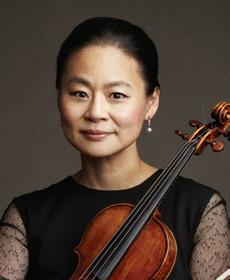



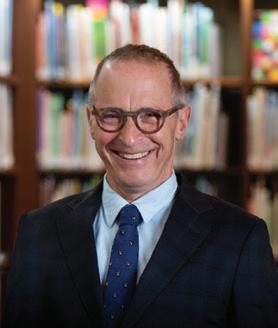

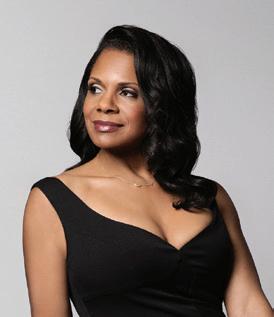
wine country cuisine in the heart of the Historic Arts District



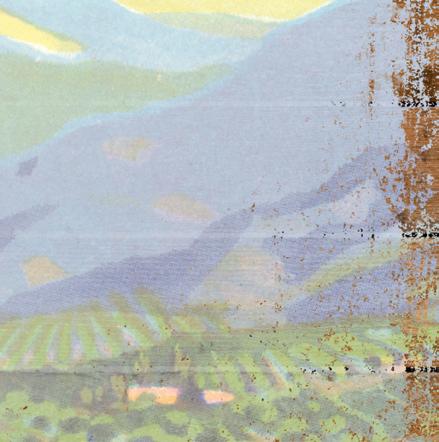


Fresh, local ingredients, prepared with care. Excellent wines that reflect the quality and character of our region and work in concert with the cuisine. Warm, inviting ambience with engaging service at a relaxed, leisurely pace. is is bouchon.
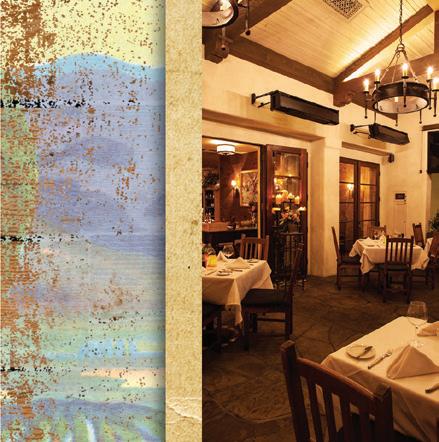



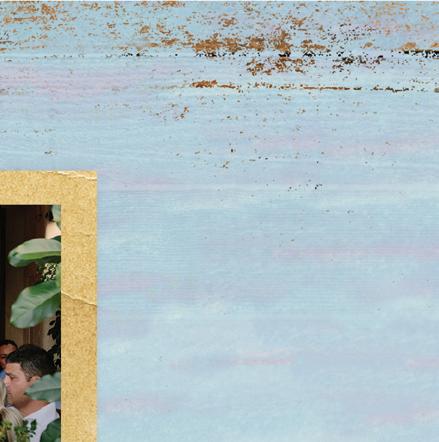
dinner nightly Sunday- ursday 5-9pm | Friday-Saturday 5-10pm

9 west victoria street | 805.730.1160 | bouchonsantabarbara.com bouchon
The Central Coast may seem laid back, but when it’s time to work, no one works harder. That includes the bank that’s grown up here.
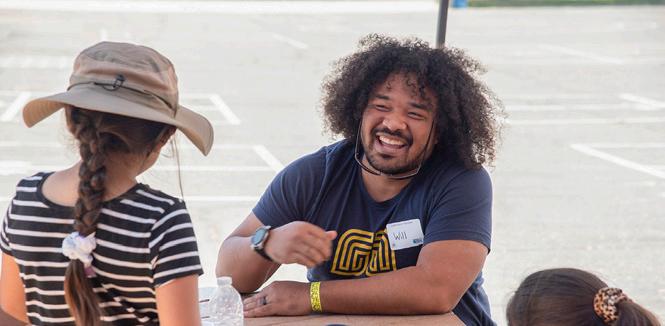
For over 48 years, Montecito Bank & Trust has offered our clients personalized banking and customized solutions because we understand that the quality of what you choose matters.

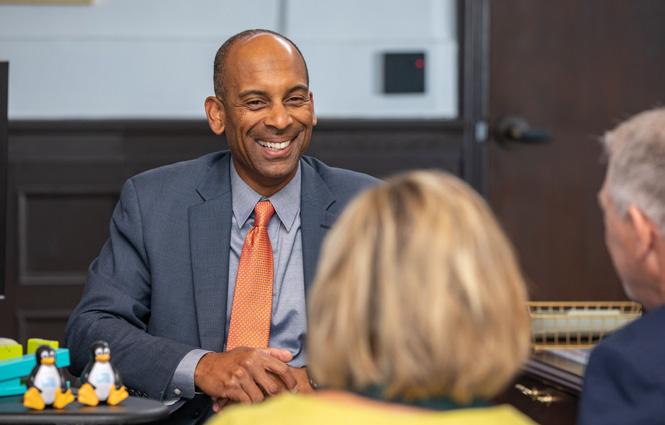
Experience for yourself what the Best Bank in Santa Barbara can do for you.


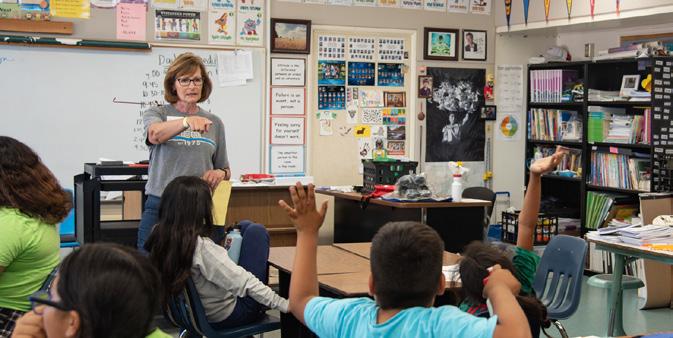
montecito.bank • (805) 963-7511
Local Banking Services Personal Checking & Savings Mortgage & Home Lending Business & Nonprofit Loans & Lines of Credit 2022 Best Mortgage Company - SB Independent 25 Best Bank Awards in 10 Years Made in
805. Bank local.
the
Dear Friends,

It’s that exciting time of year when the start of the A&L season is upon us. It all begins on opening night with musical prodigy Jacob Collier in an intimate concert unlike any other. This season, we’re Cultivating Connection – see our Thematic Learning Initiative (TLI) to learn more about why and how. Join others in your community for uplifting and unique opportunities to bust out of comfort zones, share common interests, and experience joy and creativity, always free. This fall’s book giveaway is Pico Iyer’s The Half-Known Life.
Organizational psychologist Adam Grant will discuss how we can elevate ourselves to unexpected heights (hint: we can’t do it alone). Every ticket comes with a copy of his new book Hidden Potential. Join others for a TLI session based on the event.
Friendship on stage is a running theme, including the world-renowned dance stars of Turn It Out with Tiler Peck & Friends. The collaboration between classical superstars Jean-Yves Thibaudet, Lisa Batiashvili and Gautier Capuçon runs deeper than their immense talent (if you can imagine). Under the direction of Rhiannon Giddens, the world’s artistic traditions converge in the Silkroad Ensemble, demonstrating how great beauty can emerge from great difference.
Look out for the newly-added events with Artificial Intelligence pioneer Mustafa Suleyman, disability rights advocate Eddie Ndopu and Indigenous plant ecologist Robin Wall Kimmerer. These along with other stellar lectures and performances make up our fall Justice for All programming.
See you soon and often as we remember that our most important resource is each other.
With deepest gratitude, Community Partners
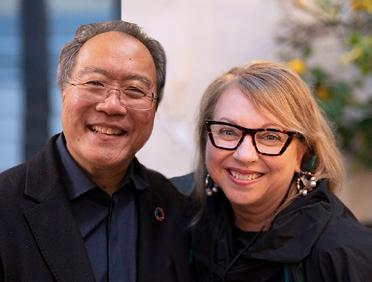 Celesta M. Billeci Miller McCune Executive Director
Celesta M. Billeci Miller McCune Executive Director
(805) 893-3535 | www.ArtsAndLectures.UCSB.edu 4
Cultural ambassador Yo-Yo Ma and Celesta M. Billeci
Illuminating a wide spectrum of systemic injustice, the Justice for All programming initiative looks to today’s great minds and creators and to the courageous leaders across the globe who are forging a new path forward. Join us as we learn from those confronting uncomfortable questions, solving difficult problems, and guiding us all toward a more equitable world.



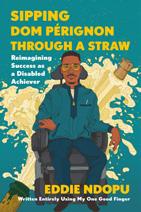




Look for additional events to be added throughout the season.
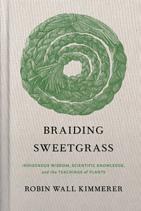


JUSTICE FOR ALL Lead Sponsors: Marcy Carsey, Connie Frank & Evan Thompson, Eva & Yoel Haller, Dick Wolf, and Zegar Family Foundation

JUSTICE FOR ALL UCSB Faculty Advisory Committee: Gerardo Aldana, Daina Ramey Berry, Charles Hale, Beth Pruitt, Susannah Scott, Sharon Tettegah, Kim Yasuda
 Robin Wall Kimmerer, Nov 14 Bridging Indigenous and scientific land knowledge
Mustafa Suleyman, Oct 5 Creating human-centered Artificial Intelligence
Eddie Ndopu, Nov 2 Championing disability justice
American Railroad : Silkroad Ensemble with Rhiannon Giddens, Nov 9 Amplifying the voices of immigrants who helped shape the nation
Robin Wall Kimmerer, Nov 14 Bridging Indigenous and scientific land knowledge
Mustafa Suleyman, Oct 5 Creating human-centered Artificial Intelligence
Eddie Ndopu, Nov 2 Championing disability justice
American Railroad : Silkroad Ensemble with Rhiannon Giddens, Nov 9 Amplifying the voices of immigrants who helped shape the nation
(805) 893-3535 | www.ArtsAndLectures.UCSB.edu 5
Jill Lepore, Oct 24 Revising the Constitution for moral progress
Arts & Lectures’ Thematic Learning Initiative (TLI) extends the conversation from the stage into the community, enriching lifelong learning and initiating dialogue and empowerment through special events, book giveaways and more.
2023-2024 Theme: Cultivating Connection
The evidence is clear – our need to connect is fundamental to our individual and collective thriving. This season is dedicated to fostering connection through acts of joy, creativity and belonging.
Fall Book Giveaway
The Half-Known Life: In Search of Paradise by Pico Iyer

Recounting the often surprising moments that bring people from different cultures to common ground, Pico Iyer explores how we can live more peacefully in an ever more divided and distracted world.
FREE copies will be available at the Author Q&A and Book Signing with Pico Iyer on October 25 at Santa Barbara Wine Collective. See details on page 7. Books available while supplies last.
With thanks to our visionary partners, Lynda Weinman and Bruce Heavin, for their support of the Thematic Learning Initiative
(805) 893-3535 | www.ArtsAndLectures.UCSB.edu 6
Cultivating Connection - Free Events
Pico Iyer Author Q&A and Book Signing

Wed, Oct 25 / 5:30 PM / FREE (registration recommended)
Santa Barbara Wine Collective
131 Anacapa Street, Suite C
Pick up your free copy of our TLI fall book giveaway, Pico Iyer’s The Half Known Life, and stay for a brief conversation and signing with the author. Enjoy no-host offerings from Santa Barbara Wine Collective and neighboring restaurants.
Leadership Roundtable: Identifying Hidden Potential
facilitated by Leading From Within


Fri, Nov 17 / 12 PM / FREE (registration recommended)
Leading From Within / 2050 Alameda Padre Serra
Based on Adam Grant’s new book and public event, this facilitated dialogue examines how building a support system provides the scaffolding we need to transform ourselves and others. (Author will not be present.)
RELATED EVENT Adam Grant, Nov 16 (p. 56)
Holiday Sing-in
featuring SBCC Choral Program, directed by Nathan Kreitzer
Fri, Dec 8 / 7 PM / Outside the Granada Theatre / FREE Sing for joy in this uplifting community happening before Samara Joy and her family spread their gospel-infused holiday cheer on stage.
RELATED EVENT Samara Joy
A Joyful Holiday, Dec 8 (p. 68)
Look for additional events to be added throughout the season.
(805) 893-3535 | www.ArtsAndLectures.UCSB.edu 7
Jacob Collier
Sun, Oct 1 / 7 PM / Campbell Hall
Program will be announced from the stage
Where to start when detailing the impact that 28-year-old producer, multi-instrumentalist and composer Jacob Collier has had on the global music scene? Recognized by audiences, critics and fellow musicians alike as one of the most gifted young artists of modern times, Collier already has a seemingly endless list of achievements including five Grammy wins – which saw him become the first British act in history to win four Grammys for each of his first four albums – along with 11 Grammy nominations including Album of the Year in 2021.
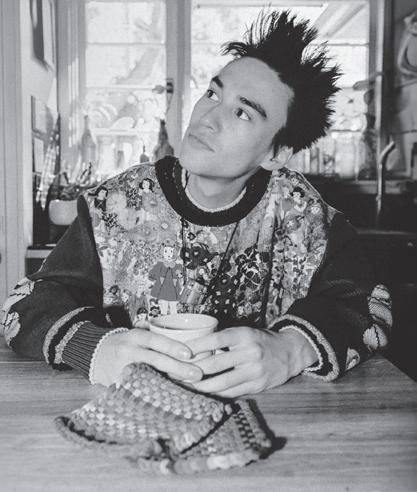
As a result, his roster of collaborators is astoundingly varied and vibrant; there is Coldplay’s Chris Martin, who he joined for three nights of a sold-out run at London’s Wembley Stadium in August 2022, as well as featuring on the group’s 2021 song “Human Heart.” Collier is a close musical confidante of U.K. superstar rapper Stormzy, co-writing and performing on no less than seven tracks, as well as appearing as a featured artist on the title track of his landmark 2022 album This Is What I Mean. He co-wrote and sang on the international 2020 hit “Good Days” with SZA, featured John Mayer on his 2022 single “Never Gonna Be Alone,” and helped Oscar-winner Hans Zimmer score the 2017 and 2021 feature films Boss Baby and its sequel Boss Baby: Family Business. In his own projects, Collier has worked with an unpredictable cast of artistic powerhouses, from Malian singer Oumou Sangaré to T-Pain, Ty Dolla $ign, Daniel Caesar, Tori Kelly and Mahalia (to name a few). Each artist has sought out Collier’s distinct musical identity, cementing his status as the conduit for a generation’s ineffable creativity.
He has left such a mark on the artistic landscape already that the BBC profiled him in an hour-long Imagine special – making him one of the youngest participants in its 19 years on the network. Other media have also followed suit, as Collier has been profiled by Vogue, The New York Times, Harper’s Bazaar and on the cover of The Guardian’s culture supplement, has recorded two NPR Tiny Desk Concerts, has spoken at the world-renowned TED conference, and has performed on TV shows around the world including the BBC’s Later with Jools Holland, The Late Show with Stephen Colbert and The Tonight Show with Jimmy Fallon.
Exploding onto the global stage with the viral success of his multi-frame, multi-instrumental YouTube covers, Collier caught the attention of Quincy Jones and under his mentorship released his debut album In My Room in 2016. Recorded, produced and played entirely by Collier, In My Room heralded the arrival of a staggering musical mind, traversing everything from a microtonal cover of the Flintstones theme to folk-influenced ballads. An ensuing one-man-band international tour saw Collier developing an innovative live show where he played and layered 12 instruments to recreate the world of In My Room on stage. “My audiences are so musical and they participate so readily in the music,” he says. “When I play live, I’m not just showing up to entertain, it feels like we’re all coming together to make music in unison.”
That natural pull towards musical collaboration went on to inform Collier’s plans for his ensuing four-part
Jazz Series Lead Sponsor: Manitou Fund
2023-2024 Season Opener 8 (805) 893-3535 | www.ArtsAndLectures.UCSB.edu
Djesse series of albums. “After being on my own for In My Room, I realized I wanted to work with other people and learn from them,” he says. “I decided to make a quadruple album including every genre under the sun, where each collaborator made music that was special to me. I wanted to plunge myself into the deepest possible waters of creativity.”
The resulting volumes of Djesse have delivered on Collier’s ambitious promise, featuring an incredible array of collaborators, and musical themes that encompass everything from orchestral composition to folk songwriting, R&B, rap and pop. “The key skill to collaboration is drawing things out of people that they didn’t know they had in them,” he says. “It’s all about being taken by surprise and holding the potential for things changing.”
While on his 2019 Djesse world tour, Collier experienced one such moment of surprise that would go on to shape his final volume in the series. In San Francisco, he decided to lead his audience in an a capella singalong, conducting them to create new chords in the process. It was a spontaneous, enlivening moment that swiftly became a key ritual throughout his encores on his 2022 Djesse world tour. “It’s a rousing improvised choral performance that has become an anthem in my life,” Collier says. “I’ve done over 70 shows conducting the audience like that and it never fails, no matter where you go. There’s something that really moves me about all these people finding themselves in these moments of collective singing.”
Ultimately, although Collier has already achieved more than most artists could hope for in a lifetime, he is still restlessly creative. Alongside the upcoming release of Djesse Vol. 4, he has plans for future projects centered on solo piano, orchestras and film scoring, while he has written for a forthcoming West End musical on the life of opera singer Luciano Pavarotti. “I’m just following my voice to see where it takes me next,” he says. “I’m keeping my mind and ears open, as there is still so much more to discover and create.” With such an ineffable and unpredictable career to date, the only certainty is that Collier will continue to surprise and delight, no matter which avenue he explores next.
Special Thanks

9 (805) 893-3535 | www.ArtsAndLectures.UCSB.edu
Martha Graham Dance Company
Wed, Oct 4 / 8 PM / Granada Theatre
Running time: approx. 110 minutes, including intermission
Major Sponsor: Jody & John Arnhold
Dance Series Sponsors: Margo Cohen-Feinberg, Donna Fellows & Dave Johnson, Barbara Stupay, and Sheila Wald

Presented in association with UCSB Department of Theater and Dance
Janet Eilber, Artistic Director
LaRue Allen, Executive Director
The Company
Lloyd Knight, Xin Ying, Leslie Andrea Williams, Anne Souder, Laurel Dalley Smith, So Young An, Marzia Memoli, Alessio Crognale-Roberts, Richard Villaverde, Devin Loh, James Anthony, Ane Arrieta, Meagan King, Antonio Leone, Zachary Jeppsen, Matthew Spangler, Travon Williams
Lorenzo Pagano, Assistant Rehearsal Director
Program
Dark Meadow Suite
Choreography and Costumes by Martha Graham
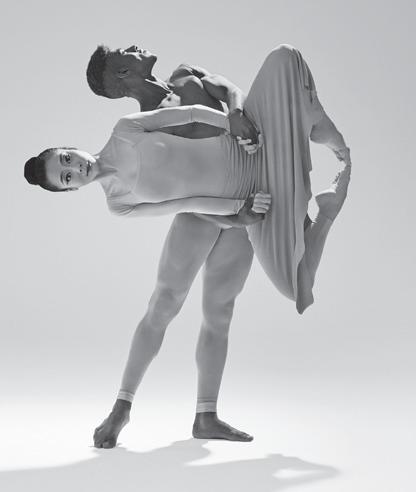
Arrangement by Janet Eilber
Music by Carlos Chávez†
Lighting by Nick Hung
Premiere: April 1, 2016, Library of Congress, Washington, D.C.
Through the act of dancing, forgotten memories emerge. We sense that we have been all things.
“I have been ere now a boy and a girl, a brush, a bird, and a dumb fish in the sea.”
– Empedocles
Lloyd Knight, Anne Souder
James Anthony, Ane Arrieta, Alessio Crognale-Roberts, Laurel Dalley Smith, Meagan King, Devin Loh, Richard Villaverde, Leslie Andrea Williams
Commissioned by the Elizabeth Sprague Coolidge Foundation in the Library of Congress, Washington, D.C.
†La Hija de Colquide used by arrangement with G. Schirmer, Inc., agent for Carlanita Music Company, publisher and copyright owner. Adapted and conducted by Aaron Sherber.
Rodeo or The Courting at Burnt Ranch
Choreography by Agnes de Mille
Music by Aaron Copland†
Bluegrass Arrangement by Gabriel Witcher
Stage Design by Beowulf Boritt
Costume Design by Oana Botez
Lighting Design by Yi-Chung Chen
Staged by Diana Gonzalez
Tap Solo Choreography by Dirk Lumbard
Rodeo was first performed by the Ballet Russe de Monte Carlo on October 16, 1942 at the old Metropolitan Opera House in New York City.
photo: photo: Hibbard
10 (805) 893-3535 | www.ArtsAndLectures.UCSB.edu
Nash Photography (Xin Ying and Lloyd Knight in Martha Graham’s Maple Leaf Rag )
“This is not an epic, nor the story of pioneer conquest. It builds no empires. It is a pastorale, a lyric joke. But one must be always conscious of the enormous land on which these people live and their proud loneliness. The action takes place on a Saturday afternoon and evening on a ranch in the southwest.”
– Agnes de Mille, from her original Rodeo scenario
Scene I
Rodeo: Saturday Afternoon – The Corral
Interlude: Retrospect
Scene II
Saturday Night Dance
The Cowgirl: Marzia Memoli
The Champion Roper: James Anthony
The Head Wrangler: Lloyd Knight
The Ranch Owner’s Daughter: So Young An
Her Eastern Friends from Kansas City: Laurel Dalley Smith, Anne Souder, Leslie Andrea Williams
Square Dance Caller: Leslie Andrea Williams
Cowhands: Alessio Crognale-Roberts, Zachary Jeppsen, Antonio
Leone, Matthew Spangler, Richard Villaverde, Travon Williams
Womenfolk: Ane Arrieta, Meagan King, Devin Loh
Musicians:
Gabe Witcher, fiddle
Bryan Sutton, guitar
Paul Viapiano, mandolin
Wes Corbett, banjo
Isaiah Gage, cello
Paul Kowert, bass
This production was made possible by the Martha Graham Dance Company and was presented with the cooperation of The De Mille Working Group, Anderson Ferrell, Director.
This production of Rodeo was commissioned by Tee Scatuorchio and Michael Becker. The production was also made possible with significant co-commission support from the Annenberg Foundation, The Younes and Soraya Nazarian Center for the Performing Arts and the California State University of Northridge, and the 92nd Street Y, as part of 92NY’s 150th anniversary celebration, in honor and continued support of Martha Graham’s rich 92NY legacy.
†“Rodeo” by Aaron Copland © 1942 The Aaron Copland Fund for Music, Inc. Copyright renewed. This arrangement © 2023 The Aaron Copland Fund for Music, Inc. By permission of Boosey & Hawkes, Sole Licensee.
- IntermissionCAVE
Choreography by Hofesh Shechter
Creative Producer: Daniil Simkin
Music by Âme† and Hofesh Shechter
Costumes by Caleb Krieg
Lighting by Yi-Chung Chen
Choreography Assistant: Kim Kohlmann
Premiere: April 6th, 2022, New York City Center
So Young An, James Anthony, Alessio Crognale-Roberts, Laurel Dalley Smith, Meagan King, Lloyd Knight, Devin Loh, Marzia Memoli, Anne Souder, Richard Villaverde, Leslie Andrea Williams
CAVE was made possible with a significant commissioning grant from The O’Donnell-Green Music and Dance Foundation.
Major support for CAVE was provided by Sharon Patrick, the Clayton-Royer Family Fund, Monica Voldstad and Jeff & Susan Campbell and Barbara Goldstein.
Production support was provided by Vassar College. Additional production support provided by Christopher Jones.
Co-producing support provided by Studio Simkin and Sharing Spaces.
†Samples of “Fiori” by Âme; Sample of “The Witness” by Âme & Karyyn. Frank Wiedemann and Kristian Beyer are members of the German collecting society GEMA and published by Innervisions GmbH.
About the Program
Dark Meadow Suite (1946)
The Dark Meadow Suite is made up of highlights from a much longer work by Martha Graham, Dark Meadow, which premiered in 1946. The suite, created in 2016, is designed to feature the exceptional choreography that Graham created for the ensemble of dancers in Dark Meadow. Both the unison dancing and the partnering have been recognized as some of Graham’s most architectural, ritualistic and profound creations. They are clearly inspired by Graham’s love of the rituals of the American Southwest and Mexico, which she observed as a young woman. The Mexican composer Carlos Chavez wrote the spacious musical score for Graham. The dancers often work in counterpoint to the score using the sound of their feet and other body percussion effects. In her original program note, Graham wrote,
11 (805) 893-3535 | www.ArtsAndLectures.UCSB.edu
Dark Meadow is a re-enactment of the mysteries which attend the eternal adventure of seeking.” It is an abstract work about life’s journey and the search for connection with one’s self and one’s community. This dance is a prime example of Graham as a leader in mid-20th century modernism.
Rodeo (1942, revised 2023)
All the elements of our new production of Agnes de Mille’s Rodeo are designed to broaden the conversation about this iconic work of Americana while remaining true to de Mille’s humorous and heartfelt story about a young, independent misfit searching for love. The new dreamlike costumes by Oana Botez suggest a fond remembrance of time and place rather than the actuality. They invite us into an intimate sense of community while the digital art of Beowulf Boritt’s stage design calls up the vastness of the American southwest. And then there’s the music! Gabe Witcher’s new bluegrass arrangement of the entire Copland score marks a world premiere. The respected de Mille repetiteur Diana Gonzalez is the force behind the idea of our bluegrass Rodeo. She and the director of the de Mille Working Group, Anderson Ferrell, brought the project to us. As part of GRAHAM100, the three-season celebration of the Graham Company’s 100th anniversary, we are interested in reframing iconic works of the 20th century in ways that expand our views of that time and offer a more inclusive history. We hope our new production of Rodeo, which also features the most diverse cast to have ever performed the work, will resonate with today’s conversations about gender and inclusion while celebrating Agnes’s timeless and timely story about a young person, who feels unable to fit in, finding community on their own terms through dance.
– Janet Eilber
CAVE (2022)
In 2022, the versatile artist Hofesh Shechter created this work for and with Graham Company dancers while searching for the essence that makes crowds of people move (dance) together in a deeply primal and connected way. In CAVE, this essence is rendered so powerfully that it reaches beyond the dancing on stage to include and inspire our audiences. The result is a visceral, cathartic movement experience with an inescapable shared kinetic energy.
About Martha Graham
Martha Graham has had a deep and lasting impact on American art and culture. She single-handedly defined contemporary dance as a uniquely American art form, which the nation has in turn shared with the world. Crossing artistic boundaries, she collaborated with and commissioned work from the leading visual artists, musicians and designers of her day, including sculptor Isamu Noguchi and composers Aaron Copland, Samuel Barber and Gian Carlo Menotti.
Graham’s groundbreaking style grew from her experimentation with the elemental movements of contraction and release. By focusing on the basic activities of the human form, she enlivened the body with raw, electric emotion. The sharp, angular and direct movements of her technique were a dramatic departure from the predominant style of the time.
Graham influenced generations of choreographers that included Merce Cunningham, Paul Taylor and Twyla Tharp, altering the scope of dance. Classical ballet dancers Margot Fonteyn, Rudolf Nureyev and Mikhail Baryshnikov sought her out to broaden their artistry. Artists of all genres were eager to study and work with Graham –she taught actors including Bette Davis, Kirk Douglas, Madonna, Liza Minnelli, Gregory Peck, Tony Randall, Eli Wallach, Anne Jackson and Joanne Woodward to utilize their bodies as expressive instruments.
During her long and illustrious career, Graham created 181 dance compositions. During the U.S. Bicentennial she was granted the United States’ highest civilian honor, the Medal of Freedom. In 1998, Time magazine named her the Dancer of the Century. The first dancer to perform at the White House and to act as a cultural ambassador abroad, she captured the spirit of a nation. “No artist is ahead of his time,” she said. “He is his time. It is just that the others are behind the time.”
About the Company
The Martha Graham Dance Company has been a leader in the evolving art form of modern dance since its founding in 1926. It is both the oldest dance company in the United States and the oldest integrated dance company.
Today, the company is embracing a new programming vision that showcases masterpieces by Graham alongside newly commissioned works by contemporary artists. With programs that unite the work of choreographers across time within a rich historical and
“
12 (805) 893-3535 | www.ArtsAndLectures.UCSB.edu
thematic narrative, the company is actively working to create new platforms for contemporary dance and multiple points of access for audiences.
Since its inception, the Martha Graham Dance Company has received international acclaim from audiences in more than 50 countries throughout North and South America, Europe, Africa, Asia and the Middle East. The company has performed at the Metropolitan Opera House, Carnegie Hall, the Paris Opera House, Covent Garden and the John F. Kennedy Center for the Performing Arts, as well as at the base of the Great Pyramids in Egypt and in the ancient Odeon of Herodes Atticus theater on the Acropolis in Athens. In addition, the company has also produced several award-winning films broadcast on PBS and around the world.
Though Martha Graham herself is the best-known alumna of her company, the company has provided a training ground for some of modern dance’s most celebrated performers and choreographers. Former members of the company include Merce Cunningham, Erick Hawkins, Paul Taylor, John Butler and Glen Tetley. Among celebrities who have joined the company in performance are Mikhail Baryshnikov, Margot Fonteyn, Rudolf Nureyev, Maya Plisetskaya, Tiler Peck, Misty Copeland, Herman Cornejo and Aurelie Dupont.
In recent years, the company has challenged expectations and experimented with a wide range of offerings beyond its mainstage performances. It has created a series of intimate in-studio events, forged unusual creative partnerships with the likes of SITI Company, Performa, the New Museum, Barney’s, and Siracusa’s Greek Theater Festival (to name a few); created substantial digital offerings with Google Arts and Culture, YouTube, and Cennarium; and created a model for reaching new audiences through social media. The astonishing list of artists who have created works for the Graham dancers in the last decade reads like a catalog of must-see choreographers:
Kyle Abraham, Aszure Barton, Sidi Larbi Cherkaoui, Lucinda Childs, Marie Chouinard, Michelle Dorrance, Nacho Duato, Mats Ek, Andonis Foniadakis, Liz Gerring, Larry Keigwin, Michael Kliën, Pontus Lidberg, Lil Buck, Lar Lubovitch, Josie Moseley, Richard Move, Bulareyaung Pagarlava, Annie-B Parson, Yvonne Rainer, Sonya Tayeh, Doug Varone, Luca Vegetti, Gwen Welliver and Robert Wilson.
The current company dancers hail from around the world and, while grounded in their Graham core training, can also slip into the style of contemporary choreographers
like a second skin, bringing technical brilliance and artistic nuance to all they do – from brand new works to Graham classics and those from early pioneers such as Isadora Duncan, Jane Dudley, Anna Sokolow and Mary Wigman. “Some of the most skilled and powerful dancers you can ever hope to see,” according to The Washington Post last year. “One of the great companies of the world,” says The New York Times, while Los Angeles Times notes: “They seem able to do anything, and to make it look easy as well as poetic.”
Credits
Major support for the Martha Graham Dance Company is provided by Howard Gilman Foundation National Endowment for the Arts
New York City Department of Cultural Affairs in partnership with the New York City Council
New York State Council on the Arts with the support of the New York State Legislature
The Artists employed in this production are members of the American Guild of Musical Artists AFL-CIO.
In the tradition of its founder, the Martha Graham Center of Contemporary Dance remains committed to being a diverse, equitable, inclusive, and anti-racist organization, and will honor this pledge through its ongoing practices, policies and behaviors.
Copyright to all Martha Graham dances presented held by the Martha Graham Center of Contemporary Dance, Inc. All rights reserved.
Special Thanks
13 (805) 893-3535 | www.ArtsAndLectures.UCSB.edu
Mustafa Suleyman
The Coming Wave: Technology, Power, and the Twenty-first Century’s Greatest Dilemma
Thu, Oct 5 / 7:30 PM / Campbell Hall
Corporate Sponsor: Sage Publishing

Supporting Sponsor: Natalie Orfalea Foundation & Lou Buglioli Justice for All Lead Sponsors: Marcy Carsey, Connie Frank & Evan Thompson, Eva & Yoel Haller, Dick Wolf, and Zegar Family Foundation
Presented in association with UCSB Center for Responsible Machine Learning, Mellichamp Initiative in Mind & Machine Intelligence, and Media Arts and Technology Program
The son of a taxi driver and a nurse, Mustafa Suleyman grew up in central London, where he developed an altruistic point of view and a lifelong commitment to building a better world. In 2001, sensing a disturbing rise in anti-Muslim sentiment in the United Kingdom and elsewhere, Suleyman dropped out of his philosophy program at Oxford to start the Muslim Youth Helpline, a free, confidential and culturally-sensitive service counseling vulnerable young people. This led to his appointment as a human rights officer in the administration of Ken Livingstone, the mayor of London.

Sensing that technology would be the dominant force in global development during his lifetime, in 2010 Suleyman co-founded DeepMind, a London-based technology research lab exploring what was then called “machine learning.” Building on a broadly-conceived and culturally-inclusive concept of the term “intelligence,” DeepMind succeeded in solving a wide range of problems, and was acquired by Google in 2014 for $650 million.
At Google, Suleyman drove some of the most exciting advances in the artificial intelligence (AI) space. He led teams inventing and deploying cutting edge AI systems to more accurately detect breast cancer in mammograms, to diagnose 50 different eye diseases in optical coherence tomography (OCT) scans, and to control Google’s multi-billion dollar data centers to optimize energy consumption.
DeepMind’s best-known victory came in 2016 when AlphaGo, a program that plays the abstract strategy board game Go, defeated Lee Seedol, the world’s top human Go player, in a heavily-publicized series of matches held in Seoul, South Korea.
The success of DeepMind led to Suleyman’s appointment as vice president of AI products and AI policy at Google. In 2022, he joined Greylock as a venture partner, where he specializes in AI investing.
Today he is co-founder of Inflection AI, a leader in the field of personal AI and AI ethics. In July of 2023, Suleyman joined Amazon Web Services CEO Adam Selipsky, OpenAI president Greg Brockman, Meta president Nick Clegg, Anthropic CEO Dario Amodei, Google president Kent Walker and Microsoft vice chair and president Brad Smith in a meeting with President Joe Biden at the White House to begin designing regulatory and other safeguards around AI.
Special Thanks
14 (805) 893-3535 | www.ArtsAndLectures.UCSB.edu
Nickel Creek with special guest Hawktail
Sun, Oct 8 / 7 PM / Granada Theatre
Program will be announced from the stage
Nickel Creek
Chris Thile, mandolin, vocals
Sara Watkins, violin, vocals
Sean Watkins, guitar, vocals
After a nine year absence, the platinum-selling, Grammy Award-winning trio Nickel Creek – Chris Thile, mandolin, Sara Watkins, violin and Sean Watkins, guitar – have returned with their most ambitious album yet. Celebrants, a bounty of 18 disparate but loosely-connected songs, was written collectively during a creative retreat in Santa Barbara in early 2021. The entire enterprise is, naturally, shot through with the trio’s virtuosic picking and shiver-inducing harmonies. The lyrics – addressing love, friendship, time and the universal travails of travel – combine the poetic and plain-spoken, hitting a sweet spot of ethereal and relatable as bridges are built, crossed, burned and rebuilt. In celebration of the release, the trio has returned to the road on a tour that includes such storied venues as Nashville’s Ryman Theatre and The Granada Theatre in Santa Barbara, the place where Celebrants was born.
Nickel Creek began performing together as children at a pizza parlor in San Diego in 1989. They then signed to acclaimed roots label Sugar Hill Records after wowing the bluegrass circuit for a decade. Nickel Creek quickly broke through in 2000 with their Grammy-nominated, Alison Krauss-produced self-titled LP, which showcased not just their instrumental virtuosity but their burgeoning
songwriting prowess. The trio quickly followed that effort with the Krauss-produced This Side, a landmark release that earned the Grammy Award for Best Contemporary Folk Album and brought their progressive take on acoustic music to a broader audience, greatly influencing the sound and trajectory of roots music in the process. 2005’s Grammy-nominated Why Should the Fire Die? found the trio pushing genre boundaries even further, incorporating elements of alt-rock and indie pop into their singular brand of acoustic music. 2014’s critically-acclaimed and joyously-received A Dotted Line ended a seven-year recording and touring hiatus for the band, during which members explored other musical and creative avenues. With 2023’s Celebrants, Nickel Creek have come back together for another creative breakthrough.
Each member of Nickel Creek has taken part in many outside projects over the years. Thile is a 2012 recipient of a MacArthur Fellowship and served as the host of the American radio variety show Live from Here (formerly A Prairie Home Companion) from 2016 to 2020. Over the course of Nickel Creek’s career, Thile has released collaborative albums alongside world-renowned musicians like Yo-Yo Ma, Edgar Meyer, Brad Mehldau and Stuart Duncan. His Grammy-winning band Punch Brothers has released six studio albums, the most recent being 2022’s Hell on Church Street, a reimagining of the beloved 1983 Tony Rice album Church Street Blues. Sean Watkins has kept busy outside of Nickel Creek, too, cofounding Watkins Family Hour alongside Sara, releasing

15 (805) 893-3535 | www.ArtsAndLectures.UCSB.edu
three albums with the collective and maintaining the long-running collaborative show in Los Angeles for a decade. Sean has also released a string of solo albums, most recently 2020’s This Is Who We Are with the Bee Eaters. Sara Watkins’ extracurricular projects include the aforementioned Watkins Family Hour band, as well as co-founding the Grammy-winning roots trio I’m With Her alongside Aoife O’Donovan and Sarah Jarosz. Sara has released four studio albums, most recently 2021’s Under the Pepper Tree. She has contributed fiddle to recordings by artists like Phoebe Bridgers, the Killers and John Mayer.
Hawktail
Brittany Haas, fiddle
Paul Kowert, bass
Jordan Tice, guitar
Dominick Leslie, mandolin
Hawktail is the instrumental acoustic quartet of fiddler Brittany Haas, bassist Paul Kowert, guitarist Jordan Tice and mandolinist Dominick Leslie. Though at first glance it looks like an acoustic superpicker side-project, their all-original music is cohesive and unique, distinguishing them as an ensemble with a sound built from the ground up. Flush with orchestral sweeps and sparse vigils, with strains of the American South and the North Atlantic, this cosmopolitan sound is not what you’d expect from a string band.
Each member of Hawktail brings a strong individuality to the project. Haas, whose 2004 self-titled release instantly became the touchstone for a generation of old-time fiddlers, has since lent her sound to Crooked Still, Live From Here, Steve Martin and David Rawlings, where she played alongside Kowert, the Grammy-winning Punch Brothers’ virtuosic bass player. Tice is a rare guitar player whose music showcases his unique identity and a particular knack for song and tune-writing, and Leslie is a versatile mandolinist whose rhythmic sensibility has made him ubiquitous on the acoustic music scene for over a decade. On top of their individual abilities, something special happens when they unite as Hawktail. Together, they have fostered a reputation as a rare ensemble of composers and instrumentalists able to take the listener on a journey without the use of words.
Place of Growth (2022), acoustic quartet Hawktail’s third and most conceptual album, is a journey through the natural world – a journey designed for a single sitting. Several of the tracks were recorded while the
band camped in rural Shelbyville, Tennessee, south of Nashville. With its feet planted firmly in the present, Place of Growth captures the musicians at a distinct moment in their lives and holds that moment in place.
Special Thanks
(805) 893-3535 | www.ArtsAndLectures.UCSB.edu 16
Program
Joseph Haydn:
Piano Trio No. 44 in E Major, Hob. XV:28
Allegro moderato
Allegretto
Finale: Allegro
Maurice Ravel:
Piano Trio in A Minor
Modéré
Pantoum. Assez vif
Passacaille. Très large
Final. Animé
- Intermission -
Felix Mendelssohn:
Piano Trio No. 2 in C Minor, op. 66
Allegro energico e con fuoco
Andante espressivo
Scherzo. Molto Allegro quasi Presto
Finale. Allegro appassionato
Jean-Yves Thibaudet, piano
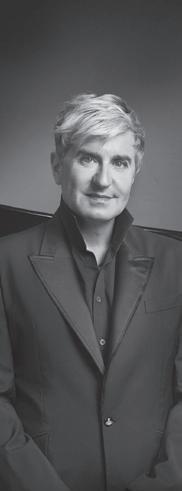
Lisa Batiashvili, violin
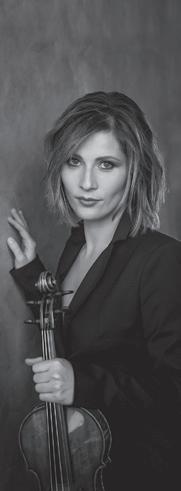
Gautier Capuçon, cello

Tue, Oct 10 / 7 PM / Granada Theatre
Running time: approx. 100 minutes, including intermission
About the Program
Joseph Haydn (1732-1809):
Piano Trio No. 44 in E Major, Hob. XV:28
When Nikolaus I, Prince Esterházy died in 1790, Haydn had spent nearly thirty years serving the Esterházy family. Nikolaus’ successor fired most of the court musicians and released Haydn from his role as Kapellmeister. Soon after, Haydn was approached to conduct a series of lucrative subscription concerts in London. His decision was an easy one: despite never having set foot there, Haydn had been one of the most widely-programmed and popular composers in London for nearly a decade.
Haydn received a tremendous welcome. He wrote home, My arrival caused a great sensation throughout the whole city, and I went the round of all the newspapers for three successive days. Everyone wants to know me.
One such figure was the famed music historian Charles Burney, who penned a 14-page pamphlet entitled “Verses on the Arrival of Haydn in England.” Among Burney’s mawkish panegyric are the prophetic lines “Long may thy fountain of invention run / In streams as rapid as first begun.”
During the two London visits of 1791-92 and 1794-95, Haydn produced more than a dozen piano trios, works for solo keyboard and, most notably, his twelve “London” symphonies. London was the largest metropolis in the
Presented in association with UCSB Department of Music
photo: ©Andrew Eccles
photo: Sammy Hart/Deutche Grammophon
(805) 893-3535 | www.ArtsAndLectures.UCSB.edu 17
photo: Anoush Abrar
world, an economic and artistic powerhouse made more cosmopolitan by refugees fleeing the French Revolution. Haydn was surrounded by scores of gifted professional musicians, cultivated amateurs and throngs of appreciative audiences. He had access to new keyboard designs – including the Broadwood pianos later favored by Beethoven – that allowed for greater expressivity. Therese Jansen, a pianist and teacher, was one of the musicians Haydn befriended. She received dedications from several composers including Haydn, who dedicated several of his final piano works to her.
Unlike trios by later composers, many of which balance the roles of each instrument, Haydn gives the greatest expressive range and volume of notes to the piano. In fact, the title page of this collection labels the pieces “piano sonatas with violin and cello accompaniment.” While Haydn’s trios are all cast in three movements, some later trios, including those by Mendelssohn and Ravel, have four movements, lending those works a scale and importance previously associated with the quartet and the symphony.
The first movement opens with a delicate staccato bass in the piano beneath a tender melody, while the addition of pizzicato strings creates a harp-like effect. The harmonically adventurous and virtuosic development section revisits elements from the opening, including a chorale-like transformation of the main theme.
The Allegretto, a Baroque passacaglia (a form noted for its somber character and repeating bassline), contrasts sharply with the first movement. It opens with all three instruments playing the bassline in octaves before a solo piano passage. The strings provide harmonic support for the piano, which ends the movement with a short quasi-cadenza.
The finale is both warm and playful. Haydn inserts meandering measures that upset the sense of balance so prized in the Classical style (where one would expect the opening phrase to contain two four-bar sections, Haydn extends it for another four). After a stormy middle section, the movement concludes with a return to the sunny opening material, capped with two emphatic final chords.
Maurice Ravel (1875-1937):
Piano
Trio in A Minor
Ravel began composing his only piano trio in the spring of 1914 during a stay in Saint-Jean-de-Luz, a small seaside resort town in the Basque country of southwestern France. Ravel had been born nearby to a Swiss father and Basque mother, and his Basque heritage
remained a source of pride and inspiration. Concert performances in Lyon, Geneva and Paris, along with work on other pieces, delayed progress on the trio. Ironically, it took one of the twentieth century’s most pivotal events to inspire Ravel to complete it.
Around the time Ravel returned from Paris, Serbian nationalists assassinated Archduke Franz Ferdinand in Sarajevo. Four weeks later Austria-Hungary declared war on Serbia; within days France began mobilizing, announcing the news with the pealing of church bells across the country. Ravel’s correspondence from those terrible, uncertain weeks display a maelstrom of emotions. “I cannot go on” he wrote the day Germany declared war on France. “The nightmare of every minute is too terrible.” Another letter, written a day later, shows Ravel attempting to continue composing:
Yes, I am working with the certainty, the lucidity of a madman. But sometimes depression is at work as well and suddenly there I am sobbing over my sharps and flats… Can I go on like this?
By September he had completed the trio, compelled by a desire to finish it before enlisting. He told a friend, “I have been treating [the trio] like a posthumous work.”
It took seven months for Ravel to enlist. Small, frail –he was about 5’3” and four pounds below the army’s official weight limit – and nearing forty, he was rejected multiple times before the army accepted him. After a year of training he was sent to the Western Front as a driver. He found himself longing to compose again, even notating birdsong as material for a new piece. “I thought I had forgotten [music],” he wrote. “Several days ago it returned, tyrannical. I think of nothing else.”
Ravel declared the opening of the first movement “Basque in color.” The theme, characterized by lilting, irregular rhythms and a modal melody, may have been based on a Basque dance called the zortziko. The three-note motif of descending-ascending whole steps appears at the beginning of all four movements except the finale, where it is inverted. Like the sea near which he composed, the music is both hypnotic in its repetition and turbulent with capricious outbursts. It shares some features with the second movement of Haydn’s trio. Like the Haydn passacaglia, the piano obsessively intones the opening theme in its lower register while the strings play above it. Open octaves, as in the Haydn, evoke emptiness. The movement closes with a long decrescendo, the final notes blowing away like wisps of smoke.
18 (805) 893-3535 | www.ArtsAndLectures.UCSB.edu
Ravel named the second movement “Pantoum” after a form of Malaysian folk poetry. The pantoum peaked in popularity in Europe in the nineteenth century, spread in part by Victor Hugo and Charles Baudelaire. Like the second movement of his String Quartet, it has an Assez vif (rather fast) tempo marking and opens with plucked strings. The piano alternates spiky percussive passages with floating streams of massive chords, creating a disorienting whirlwind in waltz time until the movement screeches to a halt.
The passacaglia theme of the third movement enters in the lowest part of the piano. As the theme develops in textural complexity, it rises in pitch and volume to an emotional climax before a muted descent into the piano’s murky depths.
The finale sees Ravel turning again to his maternal heritage with Basque rhythms. The percussive opening piano evokes Javanese gamelan ensembles, a sound that fascinated both Ravel and Debussy when they encountered it at the Paris Exposition Universelle of 1889. The exuberant, graceful finale feels especially hopeful after the passacaglia. Prolonged crescendos build anticipation that ultimately erupts in long, fiery trills from the violin and cello.
Felix Mendelssohn (1809-1847):
Piano Trio No. 2 in C Minor, op. 66
Mendelssohn completed his second piano trio in 1845 while living in Frankfurt. That spring was relatively calm, providing much-needed respite with his wife Cécile and four children (Lilli, their fifth and final child, would arrive in September). It was his final trio for piano, violin and cello; his first, published in 1839, had received enthusiastic praise from Robert Schumann. Schumann proclaimed Mendelssohn’s first trio “the master trio of the age,” while Mendelssohn himself was deemed “the Mozart of the nineteenth century, the brightest musician, who most clearly understands the contradictions of the age and is the first to reconcile them.”
Though Mendelssohn gave the trio to his sister Fanny as a birthday present, he formally dedicated it to the violinist and composer Louis Spohr. Mendelssohn had met Spohr, a contemporary of Beethoven’s, decades earlier through his and Fanny’s piano teacher, and the two maintained a close relationship. Mendelssohn sent Spohr a copy of his second piano trio along with a letter which opened:
Do not be angry with me for having been so bold as to dedicate the enclosed Trio to you without
consulting you in advance… I would like to have saved the honor for a somewhat longer piece; but then I should have had to put it off, as I so often have had to of late; nothing seemed good enough for me, and in fact neither does this trio.
Mendelssohn cast the trio in C minor, a key that held associations with Mozart and Beethoven. Mozart used the key sparingly but to great effect in works such as his twenty-fourth piano concerto, the Masonic Funeral Music, and his Great Mass. Beethoven’s use of the “stormy” key includes some of his most enduring works: the Pathétique sonata, the second movement “Funeral March” of the Eroica Symphony, and the Fifth Symphony. Mendelssohn would have known and played many of these works, including an 1847 performance from memory of Beethoven’s 32 Variations in C minor. Mendelssohn leans enthusiastically into the tempestuous connotations of the key, initiating the trio with a swirl of arpeggios evocative of choppy waves. The movement, a standard three-part movement in sonata form, largely continues in this intense vein before ending in a ferocious, Beethovenian coda.
Solo piano introduces the tranquil rocking theme of the second movement before passing it to the strings. The middle section wanders into a minor key, building to an impassioned duet for the violin and cello. At their climax Mendelssohn returns to the opening material, the strings playing the theme in unison alongside an ornamented piano accompaniment until the movement peacefully concludes. The brief, contrapuntal Scherzo, which Mendelssohn described as “a trifle nasty to play,” races along in a ceaseless gallop, surging forward to a soft, pizzicato finish.
The finale opens with a large upward leap in the cello; Mendelssohn threads this gesture throughout the movement in various guises. Following a soft restatement of the theme by the violin, the turbulent music unexpectedly yields to a chorale setting of a Protestant hymn. The first several bars of the chorale bear an unmistakable resemblance to “Old Hundredth,” commonly known as “All People that on Earth do Dwell” (Bach used this theme in a cantata setting). A devout Christian, Mendelssohn frequently quoted hymn tunes and wrote chorales into his compositions, most notably in his “Reformation” Symphony. The music again turns stormy, seemingly unstoppable, before drastically morphing into a powerful restatement of the chorale theme. The celebratory energy released by the chorale proves uncontainable and the work ends in a jubilant climax.
19 (805) 893-3535 | www.ArtsAndLectures.UCSB.edu
Program notes © Andrew McIntyre, 2023
Jean-Yves Thibaudet
Through elegant musicality and an insightful approach to both contemporary and established repertoire, JeanYves Thibaudet has earned a reputation as one of the world’s finest pianists. He is especially known for his diverse interests beyond the classical world; in addition to his many forays into jazz and opera – including works which he transcribed himself for the piano – Thibaudet has forged profound friendships around the globe, leading to fruitful collaborations in film, fashion and visual art. A recording powerhouse, Thibaudet appears on more than 70 albums and six film scores. He is a devoted educator and is the first-ever artist-in-residence at the Colburn School, which awards several scholarships in his name.
Thibaudet begins the season with a tour of Europe with Boston Symphony Orchestra, performing two of his signature works: Gershwin’s Concerto in F and SaintSaëns’ Piano Concerto No. 5. He goes on to play the Gershwin concerto in season-opening engagements with Toronto and Baltimore symphony orchestras, as well as concerts with Nashville and Indianapolis symphony orchestras; further performances of the Saint-Saëns concerto include dates with North Carolina Symphony and Pittsburgh and Chicago symphony orchestras.
Thibaudet joins Gustavo Dudamel and Los Angeles Philharmonic for Khachaturian’s Piano Concerto in November, which will be recorded for future release on Decca. He then performs Ravel’s Concerto in G with Houston Symphony, Orchestre Philharmonique de Radio France, Bern Symphony Orchestra, New World Symphony and San Diego Symphony. A renowned interpreter of Messiaen’s Turangalîla-Symphonie, Thibaudet performs the piece with Montreal Symphony Orchestra in December. Thibaudet joins Esa-Pekka Salonen and the Orchestre de Paris in Debussy’s Fantaisie; he and Salonen reunite in San Francisco for a synesthetic performance of Scriabin’s Prometheus: The Poem of Fire – a piece he also performs with Helsinki Philharmonic Orchestra.
In addition to his orchestral dates, Thibaudet embarks on a trio tour of the United States with longtime collaborators Gautier Capuçon and Lisa Batiashvili, featuring works by Haydn, Ravel and Mendelssohn. He also continues his multi-season focus on Debussy’s Préludes, performing both books in their entirety at recitals in Europe; these performances will be accompanied by a reissue of his seminal 1996 recording of the Préludes on limited-edition vinyl. Thibaudet and Michael Feinstein will also continue their acclaimed
program Two Pianos: Who Could Ask for Anything More?, presenting works by Gershwin, Rodgers and others in new arrangements for piano, voice and orchestra.
Thibaudet records exclusively for Decca; his extensive catalogue has received two Grammy nominations, two ECHO Awards, the Preis der Deutschen Schallplattenkritik, Diapason d’Or, Choc du Monde de la Musique, Edison Prize and Gramophone awards. His most recent solo album, 2021’s Carte Blanche, features a collection of deeply personal solo piano pieces never before recorded by the pianist. Other highlights from Thibaudet’s catalog include a 2017 recording of Bernstein’s “Age of Anxiety” with Baltimore Symphony Orchestra and Marin Alsop; recordings of the complete solo piano music of Debussy and Satie; Grammynominated recordings of Ravel’s complete solo piano works and Saint-Saëns’ Piano Concerti Nos. 2 & 5; the jazz albums Reflections on Duke and Conversations with Bill Evans; and Aria – Opera Without Words, which features arias transcribed for solo piano by Thibaudet himself.
Thibaudet has also had an impact on the worlds of fashion, film and philanthropy. He was soloist on Aaron Zigman’s score for Wakefield; this was the first time that the composer had allowed a pianist other than himself to perform his film work. He was also soloist in Dario Marianelli’s award-winning scores for the films Atonement (which won an Oscar for Best Original Score) and Pride and Prejudice, as well as Alexandre Desplat’s soundtracks for the 2012 film Extremely Loud & Incredibly Close and Wes Anderson’s The French Dispatch. He had a cameo in Bruce Beresford’s film on Alma Mahler, Bride of the Wind, and his playing is showcased throughout. In 2004 he served as president of the prestigious charity auction at the Hospices de Beaune. His concert wardrobe is designed by Dame Vivienne Westwood.
Jean-Yves Thibaudet was born in Lyon, France, where he began his piano studies at age 5 and made his first public appearance at age 7. At 12, he entered the Paris Conservatory to study with Aldo Ciccolini and Lucette Descaves, a friend and collaborator of Ravel. At age fifteen, he won the Premier Prix du Conservatoire and, three years later, the Young Concert Artists Auditions in New York City. Among his numerous commendations is the Victoire d’Honneur, a lifetime career achievement award and the highest honor given by France’s Victoires de la Musique. In 2010 the Hollywood Bowl honored Thibaudet for his musical achievements by inducting him into its Hall of Fame. Previously a Chevalier of the Ordre des Arts et des Lettres, Thibaudet was awarded the title Officier by the French Ministry of Culture in 2012.
20 (805) 893-3535 | www.ArtsAndLectures.UCSB.edu
In 2020, he was named Special Representative for the promotion of French Creative and Cultural Industries in Romania. He is co-artistic advisor, with Gautier Capuçon, of the Festival Musique & Vin au Clos Vougeot.
Mr. Thibaudet’s worldwide representation: HarrisonParrott
Mr. Thibaudet records exclusively for Decca Classics
Lisa Batiashvili
Lisa Batiashvili, the Georgian-born German violinist, is praised by audiences and fellow musicians for her virtuosity. An award-winning artist, she has developed long-standing relationships with the world’s leading orchestras, conductors and musicians. In 2021 Batiashvili formed and continues to lead the Lisa Batiashvili Foundation, which serves her lifelong dream and commitment in supporting young, highly-talented Georgian musicians to thrive in their musical careers.
In 2023-2024, Batiashvili takes up her residency with Berliner Philharmoniker performing across the season at home and on tour with Kirill Petrenko and Daniel Barenboim. She also performs chamber concerts with Emmanuel Pahud and musicians from Wiener Philharmoniker as well as with Jörg Widmann, Denis Kozhukhin and Tsotne Zedginidze, a talented young Georgian pianist and composer supported by her foundation. Another part of the residency features Batiashvili as soloist with Berliner Philharmoniker Academy. Following their most recent tour of Europe, Batiashvili returns to the stage with pianist Jean-Yves Thibaudet and cellist Gautier Capuçon, giving recitals and master classes across the U.S., culminating in a performance at Carnegie Hall. Batiashvili also performs a number of recitals this season with Giorgi Gigashvili. The season will also see her performing with Münchner Philharmoniker, San Francisco Symphony and Netherlands Philharmonic Orchestra. In 2022-2023 Batiashvili returned to New York Philharmonic, The Cleveland Orchestra, Philharmonia Orchestra, Chamber Orchestra of Europe, London Symphony Orchestra, Royal Concertgebouw Orchestra as well as Wiener Philharmoniker as a featured artist at the Wiener Konzerthaus.
Recording exclusively for Deutsche Grammophon, Batiashvili’s latest album Secret Love Letters was released in August 2022, with Yannick Nézet-Séguin and The Philadelphia Orchestra, as well as Franck Sonata with Giorgi Gigashvili.
Her previous 2020 recording, City Lights, marks a musical journey that takes listeners around the world to eleven cities with an autobiographical connection with music
ranging from Bach to Morricone, and Dvořák to Charlie Chaplin. A 12th city was added in 2022 with the release of her single Desafinado, celebrating Rio de Janeiro. At the renowned Concert de Paris on Bastille Day in 2020 she performed the title track City Memories which was broadcast internationally.
An impressive discography also includes Visions of Prokofiev (Chamber Orchestra of Europe/Yannick Nézet-Séguin), which won an Opus Klassik Award and was shortlisted for the 2018 Gramophone Awards. Earlier recordings include the concertos of Tchaikovsky and Sibelius (Staatskapelle Berlin/Daniel Barenboim), Brahms (Staatskapelle Dresden/Christian Thielemann) and Shostakovich (Symphonieorchester des Bayerischen Rundfunks/Esa-Pekka Salonen).
Bastiashvili has had DVD releases of live performances with Berliner Philharmoniker/Yannick Nézet-Séguin (Bartók’s Violin Concerto No.1) and with Gautier Capuçon, Sächsische Staatskapelle Dresden and Christian Thielemann (Brahms’ Concerto for Violin and Cello).
She has won a number of awards: the MIDEM Classical Award, Choc de l’année, Accademia Musicale Chigiana International Prize, Schleswig-Holstein Music Festival’s Leonard Bernstein Award and Beethoven-Ring.
Batiashvili was named Musical America’s Instrumentalist of the Year in 2015, was nominated as Gramophone’s Artist of the Year in 2017, and in 2018 was awarded an Honorary Doctorate from the Sibelius Academy (University of Arts, Helsinki).
Batiashvili was also artistic director of Audi Sommerkonzerte Ingolstadt for four years between 2019 and 2022.
She lives in Munich and plays a Joseph Guarneri “del Gesu” from 1739, generously loaned by a private collector.
Gautier Capuçon
Gautier Capuçon is a true 21st century ambassador for the cello. Performing internationally with many of the world’s foremost conductors and instrumentalists, he is also deeply committed to education and support for young musicians from every background. In summer 2020 Capuçon brought music directly into the lives of families across the length and breadth of France during his musical odyssey Un été en France. The fifth edition of the project, featuring young musicians and dancers, takes place in July 2024. In January 2022, Gautier Capuçon launched his own foundation to support young and talented musicians at the beginning of their
21 (805) 893-3535 | www.ArtsAndLectures.UCSB.edu
career. Capuçon is also a passionate ambassador for the Orchestre à l’École Association, which brings classical music to more than 42,000 schoolchildren across France.
A multiple award-winner, Capuçon is acclaimed for his expressive musicianship, exuberant virtuosity and for the deep sonority of his 1701 Matteo Goffriller cello “L’Ambassadeur.” He performs with world-leading orchestras each season, working with conductors such as Semyon Bychkov, Gustavo Dudamel, Charles Dutoit, Christoph Eschenbach, Andrès Orozco-Estrada, Pablo Heras-Casado, Paavo Jarvi, Klaus Mäkelä, Andris Nelsons and Christian Thielemann. Collaborations with contemporary composers include Lera Auerbach, Karol Beffa, Esteban Benzecry, Nicola Campogrande, Qigang Chen, Guillaume Connesson, Bryce Dessner, Richard Dubugnon, Henry Dutilleux, Danny Elfman, Thierry Escaich, Philippe Manoury, Bruno Mantovani, Krzysztof Penderecki, Wolfgang Rihm and Jörg Widmann.
Highlights of the 2023-2024 season include return visits as soloist with Los Angeles Philharmonic/Young, Münchner Philharmoniker/Mehta, Orchestre Nationale de France/Macelaru and Wiener Philharmoniker/Nelsons. He is soloist on tour through Europe with Wiener Symphoniker/Popelka; and he is artist-in-residence with Dresden Philharmonic and with Shanghai Symphony Orchestra. In October 2023 he rejoins longtime musical partners Lisa Batiashvili and Jean-Yves Thibaudet to make a piano trio tour crossing the U.S. – from Walt Disney Hall in Los Angeles to Carnegie Hall in New York. 2023-2024 also sees a European tour with pianist Daniil Trifonov including concerts in Berlin, Brussels, Paris, Dresden and Vienna.
Other regular chamber music partners include Frank Braley, Jérôme Ducros, Nikolai Lugansky, Gabriela Montero, as well as Martha Argerich, Daniel Barenboim, Renaud Capuçon, Leonidas Kavakos, Andreas Ottensamer, Yuja Wang, the Labèque sisters and the Ébène, Hagen and Modigliani quartets. Capuçon regularly plays at festivals worldwide including Edinburgh, Salzburg, Grafenegg and Verbier. The 2022-2023 season saw the debut tour of Capuçon’s cello ensemble created with his former students – Capucelli – performing in prestigious venues across Europe including Paris, Vienna and Geneva.

Recording exclusively for Erato (Warner Classics), Capuçon has won multiple awards and holds an extensive discography featuring major concerto and chamber music literature. His album Destination Paris, released in November 2023, celebrates French music from classical repertoire to film scores. 2020’s Warner
Classics album Emotions features music from composers such as Debussy, Schubert and Elgar and has achieved gold status in France. Further albums exploring short, popular pieces from a range of different genres –including Sensations (released in Autumn 2022) – have generated tens of millions of streams. Highlights of his back catalog include the complete Beethoven Sonatas with Frank Braley; an album of Schumann works recorded live with Martha Argerich, Renaud Capuçon and Chamber Orchestra of Europe/Bernard Haitink; Chopin and Franck sonatas with Yuja Wang; and a solo album featuring Bach, Dutilleux and Kodaly to mark his 40th birthday.
Capuçon has also been featured on DVD in live performances with Wiener Philharmoniker/Andris Nelsons (Saint-Saens’ Cello Concerto No.1) Berliner Philharmoniker/Gustavo Dudamel (Haydn’s Cello Concerto No.1) and with Lisa Batiashvili, Sächsische Staatskapelle Dresden and Christian Thielemann (Brahms’ Concerto for Violin and Cello).
Born in Chambéry, Capuçon began playing the cello at the age of five. He studied at the Conservatoire National Supérieur in Paris with Philippe Muller and Annie Cochet-Zakine, and later with Heinrich Schiff in Vienna. Now a household name in his native France, Capuçon appears on screen and online in shows such as Prodiges, Now Hear This, Symphony Pour La Vie and The Artist Academy, and is a guest presenter on Radio Classique in the show Les Carnets de Gautier Capuçon
Special Thanks
22 (805) 893-3535 | www.ArtsAndLectures.UCSB.edu
Jeff Goodell
Life and Death on a Scorched Planet
Tue, Oct 17 / 7:30 PM / Campbell Hall
Earth, Air, Fire, Water Series Sponsors: Patricia & Paul Bragg Foundation, Audrey & Timothy O. Fisher, Justin Brooks Fisher Foundation, and Sara Miller McCune
Presented in association with Citizens’ Climate Lobby, Community Environmental Council, Explore Ecology, The Land Trust for Santa Barbara County, Santa Barbara Botanic Garden, UCSB Bren School, and UCSB Environmental Studies Program
Jeff Goodell was born and raised in Silicon Valley, where his family has lived for four generations. He has worked as a blackjack dealer, a glazier, a janitor, a bartender, a professional motorcycle racer, an editor at a Russian literary journal and a technical writer at Apple Computer. He has a bachelor’s degree from the University of California, Berkeley, and a master’s from Columbia University in New York.
In 1989, Goodell began covering crime and politics in New York City for Seven Days, a weekly magazine that won a National Magazine Award for General Excellence in 1990. Since 1996 he has been a contributing writer at Rolling Stone and a frequent contributor to The New York Times Magazine.
Goodell’s first book, The Cyberthief and the Samurai, told the story of the hunt for notorious computer hacker Kevin Mitnick. His 2000 book Sunnyvale, a memoir about growing up in Silicon Valley, was selected as a New York Times Notable Book.

In 2001, after writing a cover story about the comeback of the U.S. coal industry for The New York Times Magazine, Goodell shifted his attention to energy and environmental issues. Our Story (2002), his account of the nine miners trapped in a Pennsylvania coal mine for 77 hours, was a New York Times bestseller. He followed that up with Big Coal: The Dirty Secret Behind America’s Energy Future (2006).
How to Cool the Planet: Geoengineering and the Audacious Quest to Fix Earth’s Climate (2010) is a journey into
the scary, morally complex world of geoengineering. Goodell spent several years with the world’s top climate modelers, as well as with Cold War physicists, independent scientists, philosophers, politicians and crackpot entrepreneurs, all of whom are involved with the development of technologies that might someday be used to manipulate the Earth’s climate to reduce the impacts of global warming. How to Cool the Planet won the 2011 Grantham Prize Award of Special Merit, one of the highest awards in environmental journalism.
Goodell’s sixth book was The Water Will Come: Rising Seas, Sinking Cities, and the Remaking of the Civilized World (2017). His reporting took him to 12 countries and many coastal cities in the U.S., as well as to Alaska with President Barack Obama. The Water Will Come was picked as a New York Times Critics’ Top Book of 2017, as well as one of The Washington Post’s 50 Notable Works of Nonfiction in 2017. Goodell’s latest book, The Heat Will Kill You First, was released in July, 2023.
Goodell was a fellow at New America in 2016 and 2017 and is currently a senior fellow at Atlantic Council. As a commentator on energy and environmental issues, he has appeared on NPR, MSNBC, CNN, CNBC, ABC, NBC, Fox and The Oprah Winfrey Show. He was awarded a 2020 Guggenheim Fellowship in General Nonfiction.
Books are available for purchase in the lobby and a signing follows the event
23 (805) 893-3535 | www.ArtsAndLectures.UCSB.edu
photo: Matt Valentine
Jill Lepore

Amend: Rewriting the Constitution
Tue, Oct 24 / 7:30 PM / Campbell Hall
Major Sponsor: Sara Miller McCune
Justice for All Lead Sponsors: Marcy Carsey, Connie Frank & Evan Thompson, Eva & Yoel Haller, Dick Wolf, and Zegar Family Foundation
Presented in association with Santa Barbara County Bar Association, Santa Barbara Women Lawyers, and UCSB Department of History
Jill Lepore is a writer and professor of history whose essays and books explore absences and asymmetries in the historical record. She is also a bestselling author and journalist who once wrote “History is the art of making an argument about the past by telling a story accountable to evidence.” James Gleick has said of her, “Lepore is a brilliant and prolific historian with an eye for unusual and revealing stories.” Susan Orlean noted, “everything Jill Lepore writes is distinguished by intelligence, eloquence, and fresh insight.” Her popular podcasts explore themes such as “who killed truth?” and the rise of doubt.
Lepore’s New Yorker essays, which reflect her many interests, as well as her attention to and probing of the historical record, include: “When Black History Is Unearthed, Who Gets to Speak for the Dead?” “How Impeachment Ended Up in the Constitution,” “The History of Loneliness,” “Ruth Bader Ginsburg, the Great Equalizer,” “What Our Contagion Fables Are Really About,” “The Last Time Democracy Almost Died,” “Are Robots Competing for Your Job?” and “Herman Melville at Home.”
As an essayist and author, Lepore writes about American history, law, literature and politics. Her first book, The Name of War: King Philip’s War and the Origins of American Identity, won the Bancroft Prize, the most prestigious award in the field of American history writing. Her book, New York Burning: Liberty, Slavery and Conspiracy in Eighteenth-Century Manhattan, was a finalist for the Pulitzer Prize. Book of Ages was a finalist for the National Book Award. The Secret History of Wonder
Woman, described as a tour de force of intellectual and cultural history, won the American History Book Prize. These Truths: A History of the United States was an international bestseller named one of Time magazine’s top 10 nonfiction books of the decade. In 2020 Lepore published her 14th book, If Then: How the Simulmatics Corporation Invented the Future. In 2021, she won the Hannah Arendt Prize for Political Thought. Her audio work includes hosting the podcast The Last Archive, the limited series Elon Musk: The Evening Rocket and The Search for Big Brown. Her new audiobook is Who Killed Truth? She recently contributed an introduction to Paul McCartney’s book 1964: Eyes of the Storm. Her latest book is titled The Deadline: Essays and was published in August 2023.
Lepore is the David Woods Kemper Professor of American History and Affiliate Professor of Law at Harvard University. She is also a staff writer at The New Yorker. Other essays and reviews have appeared in the New York Times, Times Literary Supplement, Foreign Affairs, Yale Law Journal, American Scholar and American Quarterly; her works have been widely translated and anthologized.
Books are available for purchase in the lobby and a signing follows the event
Special Thanks
photo: Stephanie Mitchell
24 (805) 893-3535 | www.ArtsAndLectures.UCSB.edu
West Coast Premiere Turn It Out with Tiler Peck & Friends
Wed, Oct 25 / 8 PM / Granada Theatre
Running time: approx. 104 minutes, including intermission
Lead Sponsor: Jody & John Arnhold
Dance Series Sponsors: Margo Cohen-Feinberg, Donna Fellows & Dave Johnson, Barbara Stupay, and Sheila Wald
Presented in association with UCSB Department of Theater and Dance
Artistic Director and Curator: Tiler Peck
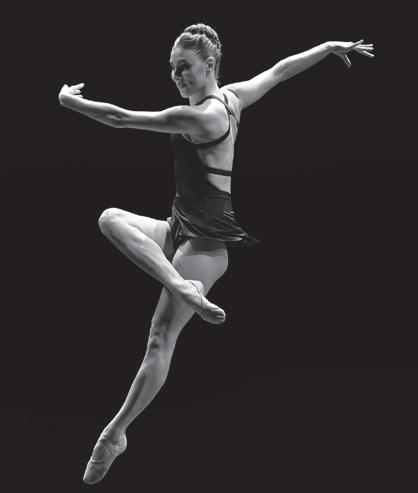
Featuring: India Bradley, Chun-Wai Chan, Michelle Dorrance, Jovani Furlan, Christopher Grant, Lex Ishimoto, Brooklyn Mack, Roman Mejia, Jillian Meyers, Mira Nadon, Tiler Peck, Aaron Marcellus Sanders, Quinn Starner, Byron Tittle, Penelope Wendtlandt
Lighting Designer: Brandon Stirling Baker
Lighting Supervisor: Coby Chasman-Beck, Serena Wong
Production Stage Manager: Betsy Ayer
Assistant Production Stage Manager: Angelina Pellini
Production Manager/Sound Design: Christopher Marc
Assistant Production Coordinator: Carly D Shiner
Producer & Booking Representative: Margaret Selby | Selby/Artists Management
Program
Thousandth Orange
Choreography by Tiler Peck
Music by Caroline Shaw
Costume Design by Harriet Jung & Reid Bartelme
Lighting Design by Brandon Stirling Baker
Dancers: India Bradley, Chun-Wai Chan, Jovani Furlan, Christopher Grant, Mira Nadon, Quinn Starner
Musicians: Emily Call, violin
Mads Falcone, viola
Betsy Rettig, cello
Basia Bochenek, piano
World Premiere:
August 5, 2019 | Vail Dance Festival
Gerald R. Ford Amphitheater | Vail, CO
Thousandth Orange was commissioned by the Vail Dance Festival, Damian Woetzel, Artistic Director, and made possible through the support of Donna & Donald Baumgartner, the National Endowment for the Arts, and the Virginia B. Toulmin Foundation
- Pause -
25 (805) 893-3535 | www.ArtsAndLectures.UCSB.edu
Swift Arrow
Choreography by Alonzo King
Music by Jason Moran
Costume Design by Robert Rosenwasser
Dancers: Tiler Peck and Roman Mejia
Musician:
Basia Bochenek, piano
World Premiere:
May 1, 2021 | John F. Kennedy Center for the Performing Arts
Washington, D.C.
Om is the bow, the arrow is the individual being, and Brahman is the target. With a tranquil heart, take aim.
Lose thyself in Him, even as the arrow is lost in the target.
“Swift Arrow” composed by Jason Moran, licensed courtesy of Modern Works Music Publishing.
Swift Arrow is a commission by the John F. Kennedy Center for the Performing Arts, Washington, D.C.
- Pause -
Time Spell
subdivisions of time and space, and intersections of isolation and community, longing and joy
Choreography by Michelle Dorrance, Jillian Meyers and Tiler Peck, in collaboration with and improvisation by the dancers
Associate Choreographer Byron Tittle
Music by Aaron Marcellus and Penelope Wendtlandt
Costume Styling by Amy Page
Lighting Design by Brandon Stirling Baker
Sound Design by Christopher Marc
Dancers:
India Bradley, Chun-Wai Chan, Michelle Dorrance, Christopher Grant, Lex Ishimoto, Roman Mejia, Jillian Meyers, Mira Nadon, Tiler Peck, Quinn Starner, Byron Tittle
Musicians:
Aaron Marcellus and Penelope Wendtlandt
World Premiere:
March 4, 2022 | New York City Center | New York, NY
Compositions “inside armour,” “7 dead” and “fly away” composed by Penelope Wendtlandt, licensed courtesy of Penelope Wendtlandt.
Time Spell is a commission by New York City Center.
Support for new dance works at City Center is provided by the Virginia B. Toulmin Foundation.
Additional support for Time Spell is provided by Virginia and Timothy Millhiser.
- Intermission -
The Barre Project, Blake Works II
Choreography by William Forsythe
Music by James Blake
Production Design by William Forsythe
Costume Design by Harriet Jung & Reid Bartelme, Tiler Peck
Designs, EPTM Los Angeles and Wear Moi
Lighting Design by Brandon Stirling Baker
Dancers:
Lex Ishimoto, Brooklyn Mack
Roman Mejia, Tiler Peck
Digital World Premiere:
March 25, 2021 by CLI Studios at clistudios.com
Live World Premiere:
March 4, 2022 | New York City Center | New York, NY
The creation of The Barre Project, Blake Works II was made possible by CLI Studios. “200 Press,” written by James Blake Litherland (PRS). Published by Sony/ATV Music Publishing (UK) Limited (GMR). Performed by James Blake. Courtesy of 1-800-Dinosaur. “Buzzard & Kestrel,” written by James Blake Litherland (PRS). Published by Universal Music Publishing Group (GMR) and Buzzard and Kestrel LTD (ASCAP). Performed by James Blake. Courtesy of Hessle Audio. “Lindisfarne I,” written by James Blake Litherland (PRS). Published by Universal Music Publishing Group (GMR). Performed by James Blake. Courtesy of Universal Music Operations Ltd. “Lullaby For My Insomniac,” written by James Blake Litherland (PRS). Published by Sony Smash Hits Music Publishing (GMR). Performed by James Blake. Courtesy of Universal Music Operations Ltd.
26 (805) 893-3535 | www.ArtsAndLectures.UCSB.edu
About the Dancers
India Bradley (Dancer) is a member of New York City Ballet’s (NYCB) corps de ballet. She was born in Detroit, Michigan and began her dance training at the age of 4 in Troy, Michigan. At the age of 11, she attended the Academy of Russian Classical Ballet in Novi, Michigan, under the direction of Sergey Rayevitskey. Bradley attended the summer program at Dance Theatre of Harlem (DTH) in 2012, and entered DTH’s professional training program that fall. She attended the 2014 summer session at the School of American Ballet, NYCB’s official school, and enrolled as a full-time student later that year. Bradley was named an apprentice in August 2017 and joined the company as a member of the corps de ballet in August 2018. @indiabradleyy
Chun-Wai Chan (Dancer) was born in Guangdong, China, in 1992 and trained at the Guangzhou Art School from 2004 to 2010. In 2010 he was finalist at the Prix de Lausanne, Switzerland, which earned him a full scholarship to study with Houston Ballet Academy. Chan joined the corps de ballet of Houston Ballet in 2012 and was promoted to principal dancer in 2017. In 2020, Chan was among the finalists of Hunan TV’s Dance Smash. Chan joined New York City Ballet as a soloist in 2021 and was promoted to principal dancer the following year, making him the company’s first Chinese principal. Most recently, Forbes China included Chan in their 30 Under 30 list and he was featured on the cover of Dance magazine (May 2023 issue).
Michelle Dorrance (Dancer, Choreographer) is a New York City-based tap dancer, choreographer, director, teacher, music-maker, and is the founder/artistic director of Dorrance Dance. Mentored by Gene Medler (North Carolina Youth Tap Ensemble), she studied under many of the last hoofers of the jazz era. Solo career highlights include STOMP, Savion Glover’s Ti Dii, IMAGINE TAP, The Late Show with Stephen Colbert and touring with Darwin Deez. Choreographic commissions include: Martha Graham Dance Company, Vail Dance Festival, American Ballet Theatre, New York City Center, Works & Process/ Guggenheim and recent choreographic Broadway debut, Flying Over Sunset. A MacArthur Fellow, Ford Foundation Art of Change Fellow, Doris Duke Artist, Princess Grace, Alpert Award, and Bessie Award winner, Dorrance holds a bachelor’s degree from the Gallatin School at New York University. @mashdeez
Jovani Furlan (Dancer) is a principal dancer with New York City Ballet (NYCB). Born in Joinville, Brazil, Furlan started dancing at the age of 11 at the Bolshoi School
in Brazil. In 2010 he participated in the International Ballet Competition in Jackson, Miss., and was offered a full scholarship to attend the Miami City Ballet School by Edward Villella. He began his training there in 2011, joined Miami City Ballet (MCB) in 2012 and was named a principal dancer in 2017. At MCB, his repertory included works by George Balanchine, Jerome Robbins, Richard Alston, John Cranko, Peter Martins, Justin Peck, Alexei Ratmansky, Liam Scarlett, Paul Taylor, Twyla Tharp and Christopher Wheeldon. Furlan joined NYCB in August 2019 and has continued to perform principal roles with the company as well as multiple guesting opportunities all around the world. In 2022, Furlan was named one of Forbes’ 30 Under 30 and has also started his own company, Furlan Dancewear. Instagram @jovani.furlan
Christopher Grant (Dancer) was born in Jamaica, Queens. He began his dance training in 2002 at the School of American Ballet, the official school of New York City Ballet (NYCB). Additional training includes summer courses at Pacific Northwest Ballet and the New York State Summer School of the Arts. In August 2015, Grant became an apprentice with NYCB. As an apprentice, he originated a featured role in Nicolas Blanc’s Mothership. He joined the company as a member of the corps de ballet in August 2016. @chris.jk.grant
Lex Ishimoto (Dancer) trained in jazz, lyrical, tap, hip hop, ballet and contemporary dance and debuted professionally as Billy on the first and second national tours of Billy Elliot: The Musical. He attended Boston Ballet School, was promoted to Boston Ballet II, and later joined Travis Wall’s Shaping Sound company for its After the Curtain tour. Ishimoto was crowned America’s Favorite Dancer on the 14th season of So You Think You Can Dance and can be seen in music videos for Sia, Judith Hill, Bebe Rexha and more. He recently completed a world tour with rock band Muse and set work on Boston Ballet. Heavily influenced by the underground/hip-hop scene, classical ballet, concert dance and commercial world, Ishimoto strives to be a dominant force in the dance world, refusing to be labeled. @lex_ishimoto
Brooklyn Mack (Dancer) of Elgin, South Carolina, is a world-renowned international principal guest artist. He began his training at the age of 12 with Radenko Pavlovich and Milena Leben at Pavlovich Ballet School, and finished his training at the Kirov Academy of Ballet primarily under the tutelage of Anatoli Kucheruk and Vladimir Djouloukhadze. Mack has won numerous awards including the Senior Men’s Silver Medal at the 2006 USA International Ballet Competition (IBC), the 2007 Princess Grace Fellowship Award, the Senior Men’s
27 (805) 893-3535 | www.ArtsAndLectures.UCSB.edu
Silver Medal at the Helsinki IBC, The Grand Prix at the 2012 Istanbul IBC, The Gold Medal at the Boston IBC and The Gold Medal at the 2012 Varna IBC, to name just a few. Mack has also been featured on ABC, NBC, NPR, Ebony magazine and The Grio’s Top 100 (2014), and was named one of 25 [Dancers] to Watch by Dance magazine (2012). Mack has performed as a principal dancer all over the globe with some of the world’s foremost ballet companies including National Ballet of Ukraine, American Ballet Theatre, English National Ballet and many more. @brooklynmack5
Roman Mejia (Dancer) was born in Fort Worth, Texas and began studying ballet at age 3 with his mother and father. At age 13, he entered the Mejia Ballet Academy. Mejia attended summer courses at the School of American Ballet (SAB) in 2014 and 2015 before entering SAB full-time for the 2015 winter term. In August 2017 he became an apprentice with New York City Ballet, and he joined the company as a member of the corps de ballet in November 2017. Mejia was promoted to the rank of soloist in October 2021 and principal dancer in February 2023. In 2019, Dance magazine featured Mejia as one of their 25 to Watch picks and he became a recipient of the prestigious Princess Grace Foundation – USA Dance Fellowship. In 2020, Mejia was named a Clives Barnes Award finalist. His repertory includes leading roles in works by George Balanchine, Jerome Robbins, William Forsythe, Justin Peck, Alexei Ratmansky, Christopher Wheeldon and many others. Most recently, he starred in Twyla Tharp’s TWYLA NOW and Tiler Peck’s Artists at the Center at New York City Center. Mejia was one of Vail Dance Festival’s 2022 artists-in-residence. @roman.julian.mejia
Jillian Meyers (Dancer, Choreographer) is an Emmy-nominated choreographer, academic educator and world-class performer. She works at the nexus of commercial, stage, film and site-specific performance. Her work varies from touring with Janet Jackson, being the assistant choreographer for the film La La Land and co-choreographing multiple episodes of NBC’s Zoey’s Extraordinary Playlist, to choreographing multiple videos for the music artist Hozier. She wears many hats and makes many faces – and both reconciles and indulges in all of these disciplines in her collaborative, ongoing, genre-bending project, The Seaweed Sisters. @jillymeyers / jillianmeyers.com
Mira Nadon (Dancer) was born in Boston, Mass., and began her ballet training at the age of 6 at the Inland Pacific Ballet Academy in Montclair, California. She attended summer courses at the School of American Ballet (SAB) in 2014 and 2015 before entering SAB
full-time for the 2015 winter term. In November 2017, Nadon became an apprentice with New York City Ballet. She joined the company as a member of the corps de ballet in November 2018, was promoted to soloist in January 2022 and to principal in February 2023. Nadon has danced as a guest at the Vail Dance Festival and Nantucket Atheneum Dance Festival and has performed as a member of Ballet Collective. She is also a part-time student at Fordham University. She is the recipient of the 2021 Clive Barnes Award for dance and is a 2022 Princess Grace Award winner.
Tiler Peck (Curator, Dancer, Choreographer) Regarded as a “dance luminary” (The Washington Post), “pure joy in toe shoes” (Los Angeles Times) and “the ballerina who can stop time (and re-start it too)” (The New York Times), Tiler Peck is widely recognized as one of the top American ballerinas of our time. A principal dancer with New York City Ballet (NYCB), actress, choreographer, author and designer, Peck continues to evolve as an artist and add to her extensive repertoire.
In May of 2022, Peck curated and directed the highlyanticipated, inaugural Artists at the Center for New York City Center, and has since developed the program into the critically-acclaimed show Turn it Out with Tiler Peck & Friends. The program, which features premieres from William Forsythe, Alonzo King, Jillian Meyers and Michelle Dorrance, enjoyed a sold-out world premiere in New York City and a European debut in London at the prestigious Sadler’s Wells Theatre. Now, Peck is excited to be touring the show in her home state of California.
Last month, Peck had choreographic premieres at Northern Ballet in Leeds and at Cincinnati Ballet and is making her first ballet for New York City Ballet this February.
Peck added the title of curator when she launched and starred in the Los Angeles Music Center’s presentation of BalletNOW. She was the subject of the Hulu feature documentary Ballet Now and also choreographed the box office smash action movie, John Wick: Chapter 3 – Parabellum. She performed with Josh Groban at Radio City Music Hall in a special streamed later on PBS, she appeared in season 7 of Ray Donovan (opposite Liev Shreiber) and the Netflix series Tiny Pretty Things, and was the first ballerina ever to appear on The Ellen DeGeneres Show. Peck also guested on Dancing with the Stars for three seasons and on Julie Andrews’ Netflix series Julie’s Greenroom, and starred in the film Ballet 422.
Born in Bakersfield, California, Peck began her dance training at the age of 2 at her mom’s dance studio. At
28 (805) 893-3535 | www.ArtsAndLectures.UCSB.edu
14, she entered the School of American Ballet. The same year, she became an apprentice with NYCB and within a few months was asked to join the corps de ballet. Peck was promoted to soloist in 2006 and to principal dancer in 2009.
At 11, Peck made her Broadway debut in The Music Man and next appeared on Broadway as Ivy Smith in the Tony-nominated On the Town. She played Louise in the Emmy-nominated production of Carousel (New York Philharmonic, Live From Lincoln Center) and more recently played the title role in Susan Stroman’s musical, Little Dancer (Kennedy Center). She is due to star in the production on Broadway.
Peck had the honor of performing for President Obama at the 2012 and 2014 Kennedy Center Honors. She was the 2004 Mae L Wien Award winner, the Janice Levin Honoree for 2006-2007, winner of the Positano Premia la Danza Léonide Massine for International Emerging Artists, and a 2004 recipient of a Princess Grace Foundation - USA Dance Fellowship. In 2013, she was named in Forbes’ 30 Under 30 in Hollywood Entertainment and won the Princess Grace Statue Award. She also received the 2016 Dance Magazine Award. Peck developed and produced a daily ballet class, #TurnItOutWithTiler, initially aimed at helping people stay connected and moving during the pandemic. The show’s down-to-earth tone coupled with its very necessary purpose attracted the attention of enthusiasts like Jennifer Garner, Sarah Jessica Parker, Leslie Odom, Jr. and Josh Groban, who all guested on the show.
Her first children’s book, Katarina Ballerina (Simon & Schuster) was published in 2020, and Katarina’s adventures continue in Katarina Ballerina & The Victory Dance (2022), where she helps a fellow ballet dancer follow his dreams.
With a passion and keen eye for fashion, Peck recently launched the Love, Tiler collection with Só Dança and designed the capsule collection, Tiler Peck X STATESIDE, in collaboration with the popular Los Angeles-based womenswear line. Her second capsule collection for STATESIDE released in early 2023.
Find her on Instagram @tilerpeck or at www.tilerpeck.com and shop her newest collection below
Quinn Starner (Dancer) is member of New York City Ballet’s (NYCB) corps de ballet. She was born in Lambertville, Michigan, where she began her training at the age of 2. Starner attended summer programs at the School of American Ballet in 2015 and 2018 before enrolling full-time for the 2018 winter term. Starner became an apprentice with NYCB in August 2021 and joined the corps de ballet in March 2022. She has appeared in the Radio City Christmas Spectacular and So You Think You Can Dance. She competed at many prestigious ballet competitions, receiving awards from the American Ballet Competition, the Universal Ballet Competition, USA International Ballet Competition, Youth America Grand Prix and The Dance Awards. Since joining New York City Ballet, Starner has performed featured roles choreographed by Jamar Roberts, Kyle Abraham, Silas Farley and Keerati Jinakunwiphat. She has performed with Stars of American Ballet led by Daniel Ulbricht. In 2023, Dance magazine featured Starner as one of their 25 to Watch.
Byron Tittle (Dancer, Associate Choreographer) began studying tap dance privately with Kendrick Jones II and David Rider in his home state of New York. Exploring other disciplines, he trained extensively at Broadway Dance Center and Steps on Broadway. An assistant to Michelle Dorrance for her American Ballet Theatre debut in 2018, he is a proud, decade-long company member of Bessie award-winning Dorrance Dance. He is a founding member of Candace Brown’s Soul Project Dance Company and principal dancer of Justin Peck’s recent stage work Illinois. Commercial credits include Janet Jackson, Doja Cat, Hugh Jackman and Nicki Minaj. Tittle is humbled to have received a 2019 Princess Grace Foundation Dance Fellowship Award. @byrontittle
Special Thanks

29 (805) 893-3535 | www.ArtsAndLectures.UCSB.edu
Walter Isaacson in Conversation with Pico Iyer
Thu, Oct 26 / 7:30 PM / Campbell Hall
Walter Isaacson
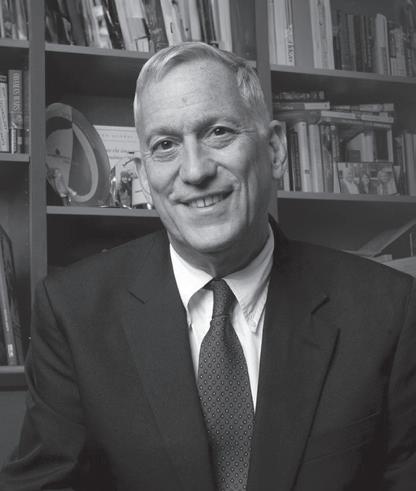
Event Sponsor: Crystal & Clifford Wyatt
Speaking with Pico Series Sponsors: Martha Gabbert, Siri & Bob Marshall, and Laura & Kevin O’Connor
Walter Isaacson is the Leonard Lauder Professor of American History and Values at Tulane. He is the past CEO of the Aspen Institute, where he is now a distinguished fellow, and has been the chairman of CNN and the editor of Time magazine.
Walter Isaacson is the bestselling author of Elon Musk; The Code Breaker; Leonardo da Vinci; The Innovators; Steve Jobs; Einstein: His Life and Universe; Benjamin Franklin: An American Life; and Kissinger: A Biography, and the coauthor of The Wise Men: Six Friends and the World They Made. Isaacson was awarded the National Humanities Medal in 2023.
He is a host of the show Amanpour and Company on PBS and CNN, a contributor to CNBC and host of the podcast Trailblazers, from Dell Technologies.
Isaacson is a graduate of Harvard College and of Pembroke College of Oxford University. He began his career at The Sunday Times of London and then the New Orleans Times-Picayune. He joined Time in 1978 and served as a political correspondent, national editor and editor of digital media before becoming the magazine’s 14th editor in 1996. He became chairman and CEO of CNN in 2001, and then president and CEO of the Aspen Institute in 2003.
He is chair emeritus of Teach for America. From 2005-2007 he was the vice-chair of the Louisiana Recovery Authority, which oversaw the rebuilding after Hurricane Katrina. He was appointed by President Barack Obama and confirmed by the Senate to serve as the chairman of the Broadcasting Board of Governors, which runs Voice of America, Radio Free Europe and other international broadcasts of the United States, a position he held from 2009 to 2012. He has been a member of the New Orleans City Planning Commission.
He is a member of the American Academy of Arts and Sciences, the Royal Society of the Arts and the American Philosophical Society. He is a fellow of Lowell House at Harvard and of Pembroke College at Oxford. He serves on the board of United Airlines, Bloomberg Philanthropies, the Society of American Historians, New Schools for New Orleans, the U.S. Defense Department Innovation Board and My Brother’s Keeper Alliance. He is an advisory partner at Perella Weinberg, a financial services firm based in New York City.
30 (805) 893-3535 | www.ArtsAndLectures.UCSB.edu
photo: Patrice Gilbert
Pico Iyer

Pico Iyer is the author of 16 books, translated into 23 languages, and dealing with subjects ranging from the XIVth Dalai Lama to Islamic mysticism and from globalism to the Cuban Revolution. They include such long-running sellers as Video Night in Kathmandu, The Lady and the Monk, The Global Soul and The Art of Stillness. His latest, The Half Known Life: In Search of Paradise, has been a national bestseller, and he’s just completing his next work, on his first 32 years with a community of Benedictine monks in Big Sur. He has also written the introductions to more than 70 other books, the liner notes for many Leonard Cohen albums and Criterion Collection movies and a screenplay for Miramax. Since 1986 he has been a regular essayist for Time, The New York Times, Harper’s, The New York Review of Books and many others.
His four TED talks have received more than 11 million views, and he has been featured in program-length interviews with Oprah, Krista Tippett and Larry King, among others.
Born in Oxford, England in 1957, he was a King’s Scholar at Eton and was awarded a Congratulatory Double First at Oxford, where he received the highest marks of any student on English Literature at the university. He received a second master’s degree at Harvard and was recently a Ferris Professor at Princeton.
Special Thanks
photo: Derek Shapton
31 (805) 893-3535 | www.ArtsAndLectures.UCSB.edu
Eddie Ndopu
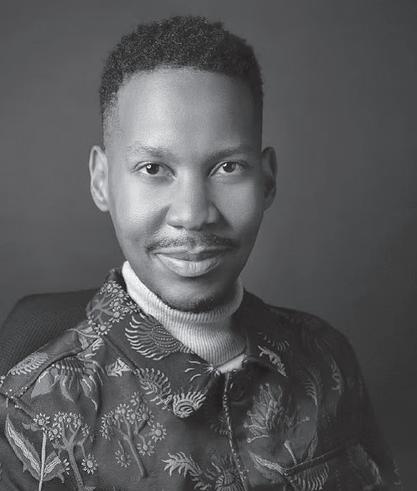
Sipping Dom Pérignon Through a Straw: Reimagining Success as a Disabled Achiever
Thu, Nov 2 / 7:30 PM / Campbell Hall
Justice for All Lead Sponsors: Marcy Carsey, Connie Frank & Evan Thompson, Eva & Yoel Haller, Dick Wolf, and Zegar Family Foundation
Presented in association with Alpha Resource Center, Independent Living Resource Center, UCSB Disabled Students Program, UCSB Multicultural Center and the Office of Black Student Development
Described by Time magazine as “one of the most powerful disabled people on the planet,” Eddie Ndopu is perhaps best known for his human rights advocacy with respect to advancing disability justice at the forefront of the international development agenda. An awardwinning and internationally-acclaimed humanitarian, storyteller, public intellectual and disability practitioner, Ndopu is a thought leader and advocate for social equity, sustainability and disability-based innovation. He describes himself as a queer, Black, disabled individual, fighting for social equity and the environment, and his influence is felt worldwide. A Global Changemaker, Ndopu actively champions climate justice, fights global poverty and demands equity for the world’s most marginalized segments of society in his capacity as one of the U.N. Secretary-General’s 17 official advocates for the United Nations’ 17 Sustainable Development Goals (SDGs). Ndopu is a highly in-demand speaker for his insights about the intersections of disability, sustainability and how we can best work together to make meaningful change for our planet’s future.
Ndopu is the founder of A Billion Reasons, a groundbreaking social impact incubator established in partnership with the World Economic Forum to tackle the U.N.’s SDGs through a lens of universal design and disability-based innovation. He serves on several global boards, including as a member of the board of directors of the United Nations Foundation. He also sits on the advisory boards of The Valuable 500, IMAGINE and Verizon’s Global Advisory Board for Accessibility and Disability Inclusion. He formerly served as a member
of both the World Economic Forum’s Global Future Council for the New Agenda for Social Justice and the World Economic Forum’s Partnering for Racial Justice in Business Initiative. Ndopu’s debut memoir, Sipping Dom Pérignon Through a Straw, which chronicles his challenging experience as a disabled student attending Oxford University, was released in August 2023.
Featured in a profile by Time and recognized as one of Pacific Standard’s Top 30 Thinkers Under 30, Ndopu is sought-after for keynotes and conversations at venues such as Facebook, Amazon, Discovery Health, the COP26 Climate Change Summit, The World Economic Forum, the GlobalCitizen Summit, and Salesforce’s Dreamforce event, where he was described as “one of the most powerful voices on the planet right now.”
32 (805) 893-3535 | www.ArtsAndLectures.UCSB.edu
David Sedaris

Sat, Nov 4 / 7:30 PM / Arlington Theatre

One of America’s preeminent humor writers, David Sedaris is the author of the New York Times bestsellers Barrel Fever, Holidays on Ice, Naked, Me Talk Pretty One Day, Dress Your Family in Corduroy and Denim, When You Are Engulfed in Flames, Let’s Explore Diabetes with Owls and Calypso. His book The Best of Me collects 42 previously published stories and essays. Sedaris also wrote Squirrel Seeks Chipmunk: A Modest Bestiary, a collection of fables with illustrations by Ian Falconer. He is the editor of Children Playing Before a Statue of Hercules: An Anthology of Outstanding Stories. His pieces regularly appear in The New Yorker and have twice been included in The Best American Essays. The two volumes of his diaries, Theft By Finding: Diaries (1977-2002) and A Carnival of Snackery: Diaries (2003-2020) were New York Times bestsellers. An art book of Sedaris’ diary covers, David Sedaris Diaries: A Visual Compendium, was edited by Jeffrey Jenkins. His most recent book, Happy-Go-Lucky, debuted at No. 1 on the New York Times bestseller list. The audio version of Happy-Go-Lucky, written and narrated by Sedaris, won the 2023 Audie Award. His next book will be a short graphic novel for children with illustrations by Ian Falconer titled Pretty Ugly (February 2024).
Sedaris and his sister, Amy Sedaris, have collaborated under the name The Talent Family and have written half-a-dozen plays which have been produced at La Mama, Lincoln Center and The Drama Department in New York City. These plays include Stump the Host, Stitches, One Woman Shoe, which received an Obie Award, Incident at Cobbler’s Knob and The Book of Liz, which was published in book form by Dramatists Play Service.
Sedaris has been nominated for five Grammy Awards for Best Spoken Word and Best Comedy Album. His audio recordings include David Sedaris: Live for Your Listening Pleasure and David Sedaris Live at Carnegie Hall A feature film adaptation of his story C.O.G. was released after a premiere at the Sundance Film Festival (2013). Since 2011, he can be heard annually on a series of live recordings on BBC Radio 4 entitled Meet David Sedaris. In 2019 David Sedaris became a regular contributor to CBS Sunday Morning, and his MasterClass, David Sedaris Teaches Storytelling and Humor, was released.
There are over 16 million copies of his books in print and they have been translated into 32 languages. He has been awarded the Terry Southern Prize for Humor, the Thurber Prize for American Humor, the Jonathan Swift International Literature Prize for Satire and Humor and the Time 2001 Humorist of the Year Award, as well as the Medal for Spoken Language from the American Academy of Arts and Letters. In March 2019 he was elected as a member into the American Academy of Arts and Letters. In 2020 the New York Public Library voted Me Talk Pretty One Day one of the 125 most important books of the last 125 years.
Books are available for purchase in the lobby and a signing follows the event
Special Thanks
photo: Anne Fishbein
33 (805) 893-3535 | www.ArtsAndLectures.UCSB.edu
Kristin Chenoweth For The Girls

Sun, Nov 5 / 7 PM / Granada Theatre
Program will be announced from the stage
Supporting Sponsors: John Kuelbs and Anne Smith Towbes
Emmy and Tony award-winning actress and singer Kristin Chenoweth’s career spans film, television, voiceover and stage. In 2015, Chenoweth received a coveted star on the Hollywood Walk of Fame. In 2009, she received an Emmy Award for Best Supporting Actress in a Comedy Series for her role in Pushing Daisies. In 1999, she won a Tony Award for You’re A Good Man, Charlie Brown and she was also nominated for her original role of Glinda the Good Witch in Wicked in 2004. Chenoweth has been nominated for two Emmy Awards and for a People’s Choice Award for her role on Glee. In 2009, she wrote an upliftingly-candid, comedic chronicle of her life so far, A Little Bit Wicked, which debuted on the New York Times Hardcover Nonfiction Bestseller list.
Chenoweth recently co-starred in Apple TV+’s acclaimed musical-comedy series Schmigadoon! alongside Cecily Strong, Keegan-Michael Key and Ariana DeBose. For her role as Mildred Layton, Chenoweth received a Critics’ Choice Award nomination for Best Supporting Actress in a Comedy Series.
Chenoweth recently released her first picture book What Will I Do with My Love Today? The heartwarming story is a sweet tale about a young girl named Kristi Dawn, who shares her love through acts of generosity around New York City. Chenoweth also joined Kathy Najimy, Linda Perry, Chely Wright and Lauren Blitzer as an editor of My Moment: 106 Women on Fighting for Themselves. Additionally, Chenoweth signed with Harper Celebrate, HarperCollins Focus’ gift book imprint. Her hilarious and insightful gift book I’m No Philosopher, But I Have
Thoughts: For Saints, Sinners, and the Rest of Us with Harper Celebrate was released in January 2023.
In 2021, Chenoweth released her latest holiday album, HAPPINESS is…Christmas! Filled with holiday classics both old and new, the 12-song set shows her in a festive but classy light as she rings in the best time of year.
Chenoweth was seen starring alongside Stephan James and J.K. Simmons in the STXfilms sports drama National Champions. Previously in 2020, Chenoweth starred in the Netflix film Holidate, voiced the character Daisy in the HBO Max film The Witches, and hosted the Food Network competition series Candy Land
In 2019, Chenoweth starred alongside Scott Wolf in the holiday film A Christmas Love Story, which premiered on Hallmark Channel. Along with the holiday season, Chenoweth released a standalone holiday e-single titled “White Christmas.” She also released her album For The Girls, debuting at No. 3 on the Current Pop Albums chart and No. 11 on the Billboard Top Albums chart. The album is a heartfelt tribute to great female singers throughout history, particularly some of Chenoweth’s heroes and friends. Guest artists include Ariana Grande, Dolly Parton, Jennifer Hudson and Reba McEntire. The album includes Chenoweth’s personally-charged interpretations of classic songs identified with such iconic artists as Barbra Streisand, Lesley Gore, Linda Ronstadt, Dinah Washington, Dolly Parton and more. To celebrate the release of For The Girls, Chenoweth returned to the Broadway stage in November 2019 for an eight-performance concert
34 (805) 893-3535 | www.ArtsAndLectures.UCSB.edu
photo: John Russo
engagement at the Nederlander Theatre.
Chenoweth has performed to sold-out audiences across the world, including performances at Carnegie Hall and Royal Albert Hall. Chenoweth released The Art of Elegance, her album of American Songbook classics via Concord Records. The album debuted at No. 1 on Billboard’s Current Jazz and Traditional Jazz charts, and No. 1 on Amazon’s Vocal Pop chart. Chenoweth also returned to the stage in her limited engagement My Love Letter to Broadway at the Lunt-Fontanne Theatre, receiving rave reviews. In 2014, she released a CD and DVD of her own live concert performance, Kristin Chenoweth: Coming Home. Additionally, Chenoweth performed with the iconic Tabernacle Choir and Orchestra in their annual Christmas concert. The concert aired on PBS and BYUtv in December 2019.
In 2015, Chenoweth earned a Drama Desk Award, Outer Critics Circle Award and Broadway.com Audience Choice Award for her lead role in the Roundabout Theatre Company’s On the Twentieth Century. She also earned nominations for a Tony Award and a Drama League Award.
Chenoweth recently starred in the second season of NBC’s hit comedy series Trial & Error, receiving critical acclaim for her performance as heiress Lavinia PeckFoster. She was seen in the Starz original series American Gods, where she reunited with executive producer Bryan Fuller in the role of Easter. Notable television roles include appearances in The West Wing, Disney’s Descendants and The Muppets. In film, Chenoweth voiced the role of Gabi in the hit animated film Rio 2 and Fifi, Snoopy’s beloved French poodle, in The Peanuts Movie. She starred in the indie teen drama entitled Hard Sell and additional film credits have included The Boy Next Door, Deck the Halls, Twelve Men of Christmas, Four Christmases, RV, Bewitched, The Pink Panther (2006), Hit & Run and Family Weekend. She also starred in NBC’s Hairspray Live! as Velma Von Tussle in December 2016. Chenoweth voiced the role of Princess Skystar in Lionsgate/Hasbro’s My Little Pony: The Movie, and can also be heard in the Sony Pictures animated film The Star.
Chenoweth is a passionate supporter of charities which dedicate their time and efforts to helping those in need. She formed a charity partnership with the Broken Arrow Performing Arts Center (BAPAC) Foundation in her home state of Oklahoma. Chenoweth’s accomplishments were honored by her hometown with BAPAC naming The Kristin Chenoweth Theatre in 2012. Partnering with BAPAC in a labor of love, Chenoweth launched an annual Broadway Bootcamp in 2015, providing young Broadway hopefuls
with the opportunity to take classes, hold performances and learn from top mentors in the entertainment industry. In her lifelong mission to cultivate arts education across the globe, Chenoweth has also created Places! The Kristin Chenoweth Tour Experience, a unique educational program for young singers that puts them right next to her performing on stage.
Chenoweth is a graduate of Oklahoma City University with a master’s degree in opera performance. She is an inductee into the Oklahoma Hall of Fame, as well as the Oklahoma Music Hall of Fame.
Special Thanks
35 (805) 893-3535 | www.ArtsAndLectures.UCSB.edu
Midori Festival Strings Lucerne
Daniel Dodds, Leader and Artistic Director
Wed, Nov 8 / 7 PM / Granada Theatre
Running time: approx. 116 minutes, including intermission
Program
Arthur Honegger: Pastorale d’été, H. 31
Richard Dubugnon: Caprice IV, op. 72, no. 4 (“Es muss sein!”)
Robert Schumann: Violin Concerto in D Minor, WoO 23
In kräftigem, nicht zu schnellem Tempo
Langsam
Lebhaft, doch nicht schnell
Midori, violin
- Intermission
Ludwig van Beethoven: Romance in F Major, op. 50
Midori, violin

Ludwig van Beethoven: Symphony No. 7 in A Major, op. 92
Poco sostenuto - Vivace
Allegretto
Presto
Allegro con brio
About the Program
Arthur Honegger (1892-1955): Pastorale d’été, H. 31 (1920)
In January 1920 Arthur Honegger – then almost 28 years old – became a member of Les Six, a loosely organized group of French composers dedicated to composing fresh music, free of the influence of both Wagner and impressionism. Honegger spent the following summer in the village of Wengen, in a Swiss valley at the base of magnificent mountains, and there he composed his Pastorale d’été (“Summer Pastorale”). He completed the score in August, and Vladimir Golschmann led the premiere the following February in Paris.
The Pastorale d’été is scored for a very small orchestra (solo flute, oboe, clarinet, bassoon and horn, plus strings), and it spans only about eight minutes. Honegger said that he took his cue from a line by Arthur Rimbaud: “J’ai embrassé l’aube d’été” (“I have embraced the dawn of summer”). The music may have been inspired by the glow of a summer sunrise over the mountains of Switzerland, but listeners should not search for exact pictorialism here. Honegger subtitled this piece Poème symphonique, but here he presents more an emotional response to the sunrise than an attempt to depict it in sound.
The Pastorale d’été opens very quietly – the tempo marking is Calme – and soon the solo horn sounds its rising call amid swirls of sound from the woodwinds. This (Continued on page 46)
-
Presented in association with UCSB Department of Music
36 (805) 893-3535 | www.ArtsAndLectures.UCSB.edu
Your Legacy: Our Future
Arts & Lectures has an unwavering commitment to bringing big ideas and stellar performances to our community, and to fostering connection through the arts and conversation.
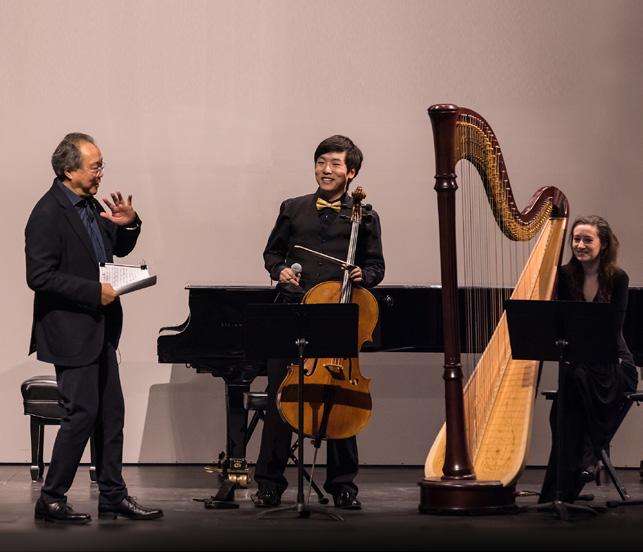

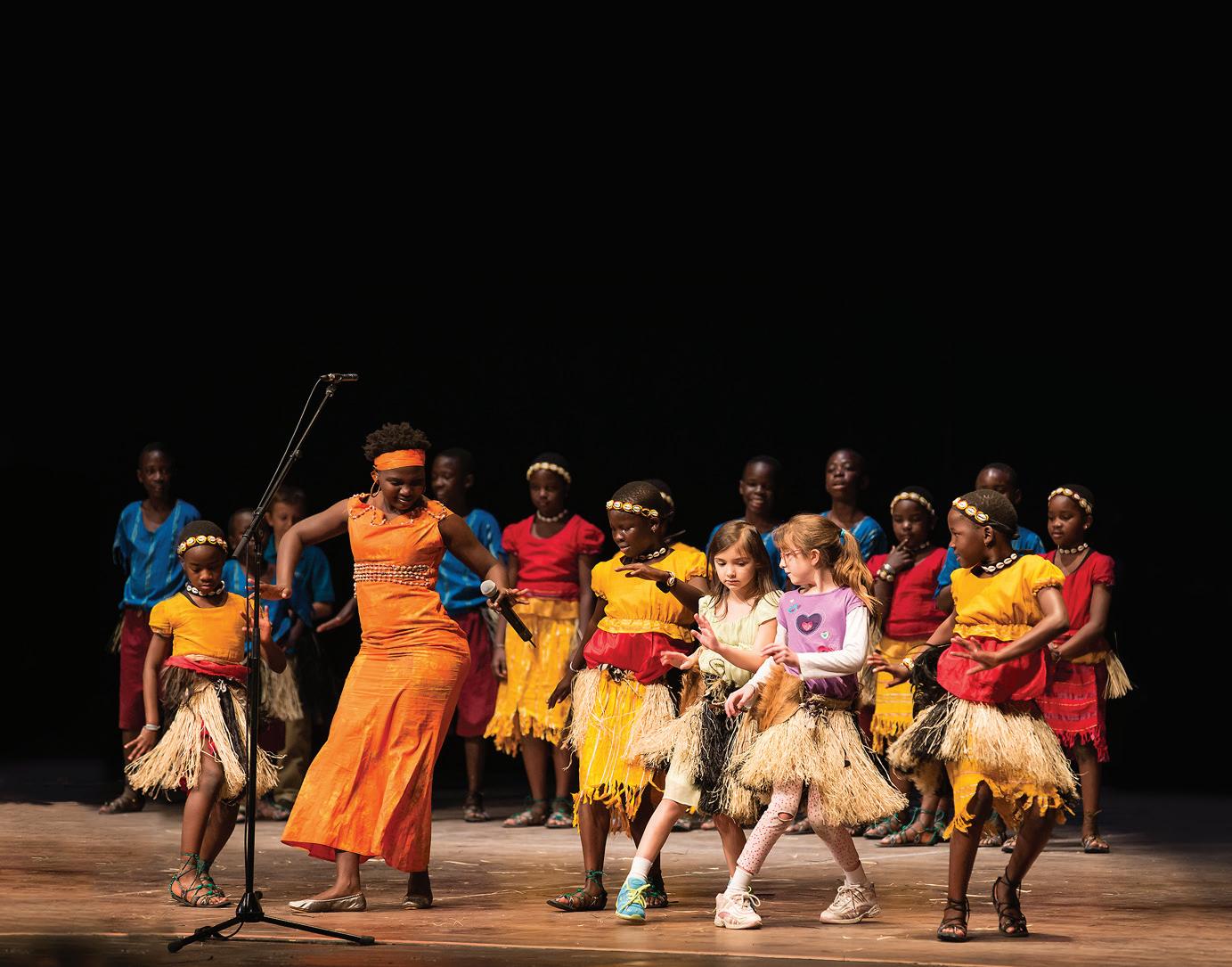
If you share our mission to Educate, Entertain and Inspire, we invite you to include Arts & Lectures in your estate plans.
To learn more about Legacy Giving, contact Stacy Cullison, Senior Director of Development, at (805) 893-3755 or Stacy.Cullison@ArtsAndLectures.UCSB.edu
Education and Community Engagement
How do we build a more connected, thoughtful and compassionate community?
We do it with opportunities that are accessible to all. Through Access for ALL – Arts & Lectures’ Learning programs – inspirational, dynamic learning experiences are possible for students and lifelong learners across classrooms, our community and the UCSB campus.
Access for ALL serves more than 30,000 students and community members annually.
Here’s how we’re impacting our community:
• Assemblies in elementary and secondary schools
• Workshops and conversations with artists and speakers
• Ticket subsidies for students at all levels
• The Thematic Learning Initiative’s lifelong learning opportunities
• Matinee field trips for K-12 students at The Granada Theatre
• Lecture-demonstrations and artist panels in University classes
• Master classes for students and community members
• Post-show Q&As with audiences of all ages
• Free family performances in under-resourced neighborhoods


Please consider a contribution to A&L’s award-winning educational outreach programs. Call Stacy Cullison, Senior Director of Development & Special Initiatives, at (805) 893-3755 to learn more.
 photos: David Bazemore
Jazz Workshop at San Marcos High School with Clarence Penn of Monterey Jazz Festival on Tour
photos: David Bazemore
Jazz Workshop at San Marcos High School with Clarence Penn of Monterey Jazz Festival on Tour
38 (805) 893-3535 | www.ArtsAndLectures.UCSB.edu
Free Ukrainian cultural celebration prior to DakhaBrakha’s performance at The Granada Theatre
“Art teaches abstract thinking; it teaches teamwork; it teaches people to actually think about things that they cannot see.”
Thank you to our Education and ¡Viva el Arte de Santa Bárbara! Sponsors


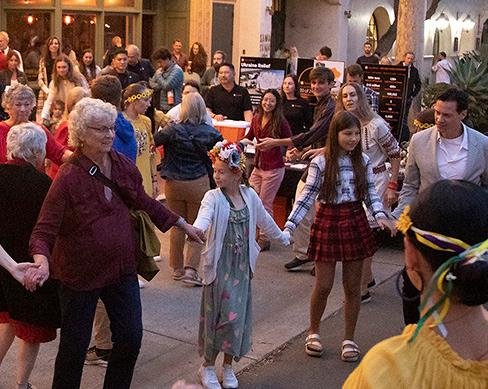
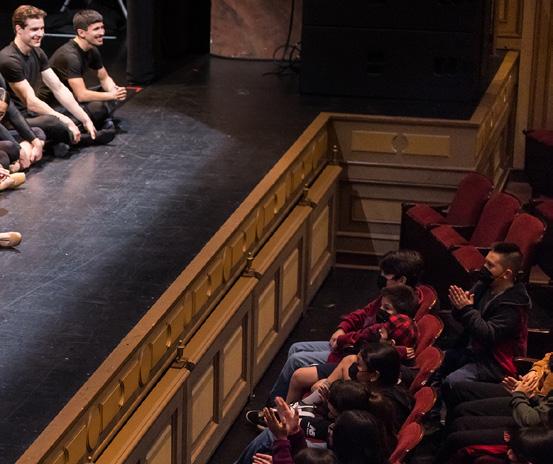
Arnhold A&L Education Initiative
WILLIAM H. KEARNS FOUNDATION

Sara Miller McCune
Audrey & Timothy O. Fisher
Connie Frank & Evan Thompson
Kath Lavidge & Ed McKinley
Dorothy Largay & Wayne Rosing
Anonymous
University Support:
Office of the Executive Vice Chancellor
Office of the Chancellor Office of Education Partnerships
Ballet Hispánico performs for 4th-6th graders in an Arts Adventures field trip at The Granada Theatre
39 (805) 893-3535 | www.ArtsAndLectures.UCSB.edu
– Bill T. Jones, Choreographer and MacArthur Fellow
¡Viva el Arte de Santa Bárbara! brings people together to share the rich cultural heritage of Latin America, serving more than 15,000 students and community members each year throughout Santa Barbara County.
Created in 2006 out of a commitment to arts access for all, Viva works with dozens of local partners to present high-quality artists who share their knowledge and passion. Schools, neighborhood spaces and community centers come alive in these free programs for youth and families.

¡Viva el Arte de Santa Bárbara! is a collaboration between UCSB Arts & Lectures, The Marjorie Luke Theatre, the Guadalupe-Nipomo Dunes Center and the Isla Vista School Parent Teacher Association serving Carpinteria, Santa Barbara, Goleta, Lompoc, Santa Maria, Guadalupe and New Cuyama.
Fall 2023
Perla Batalla
September 8-10
Ballet Folklórico de Los Ángeles
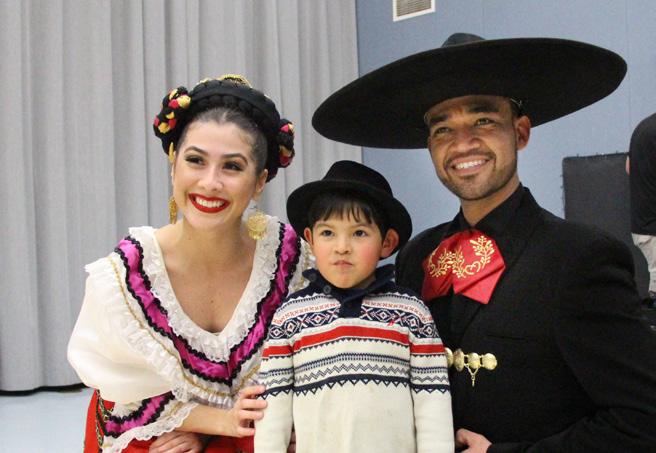

October 13-15
Please consider a contribution to the award-winning ¡Viva el Arte de Santa Bárbara! program. Call Director of Development Elise Erb at (805) 893-5679 to learn more.
A young audience member with Grandeza Mexicana dancers after a community performance
Ballet Folklórico de Los Ángeles and Mariachi Garibaldi de Jaime Cuellar perform for families at Isla Vista School
Mariachi Femenil Nuevo Tecalitlán teaching a community music workshop
(805) 893-3535 | www.ArtsAndLectures.UCSB.edu 40
Become
Join Arts & Lectures Today
CircleofFriends ProducersCircle ExecutiveProducersCircleLeadershipCircle
The Benefits of Giving
Invitation to a reception at a private residence with featured artist or speaker
Invitations to meet-and-greet opportunities with featured artists and speakers
Complimentary parking at all ticketed A&L events at Campbell Hall
Opportunity to bring guests to a select A&L public event
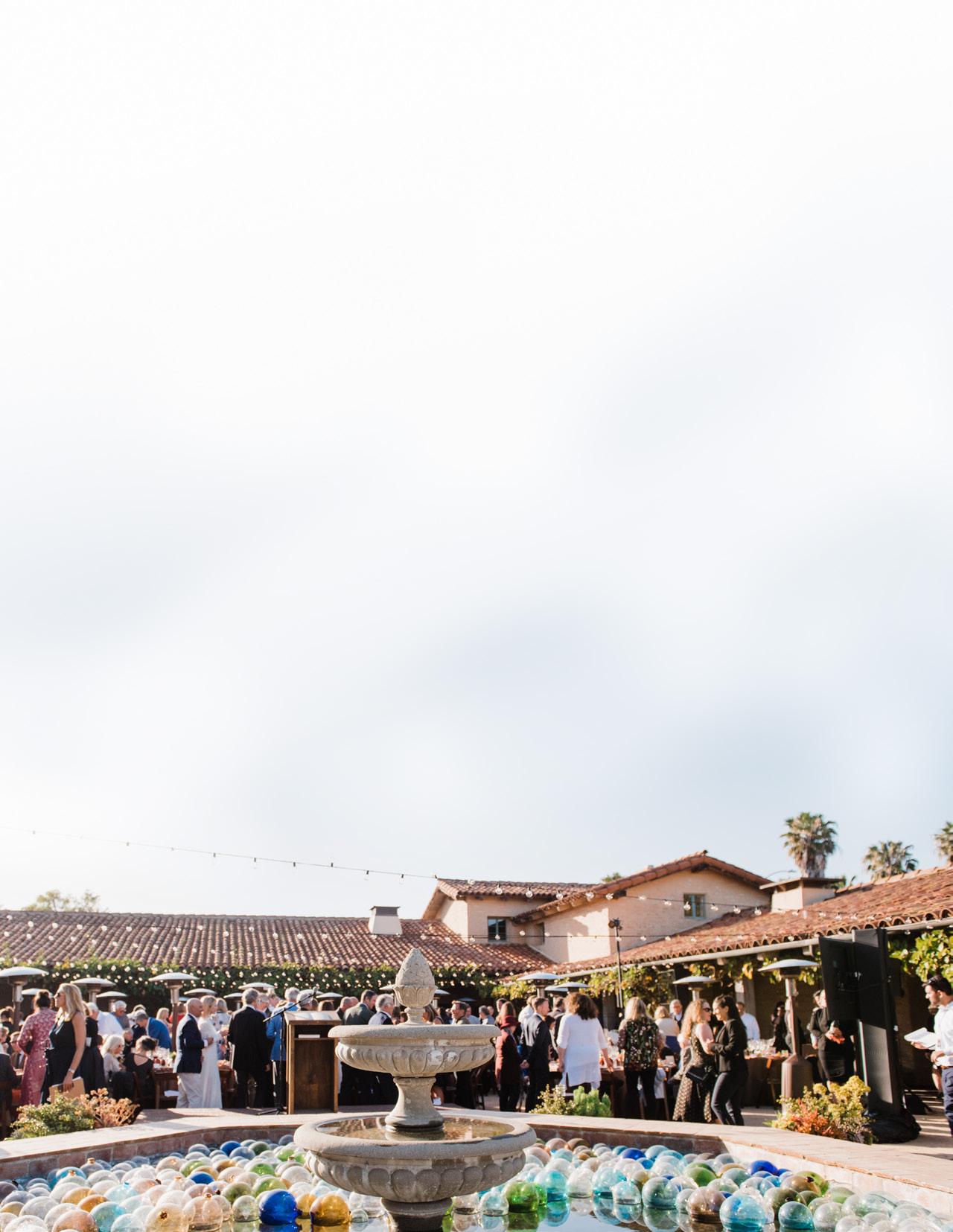
To inquire about membership or a customized Leadership Circle experience, please call Membership Director Rachel Leslie at (805) 893-3382.
Leadership Circle includes all the benefits of Executive Producers Circle plus your own personalized membership experience.
a member and join a network of arts supporters that enable us to deliver remarkable seasons like this one.
$100+ $2,500+ $5,000+ $10,000+
Ticketing Concierge Service and
Seating Invitations to Producers Circle Receptions with
to Intermission
Invitation to A&L’s exclusive Season Announcement Party Opportunity to attend master classes and other educational activities Invitation to a member appreciation event Recognition in A&L event programs or digital media
VIP
Priority
featured artists and speakers
Access
Lounge in the McCune Founders Room during A&L performances and lectures at The Granada Theatre
41
photo: Grace Kathryn
Thank You Arts & Lectures Members!
Arts & Lectures Council
Arts & Lectures is privileged to acknowledge our Council, a group of insightful community leaders and visionaries who help us meet the challenge to educate, entertain and inspire.
Rich Janssen, Co-Chair
Kath Lavidge, Co-Chair
Marcy Carsey
Timothy O. Fisher
Dorothy Largay
Patricia MacFarlane
Susan McCaw
Sara Miller McCune
Jillian Muller
Natalie Orfalea
Arts & Lectures Ambassadors
Tom Sturgess
Anne Smith Towbes
Lynda Weinman
Merryl Snow Zegar
Arts & Lectures is proud to acknowledge our Ambassadors, volunteers who help ensure the sustainability of our program by cultivating new supporters and assisting with fundraising activities.
Donna Fellows
Eva Haller
Robin Himovitz
Luci Janssen
Lois Mitchell
Maxine Prisyon
Arts & Lectures Program Advisor
Bruce Heavin
Leadership Circle
Heather Sturgess
Anne Smith Towbes
Sherry Villanueva
Crystal Wyatt
Our Leadership Circle members, a group of key visionaries giving $10,000 to $100,000 or more each year, make a significant, tangible difference in the community and help bring A&L’s roster of premier artists and global thinkers to Santa Barbara. We are proud to recognize their philanthropy.
$100,000+
Jody & John Arnhold
Audrey & Timothy O. Fisher ◊ ‡
Connie Frank & Evan Thompson
Dorothy Largay & Wayne Rosing
Manitou Fund
Sara Miller McCune ◊ ‡
Lynda Weinman & Bruce Heavin ◊ ‡
Dick Wolf
Zegar Family Foundation
Eva & Yoel Haller ◊
William H. Kearns Foundation ‡
$50,000+
Patricia & Paul Bragg Foundation
Marcy Carsey
Marcia & John Mike Cohen ‡
Jillian & Pete Muller
Natalie Orfalea & Lou Buglioli
Justin Brooks Fisher Foundation
Martha Gabbert
Laura & Kevin O’ Connor
Sage Publishing
Russell Steiner
Anonymous (2) $25,000+
Heather & Tom Sturgess ◊ ‡
Betsy Atwater
Mary Becker ‡
Cancer Foundation of Santa Barbara
Margo Cohen-Feinberg
Donna M. Fellows & Dave Johnson
G.A. Fowler Family Foundation
Luci & Rich Janssen ‡
Ellen & Peter O. Johnson
Siri & Bob Marshall
Marilyn & Dick Mazess
Earl Minnis
Montecito Bank & Trust
Shanbrom Family Foundation
Barbara Stupay
Alison & Lyle Turner
Sheila Wald
Susan & Bruce Worster
Crystal & Clifford Wyatt
Laura & Geofrey Wyatt
Anonymous
42 (805) 893-3535 | www.ArtsAndLectures.UCSB.edu (805) 893-3535 | www.ArtsAndLectures.UCSB.edu 42
$10,000+
Jennifer & Jonathan Blum
Otis Booth Foundation
Christine Bruce & John Hilliard
Scott Charney & Ellen McDermott Charney
Tana & Joe Christie
NancyBell Coe & William Burke ‡
David & Debby Cohn
Thiep Cung AIA
Producers Circle
Bettina & Glenn Duval
Robyn & Larry Gottesdiener
Lisa & Mitchell Green
Robin & Roger Himovitz
Tom Kenny
Chris & Mark Levine
Stacy & Ron Pulice
Sharon & Bill Rich ◊
Merrill Sherman
Linda Stafford Burrows
Stone Family Foundation
Diane Sullivan
Anne Smith Towbes ‡
US Bank Foundation
Nicole & Kirt Woodhouse
Anonymous
Arts & Lectures gratefully recognizes the commitment and generosity of our Producers Circle members, who have made gifts between $2,500 and $9,999. Recognition is based upon a donor’s cumulative giving/pledges within a 12-month period.
$5,000+ Executive Producers Circle
Allyson & Todd Aldrich
Deirdre & William Arntz
Leslie Sweem Bhutani
Tracy & Michael Bollag
Meg & Dan Burnham
Elizabeth & Andrew Butcher
Annette & Dr. Richard Caleel
Laura Clifford
Susan Eng-Denbaars & Steve Denbaars
Olivia Erschen & Steve Starkey
Priscilla & Jason* Gaines
Pamela Gann & David Hardee
$2,500+ Producers Circle
Roxana & Fred Anson
Martha & Bruce Atwater
Marta Babson
Jill & Arnie Bellowe
Deirdre & Fraser Black
Michael Bolton
Susan D. Bowey
Victoria Hendler Broom
Drs. Paula & Thomas* Bruice
Sherri Bryan & Tim Dewar
Susan & Claude Case
Lilyan Cuttler & Ned Seder
Deborah David & Norman A. Kurland
Maria José de Araújo & Michael McColm
Phyllis de Picciotto & Stan Roden
Deanna & Jim Dehlsen
Eva Ein & Michael Palmer
Julia Emerson
Doris & Tom Everhart
Richard Flacks
Tisha Ford
Charlie Franciscus & Dr. Herb Rogove
Bunny Freidus
Patricia & Michael French
Grafskoy Hindeloopen Limited, LLC
Paul Guido & Stephen Blain
Ruth & Alan Heeger
Shauna & Robert Hirsch
Daniel & Mandy Hochman
Nanette & Jeff Giordano
Tricia & Don Green
Shari & George Isaac
Ann Jackson Family Foundation
Maia Kikerpill & Daniel Nash
Cindy & Steve Lyons
Nancy McGrath
Ann & John McReynolds
Suzanne & Duncan Mellichamp
Maryanne Mott
Lisa Reich & Bob Johnson ◊
Julie Ringler & Richard Powell
Kyra & Tony Rogers
Ginger Salazar & Brett Matthews
Eva & Bryan Schreier
Laurie Seigel & Joseph Nosofsky
Maurice & Hyon Singer
Joan Speirs
Towbes Foundation
Sandra & Sam Tyler
Judy Wainwright Mitchell & Jim Mitchell
Dr. Bob Weinman
Anonymous (2)
Carolyn Holmquist
Donna & Daniel Hone
Judith L. Hopkinson ‡
Andrea & Richard Hutton
Carolyn Jabs & David Zamichow
Annie & Andrew Kaiser
Mary Grace Kaljian
Margaret & Barry Kemp
Connie & Richard Kennelly
Linda Kitchen ‡
Nancy & Linos Kogevinas
Larry Koppelman
Pat Lambert & Rick Dahlquist
Karen Lehrer & Steve Sherwin
Denise & George Lilly
Peggy Lubchenco & Steve Gaines
Nancy & Mike McConnell
Amanda McIntyre
Gene l. Miller
Michael Millhollan & Linda Hedgepeth
Lois & Mark Mitchell
Harriet Mosson
Elizabeth & Charles Newman
Dale & Michael Nissenson
Jan Oetinger
Cheri Owen & Jenni Sorkin
Joan Pascal & Ted Rhodes
Lynn & Mel* Pearl
Meg & Doug Pearson
Ann & Dante Pieramici
Ann Pless
Justine Roddick & Tina Schlieske
Jean Rogers
Susan J. Rose
Gayle & Charles Rosenberg
Jo & Ken Saxon
Maryan Schall
Karen Shapiro & Richard Appelbaum
Anitra Sheen
Rebecca Sokol Smith
Lynne Sprecher
Carol Spungen
Dale & Gregory Stamos
Kirstie Steiner & John Groccia
Debra & Stephen Stewart
Mary Jo Swalley ◊
Denise & James Taylor
Amy & George Tharakan
David Tufts & Cris Dovich
Kathryn & Alan Van Vliet
Dianne & Daniel Vapnek
Sherry & Jim Villanueva
Vicki & Franz von Holzhausen
Dr. Richard Watts
Alexis & Mike Weaver
Kathy Weber
Anonymous
43 (805) 893-3535 | www.ArtsAndLectures.UCSB.edu (805) 893-3535 | www.ArtsAndLectures.UCSB.edu
Circle of Friends
$1,000+
Peggy & Steve Barnes
Holly Becker
Morgan Bennett
Jill Bradnin
David Cadoff
Marian & Rabbi Stephen Cohen
Ann Daniel
$500+
Kent Allebrand
Rochelle & Mark Bookspan
Dodd & Beth Geiger
Kris & Eric Green
$250+
Catherine Albanese
Michael Chabinyc
Roberta & Matt Collier
Victoria Dillon
Elizabeth Downing & Peter Hasler
James & Diane Giles
$100+
Rene Aiu
Lynn & Joel Altschul
Vickie Ascolese & Richard Vincent
Susan Badger
Kirsten Baillie
Kelly Bartlett
Randy Bassett
Thomas Beland & Laurel Luby
Rosalie Benitez Poe
Wayne Benner
Randall Berg
Tracy J Blakeslee
Vicky Blum & David Lebell
Carol Brown
Todd Canfield
Philip Clarke
Maurice J. Cooper
Kathleen Copeland
Constance Cullen
Jeanette Curci
Doreen Daley Skopp
Lila Deeds
Edward & William* DeLoreto
Dorothy Daniels
Lynn Daniels & John Matthews
Vasanti & Joel Fithian
Cid & Thomas* Frank
Linda Gorin - In Memory of Arnold B. Gorin, M.D.
Karen Hofmann
Sandra Howard
Janet & Robert Kates
Danson Kiplagat
Barbara & Roger Kohn
Nancy & Douglas Norberg
Robin Rickershauser
Diane & Charles Sheldon
Delia Smith - In Memory of Paul A. Smith
Nati & Michael Smith
Claire & Glenn Van Blaricum
Elinor & James Langer
Maureen Latourrette
Janice & David Levasheff
Cathy & Bruce Milner
Priscilla & Forrest Mori
Almeda & J. Roger Morrison
Carol & Stephen Newman
D.E. Polk & J.P. Longanbach
Minie & Hjalmer
Pompe van Meerdervoort
Andrew Primack
Carol Vernon & Robert Turbin
Lin & Billy Goodnick
Stacey & Raymond Janik
Anna & Peter Kokotovic
Carol & Don Lauer
Pamela & Russell Lombardo
Jeanne & Larry Murdock
Peter Rathbone
Kathy & Mark Rick
Holly & Lanny Sherwin
Joan & Steven Siegel
Anita & Eric Sonquist
Anne & Tony Thacher
Carol Wharmby
Richard Wimbish
Anonymous
Joan & Thomas Dent
Anne & Jeffrey Donahue
Tina Downs
James Du
Kay Egan
Vivian Engel
Cinda & Donnelley Erdman
Lorne Fienberg
Arthur Flynn
Carole & Ron Fox
Joe Franken
Michelle Gaitan
Andrew Gerson
Monique Gingold
Diane Graham
Hildegard Gray
Laura & Michael Hamman
Janet Healy
Lauren Hobratsch
Katherine Hunter
Laura Ishikawa &
Benjamin Weiman
Susan Kadner
Lois Kaplan
Jean Keely
Laurie King
Karina Kulangara
Daniel Lewin
Sheila Lodge
Martin Lynch
Doug McKenzie
Karen Merriam
Cheri & Christopher Mersey
Kurt Meyer
Thomas & Sally Mueller
Kindred Murillo
Carolyn & Dennis Naiman
Marilyn & Jack Perry
Fredric Pierce
Deborah & Ken Pontifex
Caroline Powers
Julie & Chris Proctor
Susan Renefrew
Mark Rosenthal
Judith & Michael Rothschild
Susan Sanborn
Steven Sereboff
Ellen & Harvey Silverberg
Mitchell Sjerven
Jeanne Sloane
Beverly & Michael Steinfeld
Terry & Art Sturz
Linda Swartz
Sharon & Dan Terry
William & Diana Thomas
Sharron Thomas
Susan Thomason
John Turnham
Marion & Frederick Twichell
Lorraine Vanmeter-Cline
Arturo Vega & Rebecca Hardin
David Warnock
Dorothy & John Warnock
Carole Wasserman
Elizabeth Watson
Jo Ellen & Thomas Watson
Karl Weis
William Wellman
44 (805) 893-3535 | www.ArtsAndLectures.UCSB.edu (805) 893-3535 | www.ArtsAndLectures.UCSB.edu 44
Legacy Circle
Legacy Circle members listed below have made provisions in their estate plans to support A&L and ensure our exciting programs continue for future generations. We are pleased to acknowledge these thoughtful commitments.
Judy & Bruce Anticouni
Helen Borges*
Ralph H. Fertig*
Audrey & Timothy O. Fisher
Georgia Funsten*
Eva & Yoel Haller
Susan Matsumoto & Mel Kennedy
Sara Miller McCune
Lisa A. Reich
Sharon & Bill Rich
Hester Schoen*
Heather & Tom Sturgess
Mary Jo Swalley
Lynda Weinman & Bruce Heavin
Arts & Lectures Endowments
Fund for Programmatic Excellence
Beth Chamberlin Endowment for Cultural Understanding
Commission of New Work Fund
Education and Outreach Fund
Sara Miller McCune Executive Director of Arts & Lectures
Harold & Hester Schoen Arts & Lectures Endowment
Sonquist Family Endowment
Lynda Weinman & Bruce Heavin Arts & Lectures Endowment for Programmatic Excellence
Government & Regional Funders
California Arts Council
City of Santa Barbara
National Dance Project
National Endowment for the Arts
Santa Barbara County Office of Arts & Culture
UCSB Summer Culture and Community Grant Program
University Support
Arts & Lectures is especially grateful to UCSB students for their support through registration and activity fees. These funds directly support lower student ticket prices and educational outreach by A&L artists and writers who visit classes.
Arts & Lectures Staff
Celesta M. Billeci, Miller McCune Executive Director
Meghan Bush, Associate Director
Ashley Aquino, Contracts Administrator
Marisa Balter, Financial Analyst
Michele Bynum, Senior Artist
Stanly Chung, Development Coordinator
Stacy Cullison, Senior Director of Development & Special Initiatives
Charles Donelan, Senior Writer/Publicist
Elise Erb, Director of Development
Kevin Grant, Senior Business Analyst
Ashley Greene Hill, Education Associate
Jenna Hamilton-Rolle, Director of Education & Community Engagement
Nina Johnson, Marketing Manager
Rachel Leslie, Membership Director
Mari Levasheff, Marketing Manager
Andre Martinez, Production Coordinator
Hector Medina, Marketing & Communications Production Specialist
Caitlin O’Hara, Director of Public Lectures & Special Initiatives
Elizabeth Owen, Programming Manager
James Reisner, Manager of Ticketing Operations
Angelina Toporov, Marketing Specialist
Laura Wallace, Finance & HR Manager
Eliot Winder, Production Manager
List current as of September 1, 2023. Every effort has been made to ensure accuracy. Please notify our office of any errors or omissions at (805) 893-3382.
* In Memoriam
◊ Indicates those who have made plans to support UCSB Arts & Lectures through their estate ‡ Indicates those that have made gifts to Arts & Lectures endowed funds in addition to their annual program support
45 (805) 893-3535 | www.ArtsAndLectures.UCSB.edu (805) 893-3535 | www.ArtsAndLectures.UCSB.edu
(Continued from page 36)
theme is taken up by the other instruments, the tempo gradually moves ahead, and the music rises to a section that Honegger marks Vif et gai (“Quick and happy”), where the solo clarinet sounds a dancing tune, somewhat reminiscent of the call of a shepherd’s pipe. Even here, at the climax of the piece, matters remain restrained. Gradually the tempo slips back to the opening Calme, and the Pastorale d’été fades into silence.
Richard Dubugnon (b. 1968):
Caprice IV, op. 72, no. 4 (“Es muss sein!”) (2017)
Born in Switzerland, Richard Dubugnon entered the Paris Conservatory at age 24 and graduated with prizes in double bass, counterpoint and fugue. He went on to further study at the Royal Academy of Music in London and since then has led quite a varied career: he has composed prolifically, he has played the double bass in the orchestra of the Paris Opera, and he has devised educational programs for children. His music, often full of high energy and a sense of humor, has been performed by the Los Angeles and New York philharmonics, Orchestre de Paris, BBC Symphony, Philharmonia Orchestra, Leipzig Gewandhaus Orchestra and many others. Dubugnon has served as composer-inresidence with the Lausanne Chamber Orchestra and the Winterthur Musikkollegium.
Between 2015 and 2021, Dubugnon composed a series of short “caprices” intended as what he called “virtuoso concert openers.” These caprices take many different forms: one is a musical homage to Rome, another a set of variations, and so on. When he was asked to compose the fourth in this series, in 2017, Dubugnon knew that it would be premiered on a concert that concluded – like this one – with Beethoven’s Seventh Symphony, and he used the music of Beethoven as the starting point for his own piece (which is in fact subtitled “hommage à Ludwig van Beethoven”). Specifically, Dubugnon turned to the opening of the final movement of Beethoven’s last quartet, the String Quartet in F Major, Opus 135.
In the manuscript of that quartet’s last movement, Beethoven noted two three-note mottos at its beginning under the heading Der schwer gefasste Entschluss: “The Difficult Resolution.” The first, solemnly intoned by viola and cello, asks the question: “Muss es sein?” (“Must it be?”). The violins’ inverted answer, which comes at the Allegro, is set to the words “Es muss sein!” (“It must be!”). Coupled with the fact that this quartet is virtually Beethoven’s final composition, these mottos have given rise to a great deal of pretentious nonsense from
certain commentators, mainly to the effect that they must represent Beethoven’s last thoughts, a stirring philosophical affirmation of life’s possibilities. The actual origins of this motto are a great deal less imposing, for they arose from a dispute over an unpaid bill, and as a private joke for friends Beethoven wrote a humorous canon on the dispute, the theme of which he later adapted for this quartet movement.
Dubugnon adopts Beethoven’s procedure for his own beginning: the orchestra quietly “asks” the question “Muss es sein?” and this draws the spirited response “Es muss sein!” And then Dubugnon’s Caprice goes its own direction. His tempo marking is Allegro con slancio (“impetuosity”), and this music is full of furious energy, hurtling along constantly shifting meters. Along the way come an unmeasured cadenza-like passage for solo clarinet, an extended duet for bass clarinet and solo contrabass, and fleeting references to the third movement of Beethoven’s Seventh Symphony. The Caprice concludes as the tempo slows, the strings quietly intone the question one final time, and the full orchestra suddenly shouts out the answer.
Robert Schumann (1810-1856):
Violin Concerto in D Minor, WoO 23 (1853)
Robert Schumann’s final years were wretched. Schumann was a manic personality who pitched between emotional extremes. When he was healthy and functional, music could pour out of him at white heat, but he could just as quickly plunge into paralyzing depression. These extremes became more intense with time. Early in 1852, when he was only 42, Schumann began to suffer from a hesitancy of speech, a ringing in his ears, sleeplessness and partial paralysis, and he developed a fascination with what he called “magnetic experiments,” or table-tapping. And then suddenly he could emerge from this darkness and compose at a furious rate. One of these periods of activity came at the end of the summer of 1853 when Schumann became interested in writing for violin and orchestra, a combination that had never attracted him before. Very quickly (September 2-7) he sketched a Fantasy for Violin and Orchestra and then composed a Violin Concerto in D Minor between September 21 and October 3 (it was while he was at work on this concerto that the 20-year-old Brahms knocked on the Schumanns’ door in Düsseldorf and introduced himself). The following February, after a series of terrifying dreams, Schumann threw himself in the Rhine in an apparent suicide attempt. Fishermen pulled him out and brought him home, but the composer was committed to a mental asylum, where he died two years later.
(805) 893-3535 | www.ArtsAndLectures.UCSB.edu 46
The subsequent history of the Violin Concerto is particularly complex. Schumann had heard the young violinist Joseph Joachim give it a private reading with an orchestra in the fall of 1853, but that performance was apparently not very satisfactory, and after the composer’s death the concerto drifted into obscurity. Brahms, Joachim, and Robert’s widow Clara all agreed that it was not a fully worthy example of Schumann’s work, and they excluded it from the complete edition of his works when that was published later in the 19th century. Various violinists knew of the existence of the Violin Concerto and wished to perform it, but Joachim controlled access, and he stipulated that it should not be published until the 100th anniversary of Schumann’s death (which would have been 1956). Joachim died in 1907, and calmer heads eventually prevailed: the first public performances of Schumann’s Violin Concerto finally took place almost simultaneously in Germany and the United States in 1937. Since then the concerto has made its way into the established repertory, and the current feeling is that the judgment of Brahms, Joachim, and Clara Schumann had been much too harsh. Over the last decades, Schumann’s Violin Concerto has been championed by such violinists as Yehudi Menuhin, Henryk Szeryng, Jelly d’Aranyi, Christian Tetzlaff, Thomas Zehetmair, Gidon Kremer, Joshua Bell and Isabelle Faust.
The first movement (“In a strong but not too fast tempo”) gets off to a firm beginning with the orchestra’s powerful opening statement in D minor. Strings announce the singing second subject, marked dolce, before the solo violin’s dramatic entrance on the principal theme. Schumann treats both his main themes throughout this movement, alternating stormy episodes with more lyric interludes. There is no cadenza here (or anywhere in this concerto), and the movement drives to an impassioned conclusion.
After all this storminess, the second movement brings a world of calm. Divided cellos sing the gentle main theme before the soloist takes it up. This movement is one long flow of expressive melody, but its gentle atmosphere is tricky to bring off because so much of Schumann’s writing is syncopated: the principal theme is always an eighth-note off the beat of the accompaniment. Benjamin Britten particularly admired this movement, and in 1957 – at a time when this concerto was little known – he arranged it for string orchestra as a memorial piece when hornist Dennis Brain was killed in an automobile accident.
In the Schumann concerto, the tempo at the end of this movement suddenly accelerates into the finale, marked “Lively, but not fast.” Gone is the D-minor storminess
of the first movement, and now we are firmly in “the violinist’s key” of D major. There is a dancing, whimsical quality to Schumann’s expression here, though he challenges his soloist with some particularly thorny writing for the violin along the way.
Ludwig van Beethoven (1770-1827): Romance in F Major, op. 50 (1798)
In music, a romance is a work of expressive character but without a specific form. It appears to have had limited appeal for Beethoven – the only times he ever used that title were for his two brief romances for violin and orchestra. Not much is known about them – the date and occasion of their composition and the violinists for whom they were intended all remain uncertain. The two romances were published in 1803 and 1805 and given the opus numbers 40 and 50, which suggest that they come from the same period as the mighty “Kreutzer” Sonata and the Eroica. Actually, the romances were written some years earlier, probably between 1798 and 1802, making them contemporaneous with the First Piano Concerto and the First Symphony; more accurate opus numbers would be in the teens.
The two romances are gentle pieces designed to show the lyric side of the violin rather than the virtuosic. Each is built on one main theme and some secondary material, but neither is in sonata form – Beethoven simply alternates his themes, the music sings agreeably, and the two romances are quickly over. Beethoven’s marking for the Romance in F Major suggests its character: Adagio cantabile. The noble and melodic opening idea, with its graceful turn, will dominate this piece, always returning after contrasting episodes; some of these episodes depend on wide melodic skips and busy passagework, but the mood remains generally serene.
Ludwig van Beethoven (1770-1827):
Symphony No. 7 in A Major, op. 92 (1812)
Beethoven turned 40 in December 1810. Forty can be a difficult age for anyone, but for Beethoven things were going very well. True, his hearing had deteriorated to the point where he was virtually deaf, but he was still riding that white-hot explosion of creativity that has become known, for better or worse, as his Heroic Style. Over the decade-long span of that style (1803-1813) Beethoven essentially reimagined music and its possibilities. The works that crystalized the Heroic Style – the Eroica and the Fifth Symphony – unleashed a level of violence and darkness previously unknown in music, forces that
47 (805) 893-3535 | www.ArtsAndLectures.UCSB.edu
Beethoven’s biographer Maynard Solomon has described as “hostile energy,” and then triumphed over them. In these violent symphonies, music became not a matter of polite discourse but of conflict, struggle and resolution.
In the fall of 1811, Beethoven began a new symphony – it would be his Seventh – and it would differ sharply from those two famous predecessors. Gone is the sense of cataclysmic struggle and hard-won victory that had driven those earlier symphonies. There are no battles fought and won in the Seventh Symphony – instead, this music is infused from its first instant with a mood of pure celebration. Such a spirit has inevitably produced a number of interpretations as to what this symphony is “about”: Berlioz heard a peasants’ dance in it, Wagner called it “the apotheosis of the dance,” and more recently Maynard Solomon has suggested that the Seventh is the musical representation of a festival, a brief moment of pure spiritual liberation.
But it may be safest to leave the issue of meaning aside and instead listen to the Seventh simply as music. There had never been music like this before, nor has there been since – Beethoven’s Seventh Symphony contains more energy than any other piece of music ever written. Much has been made (correctly) of Beethoven’s ability to transform small bits of theme into massive symphonic structures, but in the Seventh he begins not so much with theme as with rhythm: he builds the entire symphony from what are almost scraps of rhythm, tiny figures that seem unpromising, even uninteresting, in themselves. Gradually he unleashes the energy locked up in these small figures and from them builds one of the mightiest symphonies ever written.
The first movement opens with a slow introduction so long that it almost becomes a separate movement of its own. Tremendous chords punctuate the slow beginning, which gives way to a poised duet for oboes. The real effect of this long Poco sostenuto, however, is to coil the energy that will be unleashed in the true first movement, and Beethoven conveys this rhythmically: the meter of the introduction is a rock-solid (even square) 4/4, but the main body of the movement, marked Vivace, transforms this into a light-footed 6/8. This Vivace begins in what seems a most unpromising manner, however, as woodwinds toot out a simple dotted 6/8 rhythm and the solo flute announces the first theme, a graceful melody on this same rhythm. Beethoven builds the entire first movement from this simple dotted rhythm, which saturates virtually every measure. As theme, as accompaniment, as motor rhythm, it is always present,
hammering into our consciousness. At the climax, horns sail majestically to the close as the orchestra thunders out that rhythm one final time.
The second movement, in A minor, is one of Beethoven’s most famous slow movements, but the debate continues as to whether it really is a slow movement. Beethoven could not decide whether to mark it Andante (a walking tempo) or Allegretto (a moderately fast pace). He finally decided on Allegretto, though the actual pulse is somewhere between those two. This movement too is built on a short rhythmic pattern, in this case the first five notes: long-short-short-long-long – and this pattern repeats here almost as obsessively as the pattern of the first movement. The opening sounds like a series of static chords – the theme itself occurs quietly inside those chords – and Beethoven simply repeats this theme, varying it as it proceeds. The central episode in A major moves gracefully along smoothly-flowing triplets before a little fugato on the opening rhythms builds to a great climax. Beethoven winds the movement down on the woodwinds’ almost skeletal reprise of the fundamental rhythm.
The Scherzo explodes to life on a theme full of grace notes, powerful accents, flying staccatos, and timpani explosions. This alternates with a trio section for winds reportedly based on an old pilgrims’ hymn, though no one, it seems, has been able to identify that exact hymn. Beethoven offers a second repeat of the trio, then seems about to offer a third before five powerful chords cut the movement off abruptly.
These chords set the stage for the Allegro con brio, again built on the near-obsessive treatment of a short rhythmic pattern, in this case the movement’s opening four-note fanfare. This four-note pattern punctuates the entire movement: it shapes the beginning of the main theme, and its stinging accents thrust the music forward continuously as this movement almost boils over with energy. The ending is remarkable: above growling cellos and basses (which rock along on a two-note ostinato for 28 measures), the opening theme drives to a climax that Beethoven marks fff, a dynamic marking he almost never used. This conclusion is virtually Bacchanalian in its wild power – no matter how many times one has heard it, the ending of the Seventh Symphony remains one of the most exciting moments in all of music.
Program notes by Eric Bromberger
48 (805) 893-3535 | www.ArtsAndLectures.UCSB.edu
Midori
Midori is a visionary artist, activist and educator who explores and builds connections between music and the human experience and breaks with traditional boundaries, which makes her one of the most outstanding violinists of our time. She has performed with many of the world’s most prestigious orchestras and has collaborated with world-renowned musicians including Leonard Bernstein, Yo-Yo Ma and many others. She will mark the 40th anniversary of her professional debut this season, celebrating a remarkable career that began in 1982 when she debuted with the New York Philharmonic at age 11.
This anniversary season is marked by a new recording of the complete Beethoven sonatas for piano and violin performed by Midori and the celebrated pianist JeanYves Thibaudet (Warner Classics). The pair performs the complete sonatas at Dartmouth College, and a selection of the sonatas in Chicago. Another highlight of the anniversary season is a project that combines two lifelong passions – the music of Bach and newlycommissioned music – in a solo recital tour featuring Bach’s six sonatas and partitas for solo violin alongside works by contemporary composers; the tour includes a return to Carnegie Hall in February and concerts in Washington, D.C., Seattle, Vancouver and College Station, Texas, and in San Francisco, Irvine and La Jolla in California. Midori also appears this season with the Boston Symphony Orchestra, National Symphony Orchestra, Buffalo Philharmonic Orchestra, Erie Philharmonic, Toledo Symphony and Glacier Symphony (Montana). She also performs on tour this season in Europe and Asia.
As someone deeply committed to furthering humanitarian and educational goals, she has founded several nonprofit organizations: the New York Citybased Midori & Friends, currently celebrating its 30th year; MUSIC SHARING, based in Japan; the Orchestra Residencies Program (ORP), for which Midori commissioned a new work from composer Derek Bermel that premiered in 2021; and Partners in Performance (PiP), which helps to bring chamber music to smaller communities in the U.S. In recognition of her work as an artist and humanitarian, she serves as a United Nations Messenger of Peace, and in 2021 she was named a Kennedy Center Honoree.
Born in Osaka in 1971, she began her violin studies with her mother, Setsu Goto, at an early age. In 1982,
conductor Zubin Mehta invited the then 11-year-old Midori to perform with the New York Philharmonic in the orchestra’s annual New Year’s Eve concert, where the foundation was laid for her following career. Midori is the Dorothy Richard Starling Chair in Violin Studies at the Curtis Institute of Music in Philadelphia and is a distinguished visiting artist at the Peabody Institute of the Johns Hopkins University. She plays the 1734 Guarnerius del Gesù ‘ex-Huberman’ and uses four bows – two by Dominique Peccatte, one by François Peccatte and one by Paul Siefried.
Festival Strings Lucerne
Festival Strings Lucerne was founded in 1956, quickly establishing itself among the most distinguished chamber orchestras in Europe and around the world. The orchestra made its debuts at Lucerne Festival in 1956, at Salzburg Festival in 1957, in Wien and Paris in 1958, in New York in 1959, in London in 1961, in Mexico City in 1963, in Tokyo in 1971, in Sydney in 1977 and in Hong Kong in 1978.
The orchestra offers a wide-ranging repertoire in its own concert series at the KKL Luzern and as guest ensemble at Lucerne Festival, while regularly appearing at such European leading concert halls as Elbphilharmonie Hamburg, Philharmonie Berlin, Amsterdam’s Het Concertgebouw and the Vienna Musikverein. Festival Strings Lucerne, currently led by the violinist Daniel Dodds, was established as a string orchestra with harpsichord by the Viennese violin legend Wolfgang Schneiderhan and the Swiss conductor and violinist Rudolf Baumgartner. From the start, the ensemble has been committed to developing the noble glow and warmth of the Austro-Hungarian string sound tradition. Dodds, who was appointed artistic director in 2012, leads the orchestra from the concertmaster’s chair, continuing the example set by Baumgartner. Daniel Dodds has particularly extended the scope of the ensemble, adding instruments as required, to facilitate performances of midsize symphonic repertoire.
The orchestra, whose repertoire ranges from baroque music to the contemporary, has premiered over 100 works by such composers as Jean Francaix, Frank Martin, Bohuslav Martinů, Sandor Veress, Iannis Xenakis, Krzystof Penderecki and Rudolf Kelterborn. The ensemble has recently collaborated with such leading musicians as Daniil Trifonov, Khatia Buniatishvili, Hélène Grimaud, Rudolf Buchbinder, Maria João Pires, Mischa Maisky, Renaud and Gautier Capuçon, and Midori.
49 (805) 893-3535 | www.ArtsAndLectures.UCSB.edu
Festival Strings Lucerne has a long history of distinguished recordings, exclusively released by Deutsche Grammophon until 1973, then by Decca, Eurodisc, Denon, Pentatone and Warner Classics (Midori plays Beethoven). Sony Classical has released the newest albums: Haffner Serenade featuring works by Wolfgang A. Mozart and his contemporary Vincenzo Righini (2022), and the chart-topping Femmes, accompanying cellist Raphaela Gromes who dedicated the album to female composers from the 12th century to the present.
Daniel Dodds
Daniel Dodds is a violinist and pedagogue who has served as artistic director of the Festival Strings Lucerne since 2012, adding to his duties as first concertmaster of the ensemble, a post he assumed in 2000. Dodds, who is of Australian-Chinese ancestry, has performed as a soloist under such conductors as Zubin Mehta, Vladimir Ashkenazy and Oksana Lyniv in collaboration with orchestras including the Festival Strings Lucerne, Lucerne Symphony Orchestra, Orchestra della Svizzera Italiana, Melbourne Symphony Orchestra and the Australian World Orchestra. Dodds completed his violin studies with Gunars Larsens, his predecessor as concertmaster of the Festival Strings Lucerne, and with Keiko Wataya in Utrecht, Holland. He has also participated in master classes with Rudolf Baumgartner, Franco Gulli and Nathan Milstein. Alongside his performance schedule, Dodds currently teaches at the Musikhochschule of Lucerne. Both his work with the Festival Strings Lucerne and his critically-acclaimed solo recordings display
his deep commitment to music of varying styles, spanning centuries. He plays the Stradivarius HammerleBaumgartner from 1717, on loan from the Festival Strings Lucerne Foundation.
The U.S. Tour of Festival Strings Lucerne is sponsored by the Swiss Arts Council Pro Helvetia.




Tour Direction: Sheldon Artists
47 Water Street #2F, Colonia, NJ 07067 www.sheldonartists.com
Special Thanks
50 (805) 893-3535 | www.ArtsAndLectures.UCSB.edu
West Coast Premiere American Railroad: Silkroad Ensemble with Rhiannon Giddens
Thu, Nov 9 / 8 PM / Granada Theatre
Major Sponsor: Jody & John Arnhold
Supporting Sponsors: Mary Becker and Barbara Stupay
Justice for All Lead Sponsors: Marcy Carsey, Connie Frank & Evan Thompson, Eva & Yoel Haller, Dick Wolf, and Zegar Family Foundation
Presented in association with UCSB Department of Music, and UCSB Global Engagement as part of International Education Week
Rhiannon Giddens, banjo, voice
Shawn Conley, bass
Pura Fé Crescioni, lap-steel guitar, voice
Haruka Fujii, percussion
Sandeep Das, tabla
Karen Ouzounian, cello
Mazz Swift, violin, voice
Niwel Tsumbu, guitar
Francesco Turrisi, frame drums, accordion
Kaoru Watanabe, Japanese flutes, percussion
Michi Wiancko, violin
Wu Man, pipa
Yazhi Guo, suona, Chinese percussion
About the Program
Silkroad’s newest initiative, American Railroad, illuminates the impact of African American, Chinese, Indigenous, Irish and other immigrant communities on the creation of the U.S. Transcontinental Railroad and connecting railways in North America. Exploring the dissemination of cultures across the United States, the railroad was to North America what the Silk Road was to China, the Far East and Europe.
These and other immigrant populations played a fundamental role in one of America’s most important technological and economic achievements of the 19th century – and shaped its cultural identity – yet their
contributions have all too often been erased from history. This project will amplify untold stories to paint a richer, more accurate picture of the origins of the American Empire which profoundly reverberate today, and the formation of our multifaceted American identities.
Led by Artistic Director Rhiannon Giddens, this multi-year landmark project will feature: commissions of new music; artist residencies in schools and communities; a new album; a documentary series; several nationwide tours; visual art installations; curriculum development; a theatrical production and more.

About Silkroad
Yo-Yo Ma conceived Silkroad in 1998 as a reminder that even as rapid globalization resulted in division, it brought extraordinary possibilities for working together. Seeking to understand this dynamic, he recognized the historical Silk Road as a model for cultural collaboration – for the exchange of ideas, tradition and innovation across borders. In a groundbreaking experiment, he brought together musicians from the lands of the Silk Road to co-create a new artistic idiom: a musical language founded in difference, a metaphor for the benefits of a more connected world.
This initial gathering of artists was rooted in a simple question: “What happens when strangers meet?” And thus Silkroad was born, as both a touring ensemble comprised of world-class musicians from all over the globe, and a social impact organization working to make a positive impact across borders through the arts.
51 (805) 893-3535 | www.ArtsAndLectures.UCSB.edu
Today, under the leadership of Artistic Director Rhiannon Giddens, Silkroad creates music that engages difference, sparking cultural collaboration and high quality arts education to help build a more hopeful and inclusive world.
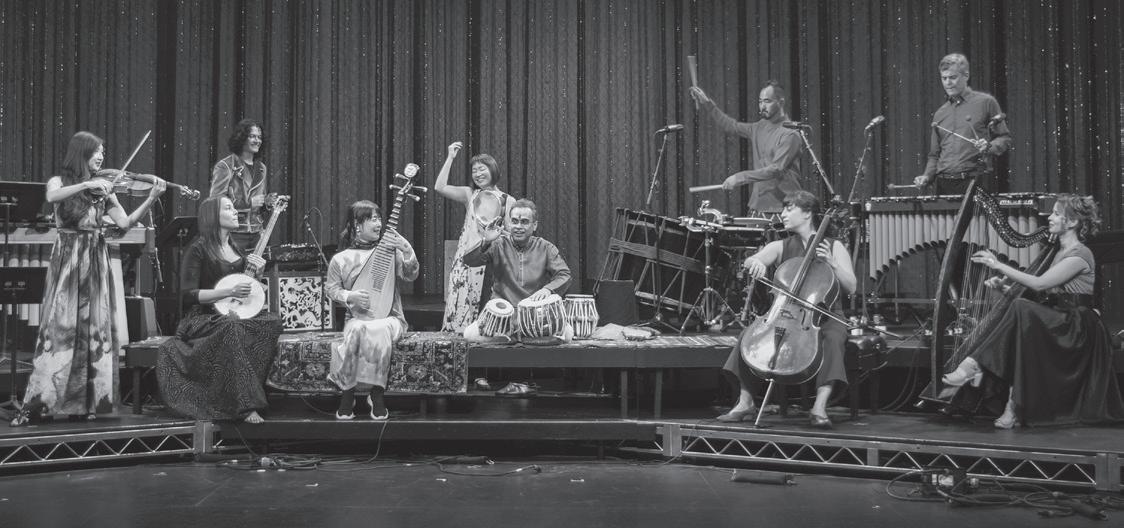
For more information, please visit Silkroad.org.


Rhiannon Giddens
Rhiannon Giddens has made a singular, iconic career out of stretching her brand of folk music, with its milesdeep historical roots and contemporary sensibilities, into just about every field imaginable. A two-time Grammy Award-winning singer and instrumentalist, MacArthur “Genius Grant” recipient and composer of opera, ballet and film, Giddens has centered her work around lifting up people whose contributions to American musical history have previously been overlooked or erased, and advocating for a more accurate understanding of the country’s musical origins through art.
Giddens also is exploring other mediums and creative possibilities just as actively as she has American musical history. She wrote the opera Omar with film composer Michael Abels (Get Out, Us, Nope), which received the 2023 Pulitzer Prize in Music; with her partner Francesco Turrisi she wrote and performed the music for Black Lucy and the Bard, which was recorded for PBS’ Great Performances; and she has appeared on the ABC hit drama Nashville as well as Ken Burns’ Country Music series on PBS.
Giddens has published children’s books and written
and performed music for the soundtrack of Red Dead Redemption II, one of the bestselling video games of all time. She sang for the Obamas at the White House; is a three-time NPR Tiny Desk Concert alum; and hosts her own show on PBS, My Music with Rhiannon Giddens, as well as the Aria Code podcast.
As Pitchfork once said, “few artists are so fearless and so ravenous in their exploration” – a journey that has led to NPR naming her one of its 25 Most Influential Women Musicians of the 21st Century and to American Songwriter calling her “one of the most important musical minds currently walking the planet.”
Her third solo studio album, You’re The One, released August 18 on Nonesuch Records.
Special Thanks
photo: Adam Gurczak
52 (805) 893-3535 | www.ArtsAndLectures.UCSB.edu
Robin Wall Kimmerer
Braiding Sweetgrass: Indigenous Wisdom, Scientific Knowledge and the Teachings of Plants
Tue, Nov 14 / 7:30 PM / Campbell Hall
Event Sponsors: G.A. Fowler Family Foundation and Natalie Orfalea Foundation & Lou Buglioli
Justice for All Lead Sponsors: Marcy Carsey, Connie Frank & Evan Thompson, Eva & Yoel Haller, Dick Wolf, and Zegar Family Foundation
Presented in association with UCSB American Indian and Indigenous Collective, UCSB Bren School and UCSB Environmental Studies Program
Robin Wall Kimmerer is a mother, scientist, decorated professor and enrolled member of the Citizen Potawatomi Nation. She is the author of Braiding Sweetgrass: Indigenous Wisdom, Scientific Knowledge and the Teachings of Plants, which has earned Kimmerer wide acclaim. Her first book, Gathering Moss: A Natural and Cultural History of Mosses, was awarded the John Burroughs Medal for outstanding nature writing, and her other work has appeared in Orion, Whole Terrain and numerous scientific journals. In 2022, Braiding Sweetgrass was adapted for young adults by Monique Gray Smith. This new edition reinforces how wider ecological understanding stems from listening to the earth’s oldest teachers: the plants around us.
Kimmerer tours widely, has been featured on NPR’s On Being with Krista Tippett and in 2015 addressed the general assembly of the United Nations on the topic of “Healing Our Relationship with Nature.” Kimmerer is a State University of New York (SUNY) distinguished teaching professor of environmental biology and the founder and director of the Center for Native Peoples and the Environment, whose mission is to create programs which draw on the wisdom of both Indigenous and scientific knowledge for our shared goals of sustainability. In 2022 she was named a MacArthur fellow.
As a writer and a scientist, her interests in restoration include not only restoration of ecological communities, but restoration of our relationships to land. She holds a bachelor’s degree in botany from SUNY College of Environmental Science and Forestry, a master’s and
doctorate in botany from the University of Wisconsin and is the author of numerous scientific papers on plant ecology, bryophyte ecology, traditional knowledge and restoration ecology. She lives on an old farm in upstate New York, tending gardens both cultivated and wild.
Books are available for purchase in the lobby and a signing follows the event
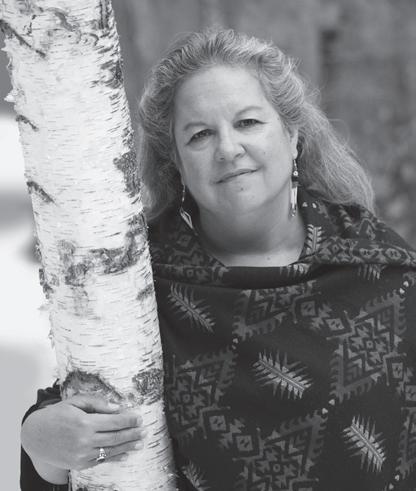
53 (805) 893-3535 | www.ArtsAndLectures.UCSB.edu
photo: Dale Kakkak
Béla Fleck, Zakir Hussain and Edgar Meyer

Featuring Rakesh Chaurasia As We Speak
Wed, Nov 15 / 8 PM / Campbell Hall
Program will be announced from the stage
Running time: approx. 150 minutes, including intermission
Event Sponsor: Marilyn & Dick Mazess
Presented in association with UCSB Department of Music
Béla Fleck, banjo
Zakir Hussain, tabla
Edgar Meyer, bass
Rakesh Chaurasia, bansuri
About the Program
The first time banjo legend Béla Fleck, tabla master Zakir Hussain and double bass virtuoso Edgar Meyer got together to make an album, it was to write, not to play.
When Fleck and Meyer were looking for a third partner for a triple concerto they had been commissioned to write to mark the opening of Nashville’s Schermerhorn Symphony Center, they thought of Hussain, who was quite interested in orchestral writing. “We thought we could learn a whole lot from this guy!” says Fleck. The result was The Melody of Rhythm (2009), recorded with the Detroit Symphony Orchestra under Leonard Slatkin.
It wasn’t until the three began touring to promote the album that the trio’s true potential became apparent. Although each had a base in a different musical realm – bluegrass for Fleck, Indian classical music for Hussain and Western classical music for Meyer – they shared a gift for improvisation as well as an ability to reach across musical genres as casually as neighbors might chat over a backyard fence. “When we are performing on stage, in composing mode or creating mode, we are basically having a conversation,” says Hussain. “So the music emerges as we speak.”
Hence As We Speak, an album that not only showcases the group’s breathtaking abilities as instrumentalists, but underscores the wide range of musical influences at their command. Across a dozen tracks, the group glides easily between the cerebral complexity of Indian rhythm and the gut-level groove of a funky bass line, sounding equally at home with the rigors of raga.
Adding to that magic is Rakesh Chaurasia, who plays bansuri, an Indian bamboo flute. When the trio was touring India, Hussain – who knew Chaurasia through his uncle, Indian flute legend Pandit Hariprasad Chaurasia – invited the younger flautist to sit in, and the chemistry was immediately apparent. “I think we wanted to see if we could do something a little more organic with just a small group,” says Meyer. “And to have somebody who plays as beautifully as Rakesh join us really opened it up to a more lyrical and melodic situation.”
“What I think is good about this quartet is that everybody has to stretch in the direction of the other people,” adds Fleck. “To me, a collaboration where nobody changes is not a collaboration. It’s a mashup. And there’s nothing wrong with that. But I like a collaboration where I have to learn a bunch of new things from the other people. And in this case, I’m learning like crazy.”
54 (805) 893-3535 | www.ArtsAndLectures.UCSB.edu
Béla Fleck
Few musicians in any category seem as uncategorizable as Béla Fleck. After initially making his mark with the progressive bluegrass group New Grass Revival, Fleck proceeded to take his instrument, as New York Times critic Jon Pareles noted, “to some very unlikely places.” He formed the Flecktones, a groundbreaking group whose repertoire ranged from fusion to Bach; the group celebrates its 35th anniversary this year. In addition, he has played jazz with Chick Corea, American roots with his partner, banjoist Abigail Washburn, written concertos for banjo and orchestra and created a documentary film and album, Throw Down Your Heart, that examined the banjo’s African roots. Along the way, he has won 16 Grammys across 10 categories.
Zakir Hussain
The preeminent classical tabla virtuoso of our time, Zakir Hussain is appreciated as one of the world’s most esteemed and influential musicians – one whose mastery of his percussion instrument has taken it to a new level, transcending cultures and national borders. A child prodigy, accompanying India’s greatest musicians and dancers from his early years, and touring internationally while still in his teens, Hussain has been at the helm of many genre-defying collaborations including Shakti, Remember Shakti, Masters of Percussion, Diga, Tabla Beat Science, CrossCurrents, Sangam and Grammy award-winners Planet Drum and Global Drum Project. A revered composer and educator, Hussain is the recipient of countless honors, most recently the 2022 Kyoto Prize in Arts and Philosophy, the 2022 Aga Khan Music Award for Lifetime Achievement, and in January 2023, the title of Padma Vibhushan, India’s second highest civilian award.
Edgar Meyer
Aptly described by The New Yorker as “the most remarkable virtuoso in the relatively un-chronicled history of his instrument,” double bassist and composer Edgar Meyer is at home in a broad spectrum of musical styles. A MacArthur Fellow and Avery Fisher Prize winner, he is eminently at home within classical music, both performing traditional works and also his significant catalog of original solo, chamber and orchestral pieces. His 30-year relationship with Yo-Yo Ma has yielded seven recordings together, and his upcoming projects include a duo recording with jazz bassist Christian McBride and a recording of all four of his concertos with The Knights and the Scottish Ensemble, produced by Chis Thile.
Rakesh Chaurasia
Like Zakir Hussain, Rakesh Chaurasia comes from Indian classical music royalty. His uncle, Pandit Hariprasad Chaurasia, is widely considered the greatest bansuri player in India, and Rakesh – who started playing at age five – is deemed his most brilliant student. Not only has he mastered the techniques of Indian classical music, he has developed additional techniques allowing him to venture into other styles of playing, particularly with his crossover band Rakesh and Friends. A composer as well as flautist, he has written and performed on numerous Indian movie soundtracks, and in 2007 was awarded the Indian Music Academy Award.
Special Thanks
55 (805) 893-3535 | www.ArtsAndLectures.UCSB.edu
Adam
Grant Hidden Potential: The Science of Achieving Greater Things
Thu, Nov 16 / 7:30 PM / Arlington Theatre
Lead Sponsor: Jillian & Pete Muller

Adam Grant has been Wharton’s top-rated professor for seven straight years. As an organizational psychologist, he is a leading expert on how we can find motivation and meaning, rethink assumptions and live more generous and creative lives. He has been recognized as one of the world’s 10 most influential management thinkers and Fortune’s 40 under 40.

He is the No. 1 New York Times bestselling author of five books that have sold millions of copies and been translated into 45 languages: Think Again, Give and Take, Originals, Option B and Power Moves. His books have been named among the year’s best by Amazon, Apple, the Financial Times, and The Wall Street Journal. His viral piece on languishing was the most-read New York Times article of 2021 and the most-saved article across all platforms. Grant’s newest book, Hidden Potential, was published in October 2023.
Grant hosts the TED podcasts Re:Thinking and WorkLife
His TED talks on languishing, original thinkers, and givers and takers have over 30 million views. He has received a standing ovation at TED and was voted the audience’s favorite speaker at The Nantucket Project. His speaking and consulting clients include Google, the NBA, Bridgewater and the Gates Foundation. He writes on work and psychology for The New York Times, has served on the Defense Innovation Board at the Pentagon, and has been honored as a Young Global Leader by the World Economic Forum. He has over 8 million followers on social media and features new insights in his free monthly newsletter, GRANTED.
Grant was profiled in The New York Times Magazine cover story, “Is Giving the Secret to Getting Ahead?” He was tenured at Wharton while still in his 20s, and has received the Excellence in Teaching Award for every class that he has taught. He is the founder and host of the Authors@ Wharton speaker series and co-director of Wharton People Analytics. He curates the Next Big Idea Club along with Susan Cain, Malcolm Gladwell and Dan Pink, handpicking two new books each quarter for subscribers and donating 100% of profits to provide books for children in under-resourced communities. He and his wife Allison have published a children’s picture book on generosity, The Gift Inside the Box
Grant earned his doctorate in organizational psychology from the University of Michigan and his bachelor’s degree from Harvard University. He has received awards for distinguished scholarly achievement from the Academy of Management, the American Psychological Association and the National Science Foundation, and been recognized as one of the world’s most-cited, most prolific and most influential researchers in business and economics. His pioneering research has increased performance and reduced burnout among engineers, teachers and salespeople, and motivated safety behaviors among doctors, nurses and lifeguards. He is a former magician and Junior Olympic springboard diver.
Special Thanks
56 (805) 893-3535 | www.ArtsAndLectures.UCSB.edu
photo: Jamey Stillings
Daniil Trifonov, piano
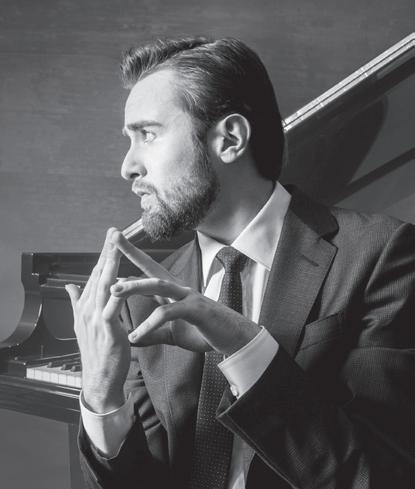
Fri, Nov 17 / 7 PM / Campbell Hall
Running time: approx. 110 minutes, including intermission
Program
Body Text
Jean-Philippe Rameau: Suite in A Minor, RCT 5
Allemande
Courante
Sarabande
Les trois mains
Fanfarinette
La triomphante
Gavotte et six doubles
Wolfgang Amadeus Mozart: Piano Sonata No. 12 in F Major, K. 332
Allegro
Adagio
Allegro assai
Felix Mendelssohn: Variations sérieuses, op. 54
- Intermission -
Ludwig van Beethoven: Sonata No. 29 in B-flat Major, op. 106 (“Hammerklavier”)
Allegro
Scherzo. Assai vivace
Adagio sostenuto
Introduzione. Largo - Fuga: Allegro risoluto
About the Program
Jean-Philippe Rameau (1683-1764):
Suite in A Minor, RCT 5
Unlike Bach, Scarlatti and other contemporaries, Rameau published a mere 60 pieces of keyboard music in his lifetime (Scarlatti composed over 550 keyboard sonatas alone). Despite his relatively small output, Rameau influenced the work of his peers and future generations of composers and became one of France’s leading 18thcentury composers. In addition to his keyboard music, Rameau made significant advancements in music theory and opera. His Treatise on Harmony and the monumental New System of Music Theory quickly made Rameau one of the most discussed musicians of his age. Within his own lifetime Rameau was nicknamed “Newton of Harmony,” and his ideas became foundational to the harmonic theory of Western classical music. A late bloomer, at age 50 Rameau premiered his first opera, Hippolyte et Aricie, igniting a storm of controversy over the music’s complexity and so-called Italianate affectations.
Rameau published his first collection of harpsichord pieces in 1706. In 1723 – the same year Bach was appointed director of church music in Leipzig – Rameau moved to Paris, and by the end of the 1720s he had selfpublished two more collections of harpsichord works. These included the Nouvelles Suites de Pièces de Clavecin, a set of two dance suites including the Suite in A Minor. Five hundred and forty miles away, Bach was concurrently publishing his six keyboard partitas (BWV 825-830).
photo: Dario Acosta
57 (805) 893-3535 | www.ArtsAndLectures.UCSB.edu
Presented in association with the UCSB Department of Music
Most of the movements and variations within the A Minor Suite are split into two sections, often with repeats. Only La Triomphante has a separate form, a rondeau, which alternates the opening theme with contrasting material. Rameau begins with the expected opening dance movements: a richly contrapuntal allemande, then a courante followed by a solemn yet graceful sarabande. One biographer referred to this courante as “one of the summits of Rameau’s art.”
Les Trois Mains takes its name from the use of handcrossing to create the impression of a third hand playing the treble line. The fifth and sixth movements, Fanfarinette and La Triomphante, are character pieces. The first takes its name from the French “fanfaron” (braggart); delicate melodies in the treble suggest a feminine grace while block chords in the bass contribute vivacious swagger. La Triomphante is as exuberant as the title suggests. The suite concludes with a gavotte and six short but intense doubles (variations on the gavotte theme). The variations grow in complexity as they build to a virtuosic finale.
Wolfgang Amadeus Mozart (1756-1791):
Piano Sonata No. 12 in F Major, K. 332
Scholars estimate that Mozart composed this sonata anywhere from 1779 to as late as autumn of 1783. For Mozart, these years were a time of joy and frustration both professional and personal. He successfully premiered two operas, the serious Idomeneo and the comic Singspiel The Abduction From the Seraglio, yet received only a small portion of the profits. While he won increasing recognition through teaching, composing and public performances (including an impromptu keyboard duel with Muzio Clementi held before Emperor Joseph II), financial mismanagement kept him in debt. An on-again, off-again employment in the Viennese court of the Archbishop Colloredo left Mozart yearning for more respectable employment. His perceived impudence led to a final dismissal capped, in the composer’s words, “with a kick on my ass... by order of our worthy Prince Archbishop.” Finding himself fired yet again, Mozart briefly moved in with close family friends, the Webers. Under their roof he began courting their daughter Constanze, causing a small scandal. She moved in with Mozart the following year, putting him in the compromising position of marrying Constanze or compensating her family. The two hastily wed in August of 1782; a begrudging letter of consent from his father Leopold arrived the next day.
The sonata’s first movement is a study in contrasts. The two simple, carefree opening themes are usurped by a stormy minor-key section, the mood darkening as suddenly as a summer picnic threatened by an errant rain cloud. With abrupt forte pulses and the flattening of a few notes, Mozart turns jaunty, jocular syncopation into an aggressive tidal wave.
Mozart subverts expectations in the tuneful Adagio, introducing a major-key theme and immediately restating it in its wistful parallel minor. Save for some sforzandos the music never rises above piano, drawing its power instead from varied harmonies and subtle dynamic accents. After some exposition a trilled half note in the right hand signals a return to the opening themes, this time delivered with filigreed ornamentation.
Beginning with a toccata-like flourish, the technically demanding finale contains a wealth of contrasting ideas equal to the first movement. Florid, sometimes brash virtuoso passages erupt alongside melancholy cantabile themes until the sonata reaches an understated conclusion.
Felix Mendelssohn (1809-1847): Variations sérieuses, op. 54
When a publisher approached Mendelssohn to contribute a composition to his “Album-Beethoven,” Mendelssohn initially declined. Though the project was for a noble cause – raising funds for the erection of a large bronze statue of Ludwig van Beethoven in his hometown of Bonn, Germany – he agreed only when he learned that other prominent pianists including Chopin, Liszt and Beethoven’s pupil Carl Czerny would be contributing. He hoped to submit just a “short song” for the project, but within a few months he had produced what one Mendelssohn scholar proclaimed “arguably the summit of Mendelssohn’s piano music.”
The album consists of ten solo piano works by ten different composers. It opens with a transcription of the Funeral March from Beethoven’s Eroica Symphony by Liszt. Liszt expressed displeasure at the very concept of the album and most of its contents, writing, “If Beethoven were alive, he would give us contributors an enormous kick in the rear.” Save for Mendelssohn’s theme and variations and Chopin’s Prelude in C-sharp minor (op. 45), the remaining works are insubstantial Romantic miniatures including impromptus, a romance sans paroles and a nocturne by Czerny.
58 (805) 893-3535 | www.ArtsAndLectures.UCSB.edu
Mendelssohn’s theme and variations was arguably a perfect tribute. Beethoven’s innovative approach to the genre, most notably in his Diabelli Variations, was well-regarded by his contemporaries and successors including Mendelssohn. Deeply influenced by Beethoven from a young age, as a teenager he fought with his father over the latter’s disdain for “Beethoven and all visionaries.” As an adult he continued to turn to Beethoven: in his final year he gave a performance from memory of Beethoven’s 32 Variations in C minor for the newly-formed London Beethoven Quartet Society.
Despite his initial lack of enthusiasm, Mendelssohn gave the variations great thought. He increased the number of variations, deleted some of the originals, re-ordered the remaining variations and reworked those that made the cut. Plans to include direct allusions to Beethoven were scrapped in favor of an entirely new and cohesive work consisting of seventeen variations plus a coda. The variations are quite short; only the 17th variation and the coda take up more than a page. Following the plaintive theme in D minor, the first nine variations progress in crescendos of increasing dramatic tension. The 10th, a walking-pace fugue, provides brief respite. Only the 14th variation, an anthemic Adagio, is in a major key. Each of the final three variations flows into the next before the coda’s dazzling conclusion.
Ludwig van Beethoven (1770-1827):
Sonata No. 29 in B-flat Major, op. 106 (“Hammerklavier”)
The death of Beethoven’s younger brother, Caspar Carl, from tuberculosis in 1815 ignited a bitter, years-long custody battle for Beethoven’s nephew Karl. Despite an 11th-hour amendment to Caspar Carl’s will granting joint custody to his wife and brother, the pair refused to reconcile (Beethoven nicknamed his sister-in-law “Queen of the Night” after the villainess of Mozart’s Die Zauberflöte). Despite these circumstances Beethoven managed to compose in those years 20 of his 33 “Diabelli” variations, fragments of the Ninth Symphony and his Twenty-ninth Piano Sonata, the Hammerklavier Beethoven’s legal battles drained both his creative energy and his pocketbook. He wrote to his secretary Ferdinand Ries that the Hammerklavier “was written in distressing circumstances, for it is hard to compose almost entirely for the sake of earning one’s daily bread; and that is all I have been able to achieve.” Desperate for funds, he even expressed willingness to publish the work in London with entire movements omitted if it led to better sales.
Of Beethoven’s 32 sonatas, only the Hammerklavier contains the composer’s metronome markings. The windup metronome he used was invented in 1815, by which point the first 27 sonatas had already been completed. The opening tempo marking indicates an imposing 138 beats per minute; the difficulty of this tempo has fueled countless debates regarding the accuracy of Beethoven’s metronome. Franz Liszt, who gave the first public performance of the Hammerklavier 15 years after its publication, faithfully adhered to this marking and chastised anyone who played it slower (though he was known to reduce the tempo of the third movement).
Pianist and teacher Kenneth Drake calls the Hammerklavier “a work of extremes in terms of its length, its technical difficulty and the cerebral concentration it requires. Its allure is its dimensions, a keyboard Ninth Symphony and Grosse Fuge combined under one’s ten fingers.” It begins with a bold upward leap and confident fanfare followed by lyrical calm. This dichotomy of tension and relaxation, of confidence and reticence, of sound and prolonged silence, sets the tone for the movement.
The Scherzo opens with a parody of the first movement’s main theme; the motif of an ascending and descending third figures prominently, almost obsessively. A subtle turn to a minor key in the trio section echoes the opening melody of Beethoven’s Eroica Symphony. This brief movement delights in the unexpected: abrupt shifts in texture, dynamic and tempo punctuate the music; wry pauses interrupt the narrative. A six-octave upward flourish brings back the opening scherzo material, which repeats before a sudden pianissimo finish.
The lengthy third movement forms the emotional core of the Hammerklavier. It has been described as “the apotheosis of pain;” one early Beethoven biographer deemed it a “mausoleum of collective sorrow.” Beethoven makes extensive use of the una corda pedal with detailed instructions on how to use it. This pedal dampens the volume and dulls its tone; here, the effect is one of constrained, ethereal sadness.
Inchoate musical thought struggles to coalesce in the introduction of the final movement. Fragmented material advances in fits and starts until high trills signal the beginning of a massive, three-voiced fugue. The fugue contains three distinct themes, all of which Beethoven develops using a wealth of traditional devices including augmentation (slowing down the original note values), inversion (stating the theme upside down), and stretto (introducing a second statement before the
59 (805) 893-3535 | www.ArtsAndLectures.UCSB.edu
first has finished). At a grand pause halfway through the movement, Beethoven introduces the sweet, songlike third theme, first played una corda. After extensive exploration of these themes, the fugue concludes in a trilling, triumphant fanfare.

Program notes © Andrew McIntyre, 2023
Daniil Trifonov
Grammy Award-winning pianist Daniil Trifonov is a solo artist, champion of the concerto repertoire, chamber and vocal collaborator, and composer. Combining consummate technique with rare sensitivity and depth, his performances are a perpetual source of wonder to audiences and critics alike. He won the Grammy Award for Best Instrumental Solo Album of 2018 with Transcendental, the Liszt collection that marked his third title as an exclusive Deutsche Grammophon artist.
Trifonov undertakes major engagements on three continents in the 2023-2024 season. He performs Brahms’ First Piano Concerto with the Cleveland Orchestra; Brahms’ Second with the Los Angeles and Israel philharmonics; Schumann’s Concerto with the New York Philharmonic; Mozart’s “Jeunehomme” at Carnegie Hall, the Kennedy Center and others with the Rotterdam Philharmonic; Chopin’s First with the Orchestre de Paris; Mason Bates’ Concerto, a work composed for the pianist, with the Chicago Symphony, Orchestra dell’Accademia Nazionale di Santa Cecilia and Deutsches SymphonieOrchester Berlin; and Gershwin and Rachmaninoff concertos with the Philadelphia Orchestra at home and on a European tour. In recital, he tours Europe with cellist Gautier Capuçon and takes a new solo program of Rameau, Mozart, Mendelssohn and Beethoven to cities from Vienna, Barcelona and Milan to Boston, San Francisco and New York, at Carnegie Hall.
Trifonov’s Deutsche Grammophon discography includes the Grammy-nominated live recording of his Carnegie recital debut; Chopin Evocations; Silver Age, for which he received Opus Klassik’s Instrumentalist of the Year/ Piano award; the bestselling, Grammy-nominated double album Bach: The Art of Life; and three volumes of Rachmaninoff works with the Philadelphia Orchestra and Yannick Nézet-Séguin, of which two received Grammy nominations and the third won BBC Music’s 2019 Concerto Recording of the Year. Named Gramophone’s 2016 Artist of the Year and Musical America’s 2019 Artist of the Year, Trifonov was made a Chevalier de l’Ordre des Arts et des Lettres by the French government in 2021.
During the 2010-2011 season, Trifonov won medals at three of the music world’s most prestigious competitions: Third Prize in Warsaw’s Chopin Competition, First Prize in Tel Aviv’s Rubinstein Competition, and both First Prize and Grand Prix in Moscow’s Tchaikovsky Competition. He studied with Sergei Babayan at the Cleveland Institute of Music.
daniiltrifonov.com twitter.com/daniil_trifonov facebook.com/daniiltrifonov.page Instagram.com/daniiltrifonov
Special Thanks
60 (805) 893-3535 | www.ArtsAndLectures.UCSB.edu
Audra McDonald in Concert

Thu, Nov 30 / 7 PM / Campbell Hall
Program will be announced from the stage
Running time: approx. 90 minutes, no intermission
Lead Sponsor: Sara Miller McCune
Audra McDonald is unparalleled in the breadth and versatility of her artistry as both a singer and an actor. The winner of a record-breaking six Tony Awards, two Grammy Awards and an Emmy, in 2015 she was named one of Time magazine’s 100 most influential people and received a National Medal of Arts – America’s highest honor for achievement in the field – from President Barack Obama. In addition to her Tony-winning performances in Carousel, Master Class, Ragtime, A Raisin in the Sun, The Gershwins’ Porgy and Bess and Lady Day at Emerson’s Bar & Grill – the role that also served as the vehicle for her Olivier Award-nominated 2017 debut in London’s West End – she has appeared on Broadway in The Secret Garden; Marie Christine (Tony nomination); Henry IV; 110 in the Shade (Tony nomination); Shuffle Along, or, The Making of the Musical Sensation of 1921 and All That Followed; Frankie and Johnny in the Clair de Lune (Tony nomination); and Ohio State Murders (Tony nomination).
On television, she was seen by millions as the Mother Abbess in NBC’s The Sound of Music Live! and played Dr. Naomi Bennett on ABC’s Private Practice. She won an Emmy Award for her role as host of PBS’ Live From Lincoln Center and has received nominations for Wit, A Raisin in the Sun, and Lady Day at Emerson’s Bar & Grill. Having first appeared on CBS’ The Good Wife, she played Liz Reddick in The Good Fight on Paramount+ and Dorothy Scott in Julian Fellowes’ historical drama The Gilded Age on HBO and HBO Max. On film, she has appeared in Seven Servants, The Object of My Affection, Cradle Will Rock, It Runs in the Family, The Best Thief in the World,
She Got Problems, Rampart, Ricki and the Flash, Disney’s live-action Beauty and the Beast, the movie-musical Hello Again, and MGM’s Aretha Franklin biopic, Respect.
A Juilliard-trained soprano, her opera credits include La voix humaine and Send at Houston Grand Opera, and Rise and Fall of the City of Mahagonny at Los Angeles Opera, where the resulting recording earned her two Grammy Awards. McDonald has issued five solo albums on the Nonesuch label as well as Sing Happy with the New York Philharmonic on Decca Gold. She also maintains a major career as a concert artist, regularly appearing on the great stages of the world and with leading international orchestras. A founding member of Black Theatre United, board member of Covenant House International and prominent advocate for LGBTQAI+ rights, her favorite roles are those performed offstage as an activist, wife to actor Will Swenson and mother.
Audra McDonald appears through arrangement with Alec Treuhaft, LLC.
61 (805) 893-3535 | www.ArtsAndLectures.UCSB.edu
photo: Allison Michael Orenstein
Seong-Jin Cho, piano

Fri, Dec 1 / 7 PM / Campbell Hall
Running time: approx. 118 minutes, including intermission
Program
Franz Joseph Haydn: Piano Sonata in E Minor, Hob. XVI: 34
Presto
Adagio
Vivace molto, innocentemente
Maurice Ravel: Menuet sur le nom d’Haydn
Maurice Ravel: Miroirs
Noctuelles. Très léger
Oiseaux tristes. Très lent
Une barque sur l’océan. D’un rythme souple
Alborada del gracioso. Assez vif
La vallée de cloches. Très lent
- Intermission -
Wolfgang Amadeus Mozart: Adagio in B Minor, K. 540
Franz Liszt: From Années de pèlerinage: Deuxième Année:
“Italie, ” S. 161
Sonetto 47 del Petrarca
Sonetto 104 del Petrarca
Sonetto 123 del Petrarca
Franz Liszt: From Années de pèlerinage: Deuxième Année: “Italie,” S. 161
Après une lecture du Dante. Fantasia quasi sonata
About the Program
Franz Joseph Haydn (1732-1809):
Piano Sonata in E Minor, Hob. XVI: 34
Haydn’s 62 keyboard sonatas offer some of his most original work, yet this large body of music remains largely unfamiliar to audiences today. The keyboard sonatas span Haydn’s creative career – he wrote the earliest about 1750, when he was 18, the last in 1794 when he was 62 – and they have defied easy categorization. These sonatas can be quirky, sometimes consisting of unusual numbers of movements presented in unexpected sequences. They have baffled many performers and audiences, and as late as 1950 the distinguished piano pedagogue Ernest Hutcheson suggested that it did no real harm to the music if performers played individual movements from the sonatas rather than playing them complete. Over the last half-century, we have learned to value these sonatas on their own terms rather than dismissing them because they do not conform to familiar expectations.
The Sonata in E Minor was published in London in January 1784, though it appears to have been written several years earlier. Haydn was at this point a mature composer: he turned 62 in 1784, and he had already composed nearly 80 of his 104 symphonies.
Presented in association with UCSB Department of Music
62 (805) 893-3535 | www.ArtsAndLectures.UCSB.edu
photo: Harald Hoffmann
The sonata’s opening Presto is quite brilliant, with virtuoso passagework and rapid exchanges between the pianist’s hands. After the complex textures of the opening movement, the Adagio – once again in sonata form – seems clarity itself: all the musical interest here is in the right hand, while the left provides understated accompaniment. Haydn proceeds without pause into the finale, marked Molto vivace. It is in rondo form, and the infectious principal theme returns constantly, shaded and colored differently on each appearance, until Haydn drives the sonata to its firm conclusion.
Maurice Ravel (1875-1937): Menuet sur le nom d’Haydn
In early 1909 Jules Ecorcheville, editor of the journal Revue musicale de la S.I.M., wished to observe the centenary of the death of Joseph Haydn, who had died in May 1809. He asked a group of eight French composers to write a short piece based on the musical equivalents of the letters of Haydn’s last name, as determined by Ecorcheville: H
Two of those composers – Saint-Saëns and Gabriel Fauré – declined the invitation (Saint-Saëns objected to Ecorcheville’s musical equivalents), but the remaining six composers each wrote a brief piece to honor that earlier master: Ravel, Debussy, d’Indy, Widor, Hahn and Dukas. These were published in the Revue musicale, and on March 11, 1911, Ennemond Trillat gave the public premiere of all six at a concert of the Societé national at the Salle Pleyel.
Ravel set his piece in a form that Haydn would have recognized – a minuet – but he abandoned Haydn’s three-part form and instead composed a graceful little dance based on the five-note sequence. What makes his Menuet sur le nom d’Haydn so ingenious is that Ravel treats that sequence in a way that might have pleased Arnold Schoenberg: he gives us those notes forward, backward and inverted, carefully pointing out these uses by writing Haydn’s name backwards and upsidedown in the score as they appear. This makes the music sound terribly learned, and it is not. Instead, this graceful and affectionate gesture toward the music of Haydn is pure Ravel.
Maurice Ravel (1875-1937): Miroirs
Ravel wrote the five-movement set of piano pieces entitled Miroirs in the years 1904-1905, when he was 30 years old. This was the period of scandal that arose
when the faculty of the Paris Conservatory one more time blocked Ravel’s attempt to win the Prix de Rome, claiming that he broke too many rules. They were in effect denying the prize to a young man who had become an established composer, and the resulting outcry led to the resignation of some of those who had opposed him. A century later, Miroirs may still sound exotic, but no listener today will find this music difficult. The title Miroirs suggests that Ravel’s attempt here is to reflect an image, and each of the pieces that make up Miroirs piano suggests a “sound-picture” of its title.
The opening title, Noctuelles, translates as “Night Moths,” and the music suggests the fluttering, clumsy flight of moths. The music spills and swirls its way to a calmer center section before the moths resume flight, and the piece ends on delicate wisps of sound. The second piece, Oiseaux tristes (“Sad Birds”), was the first to be written. Ravel himself called this “the most typical in the collection” and described its content: “These are birds lost in the mazes of an extremely dark forest during the hottest hours of summer.” Repeated notes, exotic swirls of sound, and extensive use of rubato mark his portrait of the birds. Audiences may find the third piece, Une barque sur l’océan (“A Barque on the Ocean”), familiar, for Ravel orchestrated it shortly after publishing Miroirs. Here is one of Ravel’s most successful efforts at tone-painting: waves shimmer and fall, the wind whistles and the boat glides and surges across the water. The fourth piece, Alborada del gracioso, is also well-known in its orchestral guise, though Ravel did not orchestrate it until 1918. The title of this colorful music does not translate easily, and the English rendering “Morning Song of the Jester” is prosaic. Himself of Basque origins, Ravel had a special affection for Spanish music throughout his life, and the rhythmic vitality of Alborada shows this influence clearly. The final piece – La vallée des cloches (“The Valley of the Bells”) – is a tone-painting of the sound of church bells. This movement is written on three staves, and Ravel – who said that the inspiration for this music was the church bells of Paris that would ring out at noon –gives us a huge range of bell-sounds, from deep tolling bells to high bells that ring out brightly. Some sense of this music may be found in Ravel’s instructions to the pianist. He asks that the performance be “very gentle and without accents” and specifies twice that the playing should be très calme
Wolfgang Amadeus Mozart (1756-1791): Adagio in B Minor, K. 540
This brief Adagio is one of Mozart’s least-known works for solo piano – and one of his finest. He wrote it on March
A Y D N
A D D G
B
63 (805) 893-3535 | www.ArtsAndLectures.UCSB.edu
19, 1788, during what must have seemed a period of numbing transition for the 32-year-old composer. He had worked for most of the previous year on Don Giovanni, but that opera – successful at its Prague premiere –had not won over the Viennese so readily, and now Mozart was beginning to sense that his position in his adopted city had deteriorated. His financial situation was increasingly precarious, and that summer would come moves to cheaper apartments and painful appeals to friends for assistance.
The Adagio is dark and expressive music, yet one needs to be extremely careful about making easy connections between this music and the details of Mozart’s life. Someone once observed that Mozart would no more consider writing music about how he was feeling than he would consider writing music about what he had had for breakfast – the features of his own life were not the subject of his art. We know virtually nothing about the background of the Adagio or why Mozart wrote it.
What we can feel is the greatness of the music itself, and critics have made some staggering claims on its behalf. Alfred Einstein calls the Adagio “one of the most perfect, most deeply felt and most despairing of all his works,” while Arthur Hutchings names it “Mozart’s finest single work for solo piano.” Yet this music is difficult to describe. One can speak (accurately) of its chromatic writing, surprising dynamic contrasts, unusual leaps across the range of the keyboard, and lean textures without ever getting at the intense quality of this music or at its curious fusion of bleakness and grace. Rather than trying to make tempting connections between Mozart’s life and his art, it is far better to take this brief Adagio for what it is: some of the most expressive music Mozart ever wrote.
Franz Liszt (1811-1886): Selections from Années de pèlerinage: Deuxième Année: “Italie,” S. 161 Liszt and his mistress Marie d’Agoult made an extended visit to Italy in 1838-1839, and they fell in love with the country, its people, its art. While in Italy, Liszt began to sketch a second collection of piano pieces in the manner of the first book of Années de pèlerinage (“Years of Pilgrimage”). Where the first collection was devoted to physical locations in Switzerland, now Liszt changed his focus: the seven pieces of Italie were inspired by varied works of Italian art. While in Italy, Liszt and Marie d’Agoult read through the sonnets of Petrarch together, and Liszt was so struck by these poems that the following year he wrote three songs that set Petrarch’s sonnets 104, 47 and 123. These appear to have been the first songs composed by Liszt, who was 28 at the time.
These dramatic songs have been described as operatic, for they were written for high tenor and go up to high C-sharp. Liszt immediately transcribed the three songs as piano pieces, and these transcriptions were published as a set – in a slightly different order – in 1846. Several years later, Liszt returned to these piano pieces and revised them for inclusion in the second book of Années de pèlerinage.
While the impulse behind these three pieces is lyric, Liszt turned the piano versions into virtuoso keyboard works: moments of melting lyricism will give way almost instantly to bravura writing that demands an absolutely first-class pianist simply to get the notes. All three may end very quietly, but along the way comes some very dynamic and exciting music. Sonetto 47 opens with a brief but impetuous introduction before settling into the main melody of the song, which Liszt marks both con intimo sentimento and sempre dolce and which sings gracefully on syncopated rhythms. The song-theme is elaborated – and the introductory material returns in various forms – before the music closes with a quiet reminiscence of the central theme.
By contrast, the famous Sonetto 104 opens powerfully (Agitato assai), as befits the troubled topic of this sonnet, but this abrupt beginning quickly gives way to the melody of the song, which is then extended at length. The writing for piano is particularly impressive here, with difficult chordal passages, powerful writing in octaves, great cadenza-like flourishes and chains of thirds. After all this energy, the peaceful main theme returns to draw the music to its close on quietly-arpeggiated chords.
The subject of Sonetto 123 is more peaceful, and Liszt marks this setting Lento placido and specifies that the performance should be dolcissimo and espressivo. Despite an occasional outburst, this music remains generally restrained, and in the closing moments there is some lovely use of the piano’s ringing high register, which helps lead the music to its delicate conclusion.
The final work of this set is a sort of companion-piece to the three Petrarch settings, and it was published as the seventh (and final) piece of the Italian book of Années de pèlerinage. Liszt borrowed the elaborate name Après une lecture du Dante from a poem by Victor Hugo and appended his own description fantasia quasi sonata; the work is sometimes known as the “Dante Sonata.” It was written in 1839, the same year as the Petrarch settings, and it was apparently very difficult for Liszt: Marie d’Agoult wrote to a friend to say that its composition “was sending him to the very devil.” Certainly the topic
64 (805) 893-3535 | www.ArtsAndLectures.UCSB.edu
gripped Liszt, for it here inspires some of his most vivid tone-painting.
The “Dante Sonata” opens with powerful descending octaves meant to depict the entry into hell and doubtless inspired by the line “Abandon hope, all ye who enter here.” Liszt underlines this association by having the octaves descend on the interval of a tritone. This unsettling interval (a diminished fifth) has been associated for centuries with the devil: its unresolved dissonance was referred to as the diabolus in musica, and its use was forbidden in some circles. Here that ominous sound makes an ideal accompaniment for our descent into hell, and soon we are plunged into the torment of the damned on music that Liszt marks lamentoso. Liszt biographer Alan Walker notes that one of Liszt’s students – on information provided by the composer – copied the following lines from The Inferno into his own score at this point:
Here sighs, with lamentations and loud moans, Resounded through the air pierced by no star, That e’en I wept at entering. Strange tongues, Horrible cries, words of pain, Tones of anger, voices deep and hoarse, With hands together smote that swelled the sounds, Made up a tumult, that for ever whirls Round through that air with solid darkness stained, Like to the sand that in the whirlwind flies.
Consolation comes with the singing and serene second subject (perhaps a vision of heaven from out of the pit of hell), though Walker points out that this is ingeniously derived from the horrifying lamentation theme. Liszt then extends both these ideas through some furious development – the work is not so much in the sonata form that its title implies as a sort of free expansion of the fundamental themes. There are moments of radiant calm along the way, but finally Liszt drives the “Dante Sonata” to a close that is both dramatic and sonorous.
Program notes by Eric Bromberger
Seong-Jin Cho
Seong-Jin Cho, with his innate musicality and overwhelming talent, has become a renowned pianist, admired globally as one of his generation’s leading artists. His thoughtful and poetic, assertive and tender, virtuosic and colourful playing can combine panache with purity and is driven by an impressive natural sense of balance.
In 2015, Cho was brought to the world’s attention when he won First Prize at the Chopin International Competition in Warsaw. Since then, his career has been
on a rapid ascent. In early 2016, he signed an exclusive contract with Deutsche Grammophon, and in 2023 Cho was awarded the prestigious Samsung Ho-Am Prize in the Arts. An artist in high demand, Cho frequently works with prestigious orchestras including Berliner Philharmoniker, Wiener Philharmoniker and London Symphony Orchestra, among others. Conductors he regularly collaborates with include Myung-Whun Chung, Gustavo Dudamel, Andris Nelsons, Yannick Nézet-Séguin, Gianandrea Noseda, Sir Simon Rattle, Santtu-Matias Rouvali, Esa-Pekka Salonen and Lahav Shani.
In the 2023-2024 season, Cho’s highlights include his highly-anticipated debut at the Salzburger Festspiele, performing with Mozarteumorchester and Ivor Bolton. He is also set to return to London’s BBC Proms with the Philharmonia Orchestra and Santtu-Matias Rouvali. Cho’s extensive touring includes performances with the Berliner Philharmoniker and Kirill Petrenko in Korea, and with the Gewandhausorchester Leipzig and Andris Nelsons in Korea and Japan. He will make anticipated debuts with The Cleveland, San Francisco and Chicago Symphony Orchestras.
As a sought-after recitalist, Cho graces prestigious concert halls worldwide, including Carnegie Hall, Concertgebouw Amsterdam and Berliner Philharmonie. He has released several albums on the Yellow Label to critical acclaim, most recently The Handel Project in 2023.
Born in 1994 in Seoul, Seong-Jin Cho was the youngest winner of Japan’s Hamamatsu International Piano Competition in 2009; and at 17, he won Third Prize at the International Tchaikovsky Competition in Moscow. From 2012-2015, he studied with Michel Béroff at the Conservatoire National Supérieur de Musique de Paris. Currently based in Berlin, he continues to enthrall audiences worldwide.
Seong-Jin Cho records exclusively for Deutsche Grammophon

For more information on Seong-Jin Cho, visit www.seongjin-cho.com
Management for Seong-Jin Cho: Primo Artists, New York, NY www.primoartists.com
Special Thanks
65 (805) 893-3535 | www.ArtsAndLectures.UCSB.edu
About the Ensemble
Part of the romance of Mariachi songs is that all things are possible. The humor, the spirit and even the bittersweet inspire us to a world where we live out our dreams.
In that same way, much of the excitement of Jóse Hernàndez’ Mariachi Sol de México is that all things mariachi are possible. While his family tree is rooted in five generations of mariachi musicians that hail from La Sierra del Tigre region of Jalisco, Hernàndez built on that foundation to grow mariachi music in new lands, in new musical genres and in the hearts of new audiences.
The impact of José Hernàndez and his Sol de Mexico on mariachi and all music is undeniable. After forming Mariachi Sol de México in 1981, Hernàndez’ charismatic arrangements and signature trumpet playing made the group an instant and lasting success: Sol de México has played to sold out halls from New York’s Lincoln Center to Viña del Mar in Santiago, Chile. Not only were they the first mariachi group to play concerts in Beijing, China and Pyongyang, North Korea; the shows were sold out! They have also played for four U.S. presidents (Ronald Reagan, George H.W. Bush, Bill Clinton and George W. Bush), including performances at the White House.
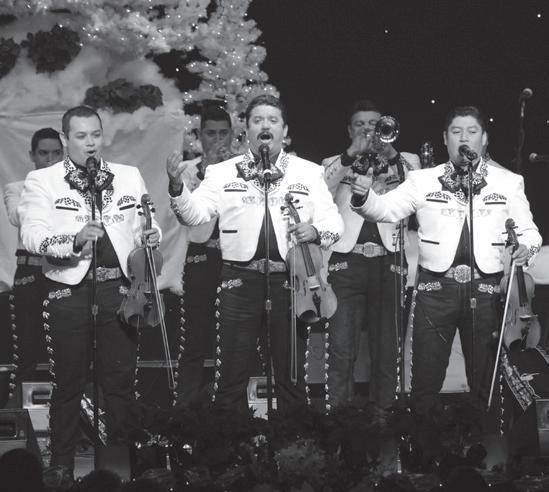
Right from the start, Hernàndez has been an innovator, as evidenced by creating a cohesive collaboration with symphonies throughout the United States. The marriage of the styles is so seamless that it seems natural now. “Everybody in Latin America serenades their girlfriend
Mariachi Sol de México José Hernàndez’ Merry-Achi Christmas
Wed, Dec 6 / 7 PM / Arlington Theatre
Program will be announced from the stage
or their wife with mariachi music – because they see it in the movies. But it has evolved so much over the last 20 years it’s almost like a classical art form,” Hernàndez says. Indeed, the theatrical aspect of Sol de México’s performances has been an attraction to Hollywood for soundtracks, where Hernàndez has provided music since the 1980s. The group’s music was featured in the movie Glory Road and in the Academy Award-nominated film Seabiscuit
Also under Hernàndez’ guiding hands, the art form has taken on many other successful, fun and creative styles – bringing more generations into the mariachi family. He created Mariachi Reyna de Los Angeles, America’s first all-female mariachi ensemble. In 1991 he formed a children’s music foundation, the Mariachi Heritage Society.
Sol de México’s versatility has led to fabulous, unexpected collaborations, such as with the Beach Boys and Willie Nelson. Within the world of Latin music, Sol de México has played alongside stars such as Vicente Fernandez, Selena, Jose Feliciano and a record-breaking concert tour with the one and only Luis Miguel. Hernàndez’ records have been nominated for multiple Grammy awards, and it is a tribute to his impact that Sol de México was invited to play at the inaugural Latin Grammy Awards.
But more than awards and credits, it is the passion and love of the mariachi tradition that courses through Hernàndez’ veins into audiences’ hearts. Although he has played for heads of state, it is not surprising to see
66 (805) 893-3535 | www.ArtsAndLectures.UCSB.edu
Hernàndez perform at his famous mariachi restaurant, Cielito Lindo. Arranging and writing mariachi music is a legacy that he respects and loves.
I am a fifth-generation mariachi musician – my dad came here in the 1940s when there was one place in Los Angeles that had mariachi music and the band had to pay the restaurant owner 25 cents per song to make up for the lost jukebox quarter. But my father always said that the day mariachi music is work is the day you die.
…Que Viva Mariachi indeed!
www.soldemexicomusic.com facebook.com/mariachisoldemexicodejosehernandez twitter.com/JoseSoldeMexico


Jóse Hernàndez
José Hernàndez envisioned a mariachi ensemble to reflect the passion of the rich cultural heritage to which he belonged. When he created Mariachi Sol de México in 1981, he set the Latin musical world afire with new original rhythms, sounds and ideas. Activating this vision has enabled him to truly live as a link to the mariachi medium.
An internationally recognized musician, composer and educator, José Hernàndez continues to break boundaries in the world of mariachi.
A fifth-generation mariachi, Hernàndez brings the pleasure of mariachi music to audiences all across the globe. He is the founder of two world-famous mariachi bands: Mariachi Sol de México and Reyna de Los Angeles, America’s first all-female professional mariachi band.
Hernàndez continues to advance the art of mariachi with daring new compositions and arrangements. He has composed, arranged and provided music for 15 Sol de México albums. He sings and plays trumpet, violin, guitarrón and vihuela, and has performed in some of the most renowned venues around the world. He has recorded with the most respected and recognized names in the industry including Selena, Vicente Fernandez, Luis Miguel, Bryan Adams and the Beach Boys, and has received four Grammy nominations.
Hernàndez’ musical inspirations are rich and diverse, ranging from Leonard Bernstein to Augustine Lara, Glenn Miller to José Alfredo Jimenez. One of his proudest achievements is establishing the Sol de México symphony orchestra, bringing this powerful and vibrant sound to mariachi lovers around the world.
An impassioned ambassador of mariachi music, he is working hard to inspire and empower the next generation of musicians through the educational initiatives he has developed: the Mariachi Nationals and Summer Institute and the Mariachi Heritage Society.
Special Thanks
67 (805) 893-3535 | www.ArtsAndLectures.UCSB.edu
Samara Joy A Joyful Holiday Featuring The McLendon Family
Fri, Dec 8 / 8 PM / Granada Theatre
Program will be announced from the stage
With her Grammy-Award winning and chart-topping album Linger Awhile, 23-year-old Samara Joy makes her case to join the likes of Sarah, Ella and Billie as the next mononymous jazz singing sensation recorded by the venerable Verve Records. Her voice, rich and velvety yet precociously refined, has already earned her fans like Anita Baker and Regina King and appearances on the TODAY Show, The Tonight Show with Jimmy Fallon, The Late Show with Stephen Colbert, CBS Mornings, The Kelly Clarkson Show, The Jennifer Hudson Show and more, in addition to millions of likes on TikTok – cementing her status as perhaps the first Gen Z jazz singing star. The New York Times praised the “silky-voiced rising star” for “helping jazz take a youthful turn” while NPR All Things Considered named her a “classic jazz singer from a new generation.” In February 2023, Samara Joy took home two Grammys: Best Jazz Vocal Album and the auspicious Best New Artist award.
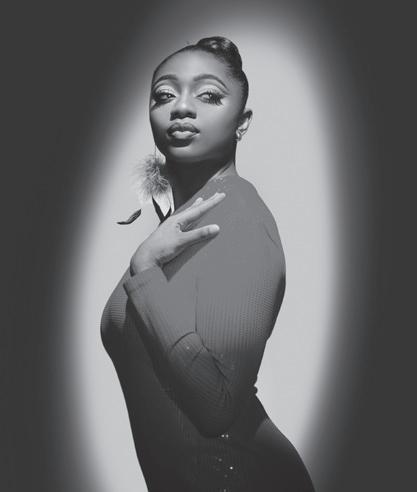
Samara Joy is still relatively new to jazz. Growing up in the Bronx, it was music of the past – the music of her parents’ childhoods, as she put it – that she listened to most. She treasures her musical lineage, which stretches back to her grandparents Elder Goldwire and Ruth McLendon, both of whom performed with Philadelphia gospel group the Savettes, and runs through her father, who is a singer, songwriter and producer who toured with gospel artist Andraé Crouch. “Sometimes I catch myself when I’m singing – I’m like, ‘Whoa, that was a dad moment,’” she quips. Eventually, she did follow in the family tradition, singing in church and then with
the jazz band at Fordham High School for the Arts, with whom she won Best Vocalist at Jazz at Lincoln Center’s Essentially Ellington competition. That led to her enrolling in SUNY Purchase’s jazz studies program, where she fell deeply in love with the music.
Though she’s young, she relishes the process of digging through the music’s history. “I think maybe people connect with the fact that I’m not faking it, that I already feel embedded in it,” Joy says. “Maybe I’m able to reach people in person and on social media because it’s real.” The gatekeepers of the jazz world tend to agree: in 2019, she won the Sarah Vaughan International Jazz Vocal Competition, and she’s since performed with luminaries like Christian McBride and Bill Charlap. Legendary late pianist Barry Harris was a particularly important influence and mentor. “You inspired me as well as many others with this fire for teaching and playing that couldn’t be dimmed by anything or anyone,” Joy writes in Linger Awhile’s liner notes, dedicating the project in part to Harris’ memory.
On Linger Awhile, which was produced by Matt Pierson and recorded by Chris Allen at Sear Sound in New York City, Joy is accompanied by esteemed veterans: her former professors, guitarist Pasquale Grasso and drummer Kenny Washington, form the core of the band, which also includes bassist David Wong and pianist Ben Paterson. With ease and a preternatural assurance, Joy swings right alongside them through understated yet powerful renditions of this creative collection of standards.
Jazz Series Lead Sponsor: Manitou Fund
68 (805) 893-3535 | www.ArtsAndLectures.UCSB.edu
There are burnished, gleaming versions of chestnuts in “Misty,” “Linger Awhile” and “Someone to Watch Over Me,” transporting listeners to some romantic, long-lost supper club. Those familiar tunes are listed alongside some more unusual, if equally vintage, selections: “Sweet Pumpkin,” a Ronnell Bright tune performed by the likes of Blue Mitchell and Gloria Lynne, and “Can’t Get Out of This Mood,” which Joy uncovered on a collection of Sarah Vaughan rarities, add a lilting, upbeat bent to the album’s selections.
“When I heard the lyrics, I was like, ‘OK, this is positive –it’s not as much about heartbreak,’” Joy says of “Can’t Get Out of This Mood.” “I liked the way I felt after hearing her singing it, and hopefully I can create the same feeling for people when they hear that song.”
Joy aims for the opposite on a spine-tingling version of “Guess Who I Saw Today,” originally popularized by Nancy Wilson. This gently-grieving rendition showcases the young singer’s exceptional control and range as well as her refined, distinctive style.
Marrying Joy’s interest in classic standards as well as crate-digging is her take on the iconic Thelonious Monk tune “Round Midnight.” Instead of the traditional lyrics, she sings those written by Jon Hendricks, which she had only heard in a vintage television performance by Carmen McRae. “Those lyrics haven’t been recorded that much – so even though it’s a song that a lot of people know, this is a different take on it,” Joy says. It’s the only song on the album with a horn section, including trumpeter Terell Stafford, trombonist Donavan Austin and tenor saxophonist Kendric McCallister, who is responsible for the arrangement, a transformation of Cootie Williams’ original.
A concept that will likely be foreign to many is that of vocalese, a jazz technique showcased across Linger Awhile. “Nostalgia (The Day I Knew)” was the product of a jazz transcription class she took with trumpet master Jon Faddis at SUNY Purchase, in which she took down Fats Navarro’s solo from the original 1947 recording and wrote her own lyrics to that melody – inspired, she quips, by the teen romance novels she was reading. She went through the same process with “I’m Confessin’,” combining that song’s original lyrics with her own, set to Lester Young’s 1952 solo. Especially for a contemporary listener, hearing how seamlessly Joy transforms these instrumental lines into breezy lyrics is astounding.
Also included on Linger Awhile is “Social Call” – co-written by vocalese pioneer Hendricks and Gigi Gryce – a fitting,
beautiful tribute to those who paved the way for Joy’s exploration of this often-overlooked subgenre.
The release is just one more step for the ascendant, two-time Grammy-winning vocalist, who has spent the past several months touring all over the world on increasingly larger stages – still shocked to be performing in front of thousands who hang on every word. “I’m still very much a student, even though I’ve graduated,” Joy says. “So this is only the beginning… there is much, much more to come.”
Special Thanks

69 (805) 893-3535 | www.ArtsAndLectures.UCSB.edu


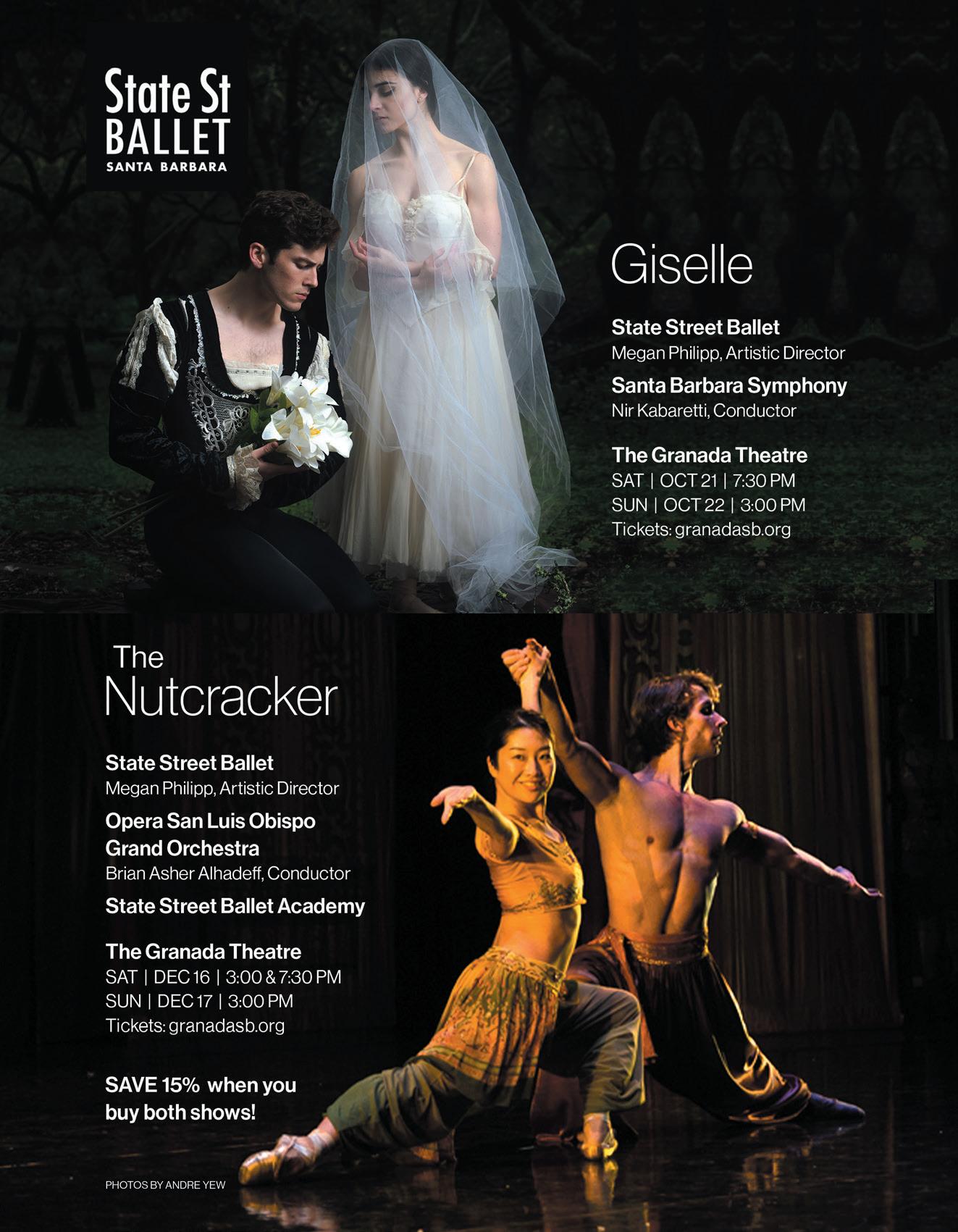




Over 150,000 Titles for Every Age & Interest! Open 9:00am-8:00pm Daily 3321 State Street, Loreto Plaza 805-682-6787 • www.chaucersbooks.com Chaucer's Books Your Local Independent Bookseller Since 1974 Experience luxury where Santa Barbara’s iconic American Riviera meets panoramic ocean views 8 3 0 1 H O L L I S T E R A V E N U E , S A N T A B A R B A R A , C A 9 3 1 1 7 8 0 5 9 6 8 0 1 0 0 R I T Z C A R L T O N C O M / S A N T A B A R B A R A
CELEBRATING THE LEGACY OF WALTER H. CAPPS


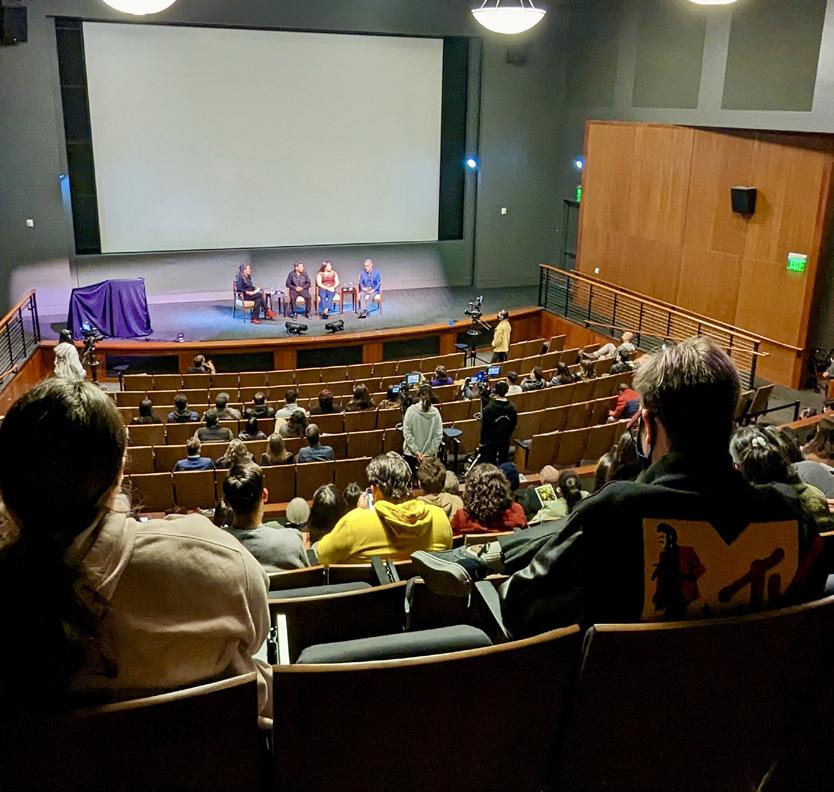
To celebrate and commemorate the legacy of Walter Capps in scholarship, teaching, the humanities, and public service.

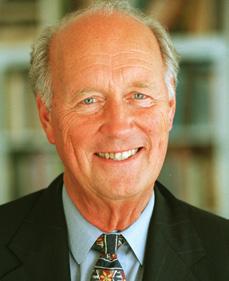
experience transformative cinema At the Carsey-Wolf Center, we pair outstanding film and television with elevated conversation to create transformative encounters with the silver screen. Join us at the Pollock Theater this fall for Revisiting the Classics, a new series featuring iconic works from Buster Keaton, Rainer Werner Fassbinder, and more. Learn more and book tickets at carseywolf.ucsb.edu All events are free and open to the public. Events will take place in the Humanities and Social Sciences Building on Nov. 10 and Campbell Hall on Nov. 11.
will
a two-day
The Walter H. Capps Center
present
series of events on: November 10–11, 2023
Sen. Bob Kerrey Rep. Lois Capps Laura Capps Chancellor Henry T. Yang colleagues former students veterans and more SPEAKERS:

Our new Botanica Afternoon Tea is now available Monday through Friday, 2:30pm to 4pm. CONTACT OUR CONCIERGE TO RESERVE YOUR SPOT. CONCIERGE.ELE@BELMOND.COM (805) 845-5800 800 ALVARADO PL SANTA BARBARA, CA 93103 BELMOND.COM


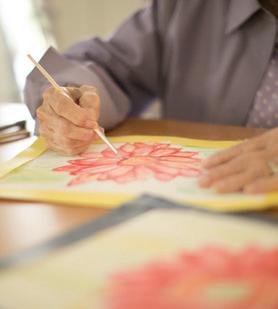



More Community ...Better Retirement Schedule Your Tour Now! 805.687.0793 | vistadelmonte.org 3775 Modoc Road, Santa Barbara, CA 93105 Wellbeing has many sides. I find many of them here, including fitness and aquatics, tai chi, bridge, fine dining, art, music and more. I have cleared the path to find my heart’s desire and enjoy the freedom of a true community. Create Meaningful Connections INDEPENDENT LIVING | ASSISTED LIVING | MEMORY CARE CA License #425800464 COA# 196 We’re an equal opportunity housing provider.
The SBCC Promise
The SBCC Promise provides all recent, local high school graduates with the opportunity to pursue their dreams at Santa Barbara City College, covering all fees, books, and supplies for two years.
The SBCC Foundation partners with generous businesses, individuals, and organizations to invest in our community’s college, supporting the SBCC Promise, student success programs, scholarships, emergency grants, and more. Your
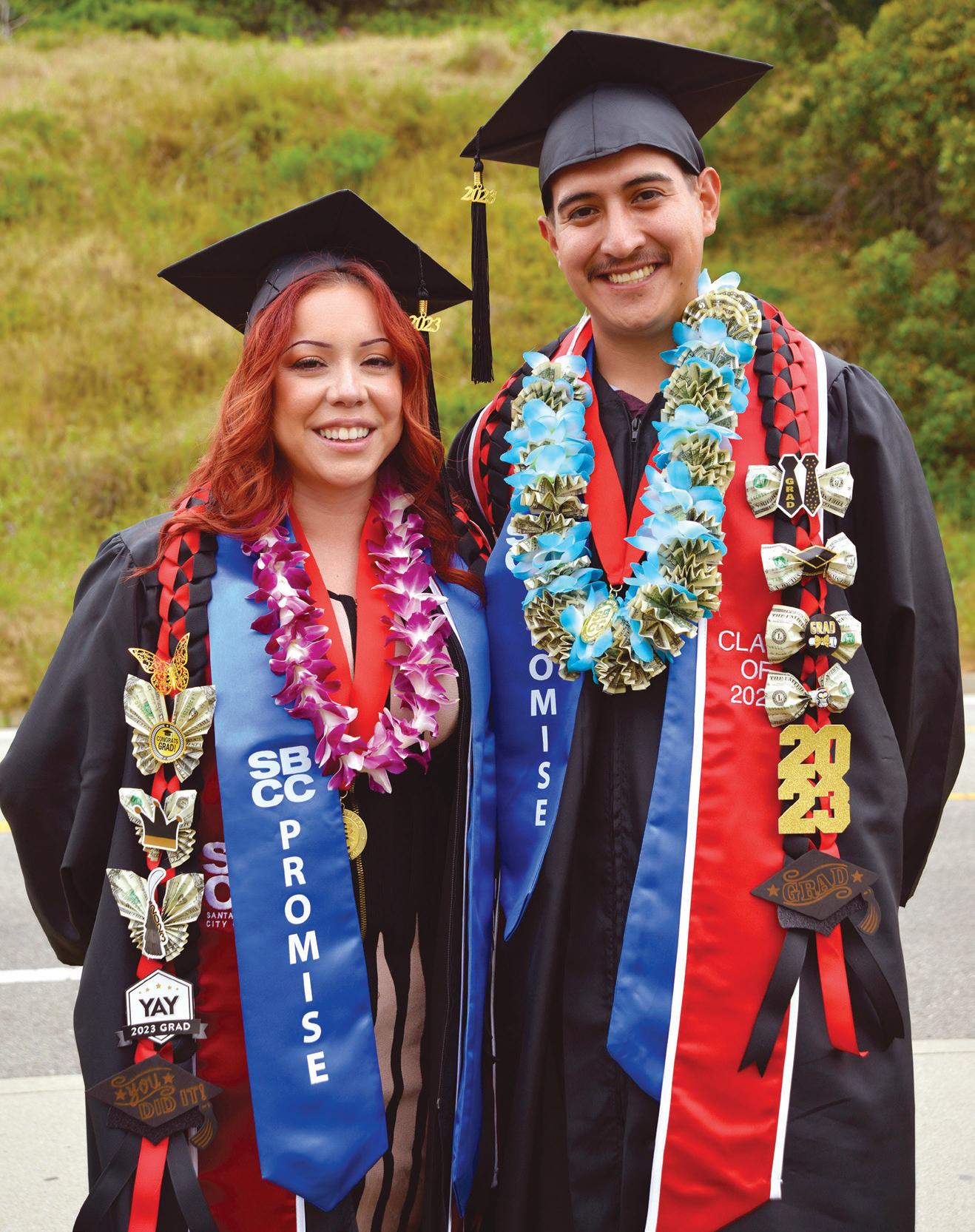
makes it possible.
gift
sbccfoundation.org































 Celesta M. Billeci Miller McCune Executive Director
Celesta M. Billeci Miller McCune Executive Director












 Robin Wall Kimmerer, Nov 14 Bridging Indigenous and scientific land knowledge
Mustafa Suleyman, Oct 5 Creating human-centered Artificial Intelligence
Eddie Ndopu, Nov 2 Championing disability justice
American Railroad : Silkroad Ensemble with Rhiannon Giddens, Nov 9 Amplifying the voices of immigrants who helped shape the nation
Robin Wall Kimmerer, Nov 14 Bridging Indigenous and scientific land knowledge
Mustafa Suleyman, Oct 5 Creating human-centered Artificial Intelligence
Eddie Ndopu, Nov 2 Championing disability justice
American Railroad : Silkroad Ensemble with Rhiannon Giddens, Nov 9 Amplifying the voices of immigrants who helped shape the nation




























 photos: David Bazemore
Jazz Workshop at San Marcos High School with Clarence Penn of Monterey Jazz Festival on Tour
photos: David Bazemore
Jazz Workshop at San Marcos High School with Clarence Penn of Monterey Jazz Festival on Tour











































